Paul van Yperen's Blog, page 63
January 5, 2024
Glynis Johns (1923-2024)
On Thursday, 4 January 2024, Husky voiced Welsh-born stage and film actress, dancer, pianist and singer Glynis Johns (1923-2024) passed away. She is best known for her film roles as a mermaid in the British comedy Miranda (1948) and as suffragette mother Winifred Banks in Walt Disney's Mary Poppins (1964). On Broadway, she created the role of Desiree Armfeldt in 'A Little Night Music', for which she won a Tony Award. Glynis Johns was 100.

Spanish postcard by Archivo Bermejo, no. C 293.
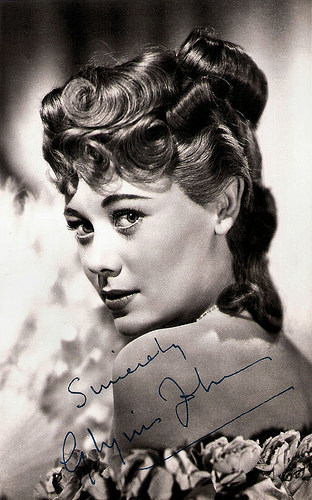
British autograph card. Publicity still for An Ideal Husband (Alexander Korda, 1947).
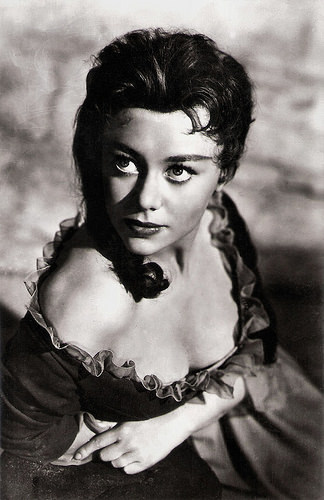
Vintage card. Photo: publicity still for Rob Roy, The Highland Rogue (Harold French, 1953).
A playful mermaid
Glynis Margaret P. Johns was born in 1923 in Pretoria, South Africa. She was the daughter of pianist Alys Maude (née Steele-Payne), and the British stage and film actor Mervyn Johns. Her parents were performing on tour in Pretoria when Glynis was born. Glynis attended Clifton High School in Bristol for a short time. In 1935, she made her first stage appearance in Buckie's Bears as a child ballerina.
She made her film debut in the Alexander Korda production South Riding (Victor Saville, 1938) with Edna Best . She had a supporting part in the British war drama 49th Parallel/The Invaders (1941), the third film made by the writer-director team of Michael Powell and Emeric Pressburger.
In 1944, she appeared with her father in the drama Halfway House (Basil Dearden, 1944) about ten people who are drawn to stay in an old hotel in a remote Welsh village. In 1948 she starred as a beautiful and playful mermaid in the comedy Miranda (Ken Annakin, 1948) and later reprised the role in the sequel, Mad About Men (Ralph Thomas, 1954).
In the aviation drama No Highway in the Sky/No Highway (Henry Koster, 1951) she co-starred with James Stewart and . She then co-starred with David Niven in the comedy Appointment with Venus (Ralph Thomas, 1951), and with Alec Guinness in the film version of Arnold Bennett's novel The Card (Ronald Neame, 1952). She was voted by British exhibitors the tenth most popular local star at the box office in 1951 and 1952.
Johns then made a successful transition to Hollywood, appearing in Personal Affair (Anthony Pelissier, 1953), starring Gene Tierney , and in The Court Jester (Melvin Frank, Norman Panama, 1956) as Danny Kaye 's love interest. The following year, she starred in the Christmas film All Mine to Give (Allen Reisner, 1957). Johns received an Academy Award nomination for Best Supporting Actress for The Sundowners (Fred Zinnemann, 1960), starring Deborah Kerr and Robert Mitchum .
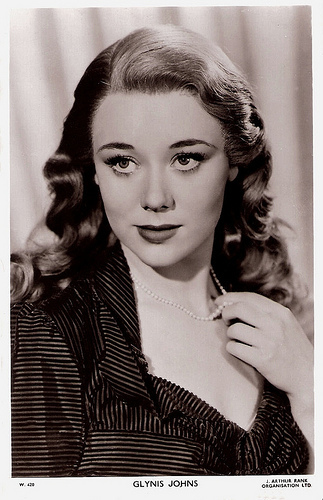
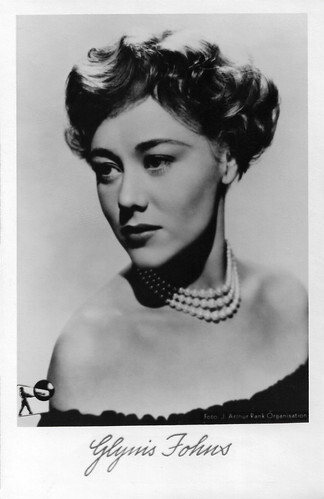
Vintage postcard. Photo: J. Arthur Rank Organisation.
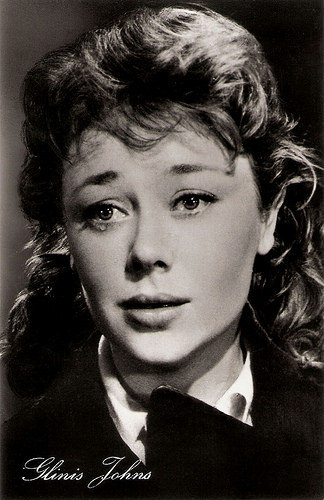
East-German postcard by VEB Progress Film-Vertrieb, Berlin, no. 1351, 1960. Photo: publicity still for Personal Affair (Anthony Pelissier, 1953).
Mary Poppins
During the 1960s, Glynis Johns often appeared on American television. She portrayed Kitty O'Moyne, an Irish immigrant in the TV crime drama The Roaring 20s (1961). In the 1962–1963 television season, Johns guest starred in the anthology series The Lloyd Bridges Show. She and Keith Andes then starred as a married couple in her eponymous television series Glynis (1963), in which she played a mystery writer and Andes a criminal defence attorney. The program was cancelled after thirteen episodes.
Her feature films include The Cabinet of Caligari (Roger Kay, 1962) and The Chapman Report (George Cukor, 1962). One of Glynis Johns’ best-known roles is Winifred Banks in Walt Disney ’s fantasy Mary Poppins (Robert Stevenson, 1964), starring Julie Andrews . Winifred Banks is the easily distracted mother of the Banks family and is depicted as a member of the suffragette movement. On TV she was the villainess Lady Penelope Peasoup in the TV Series Batman (1967). She played with Richard Burton in the British film Under Milk Wood (Andrew Sinclair, 1972) based on the radio play of the same name by the Welsh writer Dylan Thomas.
Johns also appeared on stage, most memorably in the original Broadway production of Stephen Sondheim's musical A Little Night Music (1973). Stephen Sondheim wrote the song Send in the Clowns with shorter phrasing to accommodate her husky voice. Johns won a Tony award for her role in the musical. At the West End in London, she appeared in the play Cause Célèbre (1978), by Terence Rattigan. During the first season of the hit TV sitcom Cheers (1983), Johns guest starred as the mother of Diane (Shelley Long), Helen Chambers. Due to a stipulation in Diane's late father's will, Helen, a rich eccentric, will lose all her money unless Diane is married by the next day.
From 1988-1989, Johns played Trudie Pepper, a senior citizen living in an Arizona retirement community, in the television sitcom Coming of Age. She also played opposite Rex Harrison in his final acting role in a Broadway revival of W. Somerset Maugham's play The Circle (1989-1990). Harrison's death from cancer ended the show's run. In 1998, Johns starred as Myrtle Bledsoe in the premiere of Horton Foote's A Coffin in Egypt at the Bay Street Theatre. Her last film appearance to date was as Molly Shannon's grandmother in the comedy Superstar (Bruce McCulloch, 1999).
Glynis Johns married four times. Her first husband was Anthony Forwood (1942–1948), with whom she had her only child, Gareth Forwood (1945–2007), an actor, who predeceased his mother. Later, Anthony Forwood was Sir Dirk Bogarde 's longtime partner and manager until Forwood died in 1988. Johns’ other husbands were David Ramsey Foster (1952-1956), a chairman of Colgate Palmolive International, Cecil Peter L. Henderson (1960-1962) and the writer Elliot Arnold (1964-1973). Glynis Johns died in Los Angeles at an assisted living home, on 4 January 2024, 91 days after she had turned 100.
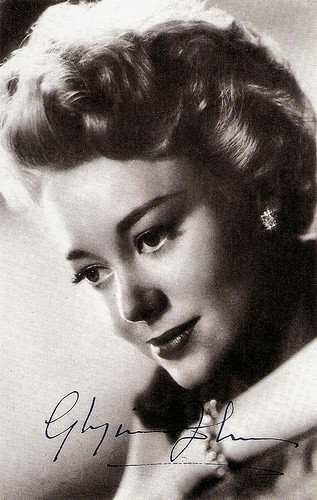
British postcard in the Film Star Autograph Portrait series by L.D. LTD., London, no. 66. Photo: J. Arthur Rank Organisation. Publicity still for The Seekers (Ken Annakin, 1954).
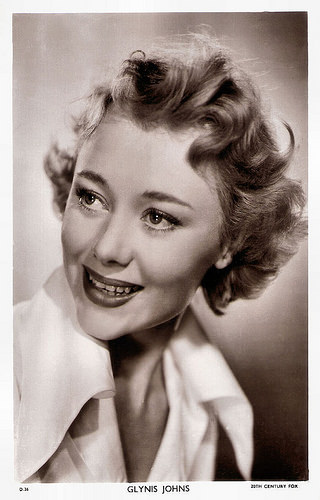
British postcard in the Picturegoer series, London, no. D 36. Photo: 20th Century Fox.
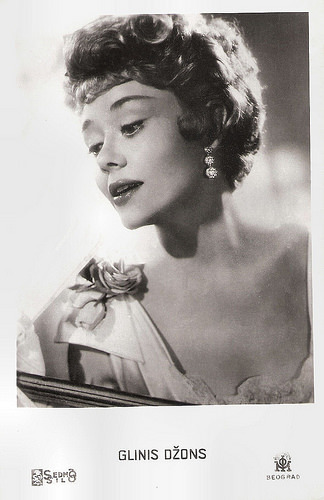
Yugoslavian postcard by Sedmo Silo / IOM, Beograd.
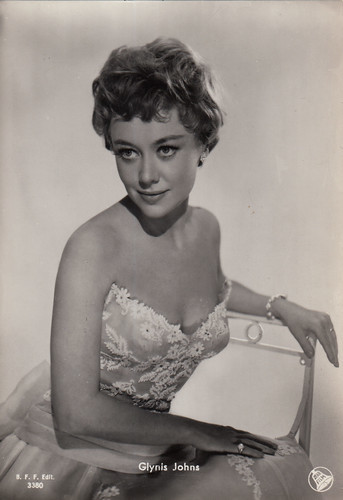
Italian postcard by B.F.F. Edit., no. 3380. Photo: Dear Film. Collection: Marlene Pilaete.
Sources: (IMDb), Film Reference, Wikipedia and .

Spanish postcard by Archivo Bermejo, no. C 293.

British autograph card. Publicity still for An Ideal Husband (Alexander Korda, 1947).

Vintage card. Photo: publicity still for Rob Roy, The Highland Rogue (Harold French, 1953).
A playful mermaid
Glynis Margaret P. Johns was born in 1923 in Pretoria, South Africa. She was the daughter of pianist Alys Maude (née Steele-Payne), and the British stage and film actor Mervyn Johns. Her parents were performing on tour in Pretoria when Glynis was born. Glynis attended Clifton High School in Bristol for a short time. In 1935, she made her first stage appearance in Buckie's Bears as a child ballerina.
She made her film debut in the Alexander Korda production South Riding (Victor Saville, 1938) with Edna Best . She had a supporting part in the British war drama 49th Parallel/The Invaders (1941), the third film made by the writer-director team of Michael Powell and Emeric Pressburger.
In 1944, she appeared with her father in the drama Halfway House (Basil Dearden, 1944) about ten people who are drawn to stay in an old hotel in a remote Welsh village. In 1948 she starred as a beautiful and playful mermaid in the comedy Miranda (Ken Annakin, 1948) and later reprised the role in the sequel, Mad About Men (Ralph Thomas, 1954).
In the aviation drama No Highway in the Sky/No Highway (Henry Koster, 1951) she co-starred with James Stewart and . She then co-starred with David Niven in the comedy Appointment with Venus (Ralph Thomas, 1951), and with Alec Guinness in the film version of Arnold Bennett's novel The Card (Ronald Neame, 1952). She was voted by British exhibitors the tenth most popular local star at the box office in 1951 and 1952.
Johns then made a successful transition to Hollywood, appearing in Personal Affair (Anthony Pelissier, 1953), starring Gene Tierney , and in The Court Jester (Melvin Frank, Norman Panama, 1956) as Danny Kaye 's love interest. The following year, she starred in the Christmas film All Mine to Give (Allen Reisner, 1957). Johns received an Academy Award nomination for Best Supporting Actress for The Sundowners (Fred Zinnemann, 1960), starring Deborah Kerr and Robert Mitchum .


Vintage postcard. Photo: J. Arthur Rank Organisation.

East-German postcard by VEB Progress Film-Vertrieb, Berlin, no. 1351, 1960. Photo: publicity still for Personal Affair (Anthony Pelissier, 1953).
Mary Poppins
During the 1960s, Glynis Johns often appeared on American television. She portrayed Kitty O'Moyne, an Irish immigrant in the TV crime drama The Roaring 20s (1961). In the 1962–1963 television season, Johns guest starred in the anthology series The Lloyd Bridges Show. She and Keith Andes then starred as a married couple in her eponymous television series Glynis (1963), in which she played a mystery writer and Andes a criminal defence attorney. The program was cancelled after thirteen episodes.
Her feature films include The Cabinet of Caligari (Roger Kay, 1962) and The Chapman Report (George Cukor, 1962). One of Glynis Johns’ best-known roles is Winifred Banks in Walt Disney ’s fantasy Mary Poppins (Robert Stevenson, 1964), starring Julie Andrews . Winifred Banks is the easily distracted mother of the Banks family and is depicted as a member of the suffragette movement. On TV she was the villainess Lady Penelope Peasoup in the TV Series Batman (1967). She played with Richard Burton in the British film Under Milk Wood (Andrew Sinclair, 1972) based on the radio play of the same name by the Welsh writer Dylan Thomas.
Johns also appeared on stage, most memorably in the original Broadway production of Stephen Sondheim's musical A Little Night Music (1973). Stephen Sondheim wrote the song Send in the Clowns with shorter phrasing to accommodate her husky voice. Johns won a Tony award for her role in the musical. At the West End in London, she appeared in the play Cause Célèbre (1978), by Terence Rattigan. During the first season of the hit TV sitcom Cheers (1983), Johns guest starred as the mother of Diane (Shelley Long), Helen Chambers. Due to a stipulation in Diane's late father's will, Helen, a rich eccentric, will lose all her money unless Diane is married by the next day.
From 1988-1989, Johns played Trudie Pepper, a senior citizen living in an Arizona retirement community, in the television sitcom Coming of Age. She also played opposite Rex Harrison in his final acting role in a Broadway revival of W. Somerset Maugham's play The Circle (1989-1990). Harrison's death from cancer ended the show's run. In 1998, Johns starred as Myrtle Bledsoe in the premiere of Horton Foote's A Coffin in Egypt at the Bay Street Theatre. Her last film appearance to date was as Molly Shannon's grandmother in the comedy Superstar (Bruce McCulloch, 1999).
Glynis Johns married four times. Her first husband was Anthony Forwood (1942–1948), with whom she had her only child, Gareth Forwood (1945–2007), an actor, who predeceased his mother. Later, Anthony Forwood was Sir Dirk Bogarde 's longtime partner and manager until Forwood died in 1988. Johns’ other husbands were David Ramsey Foster (1952-1956), a chairman of Colgate Palmolive International, Cecil Peter L. Henderson (1960-1962) and the writer Elliot Arnold (1964-1973). Glynis Johns died in Los Angeles at an assisted living home, on 4 January 2024, 91 days after she had turned 100.

British postcard in the Film Star Autograph Portrait series by L.D. LTD., London, no. 66. Photo: J. Arthur Rank Organisation. Publicity still for The Seekers (Ken Annakin, 1954).

British postcard in the Picturegoer series, London, no. D 36. Photo: 20th Century Fox.

Yugoslavian postcard by Sedmo Silo / IOM, Beograd.

Italian postcard by B.F.F. Edit., no. 3380. Photo: Dear Film. Collection: Marlene Pilaete.
Sources: (IMDb), Film Reference, Wikipedia and .
Published on January 05, 2024 22:00
January 4, 2024
Tom Hanks
American actor and film director Tom Hanks (1956) was the first actor after Spencer Tracy (1937/1938) to win the Oscar for best actor twice in a row, in 1993 for Philadelphia and in 1994 for Forrest Gump. He was also lauded for such films as Big (1988), A League of Their Own (1992), Saving Private Ryan (1998) and Cast Away (2000). In 1996, Hanks made his directing debut with That Thing You Do! Hanks' films earned more than $8.4 billion worldwide. This makes him one of the most successful actors in film history.
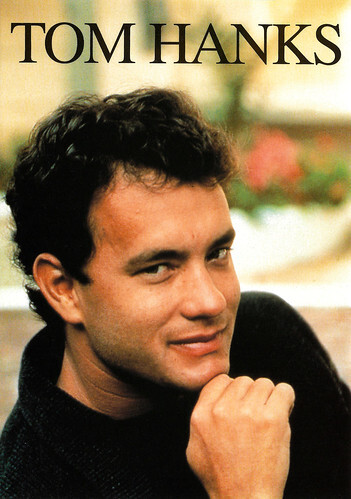
British postcard by Heroes Publishing Ltd., London, no. SPC 2722.

Vintage photo. Tom Hanks in Apollo 13 (Ron Howard, 1995).
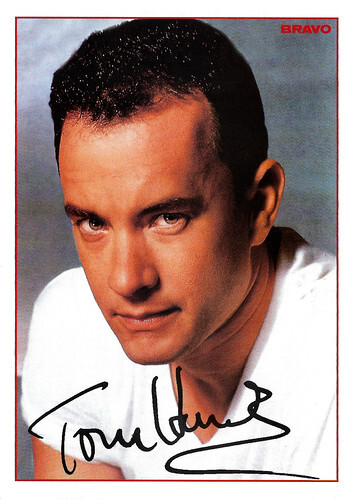
West German collectors card by Bravo.
A surprise box office success
Thomas Jeffrey Hanks was born in 1956 in Concord, California, to Janet Marylyn (Frager), a hospital worker, and Amos Mefford Hanks, an itinerant cook. Tom grew up in what he has called a "fractured" family. He moved around a great deal after his parents' divorce, living with a succession of step-families.
He had no acting experience in college and credits the fact that he could not get cast in a college play with actually starting his career. He went downtown, and auditioned for a community theatre play, was invited by the director of that play to go to Cleveland, where his acting career started.
He made his film debut in the Horror film He Knows You're Alone (Armand Mastroianni, 1980) and played guest roles in popular TV series such as The Love Boat (1980), Taxi (1982) and Happy Days (1982).
Ron Howard was working on Splash (Ron Howard, 1984), a fantasy-comedy about a mermaid, played by Darryl Hannah , who falls in love with a business executive. Howard considered Hanks for the role of the main character's wisecracking brother, which eventually went to John Candy. Instead, Hanks landed the lead role and the film went on to become a surprise box office success, grossing more than $69 million.
After several flops and moderate success with the comedy Dragnet (Tom Mankiewicz, 1987), Hanks' stature in the film industry rose. The broad success with the fantasy-comedy Big! (Penny Marshall, 1988) established him as a major Hollywood talent, both as a box office draw and within the film industry as an actor. For his performance in the film, Hanks earned his first Academy Award nomination as Best Actor.
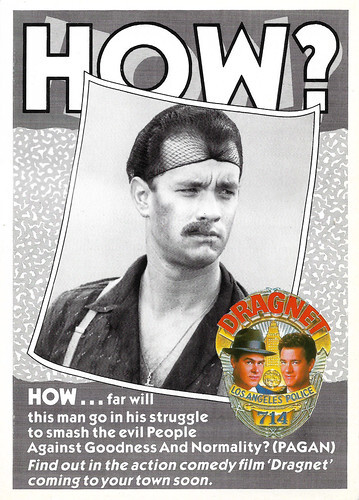
Vintage postcard. Dan Aykroyd and Alexandra Paul in Dragnet (Tom Mankiewicz, 1987) with Tom Hanks. Caption: Who? Who... dares to wrestle with a central Bolivian giant anaconda to win the love of the pristine virgin Connie Swail!!? Find out in the action comedy film 'Dragnet' coming to your town soon.

French postcard by Editions Avant Garde, no. P550. Photo/poster: 20th Century Fox. Tom Hanks in Big (Penny Marshall, 1988). Caption: Have you ever had a really big secret? Big - A Wonderful new comedy.
Hanks's modern era of movie making
Tom Hanks climbed the top again with his portrayal of a washed-up baseball legend turned manager in A League of Their Own (Penny Marshall, 1992). Hanks stated that his acting in earlier roles was not great but that he subsequently improved. In an interview with Vanity Fair , Hanks noted his "modern era of movie making ... because enough self-discovery has gone on ... My work has become less pretentiously fake and over the top".
This "modern era" began for Hanks, first with Sleepless in Seattle (Nora Ephron, 1993) opposite Meg Ryan and then with Philadelphia (Jonathan Demme, 1993) with Denzel Washington and Antonio Banderas . The former was a blockbuster success about a widower who finds true love over the radio airwaves. Richard Schickel of Time magazine called his performance "charming", and most critics agreed that Hanks' portrayal ensured him a place among the premier romantic-comedy stars of his generation. In Philadelphia, he played a gay lawyer with AIDS who sued his firm for discrimination. Hanks lost 35 pounds and thinned his hair to appear sickly for the role. Hanks won the 1993 Academy Award for Best Actor for his role in Philadelphia. During his acceptance speech, he revealed that his high school drama teacher Rawley Farnsworth and former classmate John Gilkerson, two people with whom he was close, were gay.
He followed Philadelphia with the blockbuster Forrest Gump (Robert Zemeckis, 1994) which grossed a worldwide total of over $600 million at the box office. Hanks remarked: "When I read the script for Gump, I saw it as one of those kind of grand, hopeful movies that the audience can go to and feel ... some hope for their lot and their position in life ... I got that from the movies a hundred million times when I was a kid. I still do." Hanks won his second Best Actor Academy Award for his role in Forrest Gump, becoming only the second actor to have accomplished the feat of winning consecutive Best Actor Oscars.
Hanks' next role was astronaut and commander Jim Lovell, in the docudrama Apollo 13 (Ron Howard, 1995). Critics generally applauded the film and the performances of the entire cast, which included actors Kevin Bacon, Bill Paxton, Gary Sinise, Ed Harris, and Kathleen Quinlan. The movie also earned nine Academy Award nominations, winning two. Later that year, Hanks starred in Disney/Pixar's computer-animated film Toy Story (John Lasseter, 1995), as the voice of Sheriff Woody.
Together with producer Gary Goetzman, he founded the production company Playtone, with which he has been producing films ever since. In the first Playtone production, the musical comedy That Thing You Do! (Tom Hanks, 1996), he made his directing debut and played the role of a music producer of a 1960s pop group. Hanks starred with Matt Damon in the war film Saving Private Ryan (Steven Spielberg, 1998). The film was awarded five Oscars and was very well received. In the IMDb Top 250 in November 2023, the film has a score of 8.6 out of 10, making it the 24th highest-rated film ever made. After Saving Private Ryan, Spielberg and Hanks began producing the mini-series Band of Brothers (2001) about the fortunes of a group of paratroopers during World War II.
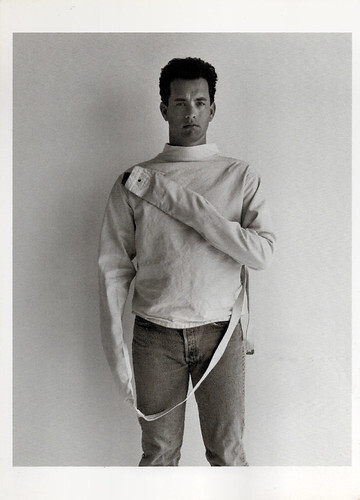
American postcard by Fotofolio, NY, NY, no HR69. Photo: Herb Ritts. Caption: Tom Hanks, Hollywood, 1988. From the book 'Notorious'.
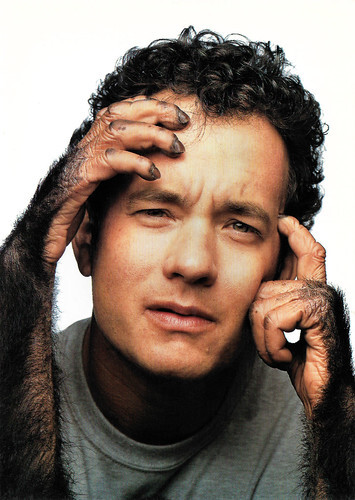
American postcard by Fotofolio, no. Z 1047. Photo: Mark Seliger. Caption: Tom Hanks, Los Angeles, 1994.
Taking on physical hardships
Tom Hanks continued to play leading roles in numerous successful cinema productions in which he played the lead role, including Cast Away (Robert Zemeckis, 2000) Road to Perdition (Sam Mendes, 2002) with Paul Newman , The Ladykillers (Joel and Ethan Coen, 2004) and The Da Vinci Code (Ron Howard, 2006).
To be able to portray his roles as believably as possible, Hanks also took on physical hardships. For Cast Away, he had to gain and lose a lot of weight in a relatively short space of time to play the role of a shipwrecked man credibly. Filming was interrupted for several months after the scenes before the plane crash had been shot with him as the manager of FedEx with a still robust physique.
Together with his wife, Rita Wilson, he produced the comedy My Big Fat Greek Wedding (Joel Zwick, 2002). He also produced and wrote the television series From the Earth to the Moon (David Frankel, a.o., 1998). He also took on voice roles in animated films such as The Polar Express (Robert Zemeckis, 2004), Cars (John Lasseter, Joe Ranft, 2006), Toy Story 3 (Lee Unkrich, 2010) and Toy Story 4 (Josh Cooley, 2017).
Hanks made a brief and wordless appearance as a motorcyclist in the film Elvis Has Left the Building (Joel Zwick, 2004) and also appeared as Colonel Parker in the biopic Elvis (Baz Luhrmann, 2022). He continued to work with Steven Spielberg and starred in his films Catch Me If You Can (2002) with Leonardo DiCaprio , Terminal (2004), and The Post, (2017) with Meryl Streep . Tom Hanks has remained active in the film industry for more than four decades now.
Tom Hanks married twice. His first wife was Samantha Lewes from 1978 to 1987. They have two children, actor-director Colin Hanks (1977) and actress-producer Elizabeth Hanks (1982). In 1988, Tom Hanks married Rita Wilson and they have two children, actor Chet Hanks and cinematographer Truman Hanks. Tom and Truman appeared both as Otto in the tragicomedy A Man Called Otto (Marc Forster, 2022).
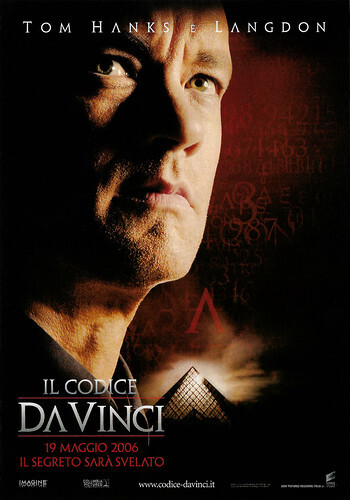
Italian promocard by The Cult Advertising, no. PC 6391. Image: Imagine / Columbia Pictures / Sony Pictures. Tom Hanks in The Da Vinci Code (Ron Howard, 2006). Caption: Tom Hanks is Langdon. 19 May 2006, the secret will be revealed.
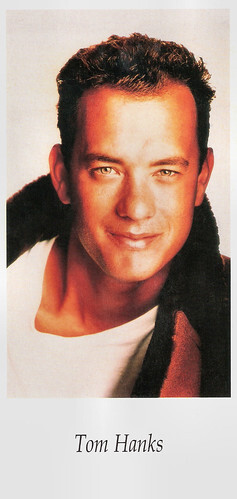
Belgian postcard by MultiChoice Kaleidoscope. Photo: Isopress / Outline.
Sources: (IMDb), Wikipedia and .

British postcard by Heroes Publishing Ltd., London, no. SPC 2722.

Vintage photo. Tom Hanks in Apollo 13 (Ron Howard, 1995).

West German collectors card by Bravo.
A surprise box office success
Thomas Jeffrey Hanks was born in 1956 in Concord, California, to Janet Marylyn (Frager), a hospital worker, and Amos Mefford Hanks, an itinerant cook. Tom grew up in what he has called a "fractured" family. He moved around a great deal after his parents' divorce, living with a succession of step-families.
He had no acting experience in college and credits the fact that he could not get cast in a college play with actually starting his career. He went downtown, and auditioned for a community theatre play, was invited by the director of that play to go to Cleveland, where his acting career started.
He made his film debut in the Horror film He Knows You're Alone (Armand Mastroianni, 1980) and played guest roles in popular TV series such as The Love Boat (1980), Taxi (1982) and Happy Days (1982).
Ron Howard was working on Splash (Ron Howard, 1984), a fantasy-comedy about a mermaid, played by Darryl Hannah , who falls in love with a business executive. Howard considered Hanks for the role of the main character's wisecracking brother, which eventually went to John Candy. Instead, Hanks landed the lead role and the film went on to become a surprise box office success, grossing more than $69 million.
After several flops and moderate success with the comedy Dragnet (Tom Mankiewicz, 1987), Hanks' stature in the film industry rose. The broad success with the fantasy-comedy Big! (Penny Marshall, 1988) established him as a major Hollywood talent, both as a box office draw and within the film industry as an actor. For his performance in the film, Hanks earned his first Academy Award nomination as Best Actor.

Vintage postcard. Dan Aykroyd and Alexandra Paul in Dragnet (Tom Mankiewicz, 1987) with Tom Hanks. Caption: Who? Who... dares to wrestle with a central Bolivian giant anaconda to win the love of the pristine virgin Connie Swail!!? Find out in the action comedy film 'Dragnet' coming to your town soon.

French postcard by Editions Avant Garde, no. P550. Photo/poster: 20th Century Fox. Tom Hanks in Big (Penny Marshall, 1988). Caption: Have you ever had a really big secret? Big - A Wonderful new comedy.
Hanks's modern era of movie making
Tom Hanks climbed the top again with his portrayal of a washed-up baseball legend turned manager in A League of Their Own (Penny Marshall, 1992). Hanks stated that his acting in earlier roles was not great but that he subsequently improved. In an interview with Vanity Fair , Hanks noted his "modern era of movie making ... because enough self-discovery has gone on ... My work has become less pretentiously fake and over the top".
This "modern era" began for Hanks, first with Sleepless in Seattle (Nora Ephron, 1993) opposite Meg Ryan and then with Philadelphia (Jonathan Demme, 1993) with Denzel Washington and Antonio Banderas . The former was a blockbuster success about a widower who finds true love over the radio airwaves. Richard Schickel of Time magazine called his performance "charming", and most critics agreed that Hanks' portrayal ensured him a place among the premier romantic-comedy stars of his generation. In Philadelphia, he played a gay lawyer with AIDS who sued his firm for discrimination. Hanks lost 35 pounds and thinned his hair to appear sickly for the role. Hanks won the 1993 Academy Award for Best Actor for his role in Philadelphia. During his acceptance speech, he revealed that his high school drama teacher Rawley Farnsworth and former classmate John Gilkerson, two people with whom he was close, were gay.
He followed Philadelphia with the blockbuster Forrest Gump (Robert Zemeckis, 1994) which grossed a worldwide total of over $600 million at the box office. Hanks remarked: "When I read the script for Gump, I saw it as one of those kind of grand, hopeful movies that the audience can go to and feel ... some hope for their lot and their position in life ... I got that from the movies a hundred million times when I was a kid. I still do." Hanks won his second Best Actor Academy Award for his role in Forrest Gump, becoming only the second actor to have accomplished the feat of winning consecutive Best Actor Oscars.
Hanks' next role was astronaut and commander Jim Lovell, in the docudrama Apollo 13 (Ron Howard, 1995). Critics generally applauded the film and the performances of the entire cast, which included actors Kevin Bacon, Bill Paxton, Gary Sinise, Ed Harris, and Kathleen Quinlan. The movie also earned nine Academy Award nominations, winning two. Later that year, Hanks starred in Disney/Pixar's computer-animated film Toy Story (John Lasseter, 1995), as the voice of Sheriff Woody.
Together with producer Gary Goetzman, he founded the production company Playtone, with which he has been producing films ever since. In the first Playtone production, the musical comedy That Thing You Do! (Tom Hanks, 1996), he made his directing debut and played the role of a music producer of a 1960s pop group. Hanks starred with Matt Damon in the war film Saving Private Ryan (Steven Spielberg, 1998). The film was awarded five Oscars and was very well received. In the IMDb Top 250 in November 2023, the film has a score of 8.6 out of 10, making it the 24th highest-rated film ever made. After Saving Private Ryan, Spielberg and Hanks began producing the mini-series Band of Brothers (2001) about the fortunes of a group of paratroopers during World War II.

American postcard by Fotofolio, NY, NY, no HR69. Photo: Herb Ritts. Caption: Tom Hanks, Hollywood, 1988. From the book 'Notorious'.

American postcard by Fotofolio, no. Z 1047. Photo: Mark Seliger. Caption: Tom Hanks, Los Angeles, 1994.
Taking on physical hardships
Tom Hanks continued to play leading roles in numerous successful cinema productions in which he played the lead role, including Cast Away (Robert Zemeckis, 2000) Road to Perdition (Sam Mendes, 2002) with Paul Newman , The Ladykillers (Joel and Ethan Coen, 2004) and The Da Vinci Code (Ron Howard, 2006).
To be able to portray his roles as believably as possible, Hanks also took on physical hardships. For Cast Away, he had to gain and lose a lot of weight in a relatively short space of time to play the role of a shipwrecked man credibly. Filming was interrupted for several months after the scenes before the plane crash had been shot with him as the manager of FedEx with a still robust physique.
Together with his wife, Rita Wilson, he produced the comedy My Big Fat Greek Wedding (Joel Zwick, 2002). He also produced and wrote the television series From the Earth to the Moon (David Frankel, a.o., 1998). He also took on voice roles in animated films such as The Polar Express (Robert Zemeckis, 2004), Cars (John Lasseter, Joe Ranft, 2006), Toy Story 3 (Lee Unkrich, 2010) and Toy Story 4 (Josh Cooley, 2017).
Hanks made a brief and wordless appearance as a motorcyclist in the film Elvis Has Left the Building (Joel Zwick, 2004) and also appeared as Colonel Parker in the biopic Elvis (Baz Luhrmann, 2022). He continued to work with Steven Spielberg and starred in his films Catch Me If You Can (2002) with Leonardo DiCaprio , Terminal (2004), and The Post, (2017) with Meryl Streep . Tom Hanks has remained active in the film industry for more than four decades now.
Tom Hanks married twice. His first wife was Samantha Lewes from 1978 to 1987. They have two children, actor-director Colin Hanks (1977) and actress-producer Elizabeth Hanks (1982). In 1988, Tom Hanks married Rita Wilson and they have two children, actor Chet Hanks and cinematographer Truman Hanks. Tom and Truman appeared both as Otto in the tragicomedy A Man Called Otto (Marc Forster, 2022).

Italian promocard by The Cult Advertising, no. PC 6391. Image: Imagine / Columbia Pictures / Sony Pictures. Tom Hanks in The Da Vinci Code (Ron Howard, 2006). Caption: Tom Hanks is Langdon. 19 May 2006, the secret will be revealed.

Belgian postcard by MultiChoice Kaleidoscope. Photo: Isopress / Outline.
Sources: (IMDb), Wikipedia and .
Published on January 04, 2024 22:00
January 3, 2024
Europe's star pin-ups from the 1950s and 1960s
Va-va-voom... Here are 21 vintage postcards with pin-ups of the 1950s and 1960s European cinema!
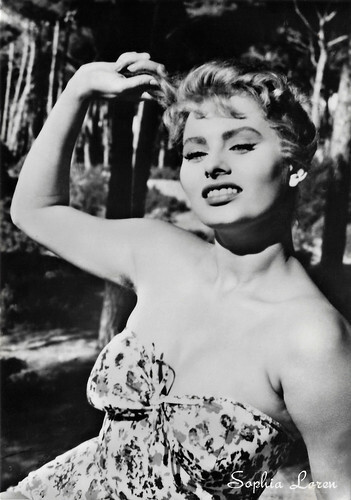
Italian postcard by Rotalfoto, Milano, no. 319. Photo: Documento Film.
Sophia Loren (1934) rose to fame in post-war Italy as a voluptuous sex goddess. Soon after, she became one of the most successful stars of the 20th Century, who won an Oscar for her mother role in La Ciociara (Vittorio De Sica, 1960).
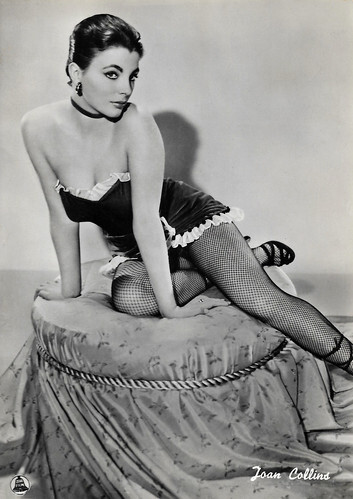
Italian postcard by Bromofoto, Milano, no. 1209. Photo: Dear Film.
Glamorous English actress Joan Collins (1933) is one of the great survivors of the cinema. She began in the early 1950s as a voluptuous starlet in British film. 20th Century Fox brought her to Hollywood as their answer to Elizabeth Taylor. In the 1970s she was the ‘Queen of the B-pictures’, but in the 1980s Joan became the highest-paid TV star, thanks to Dynasty.
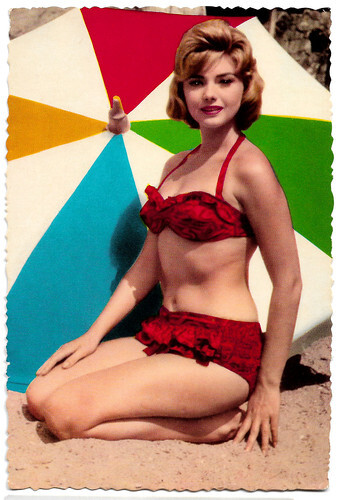
Spanish postcard by Archivo Bermejo, no. 10, 1964. Photo: Universal.
Italian actress Sylva Koscina (1933-1994) may be best remembered as Iole, the bride of Steve Reeves in the original version of Hercules (1958). She also starred in several Italian and Hollywood comedies of the 1950s and 1960s.
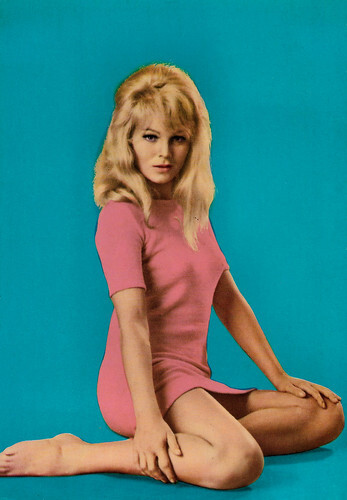
Spanish postcard by Postal Oscar Color S.A., Hospitalet (Barcelona), no. 686.
German-born Austrian Susan Denberg (1944) was a Bluebell dancer and Playboy Playmate who had a brief acting career in the 1960s. One of her few roles was as Peter Cushing’s beautiful new creation in the Hammer horror Frankenstein Created Woman (1967).
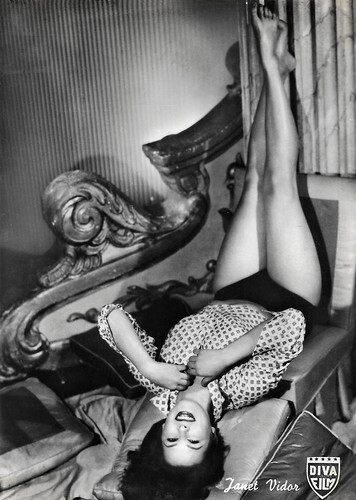
Italian postcard by Bromofoto, Milano, no. 1111. Photo: Diva Film.
Janet Vidor was an Italian actress who starred in a few films in the 1950s. She played the female lead role in Rigoletto e la sua tragedia/Rigoletto (Flavio Calzavara, 1956), a musical drama based on Giuseppe Verdi's opera 'Rigoletto'. She also starred in Mamma sconosciuta/Mother Unknown (Carlo Campogalliani, 1956) as a widow who remarries, but then, her first husband, given for dead with his daughter, reappears before her. Her eighth and last film was the comedy Via col para... vento (Mario Costa, 1958) with Maurizio Arena.
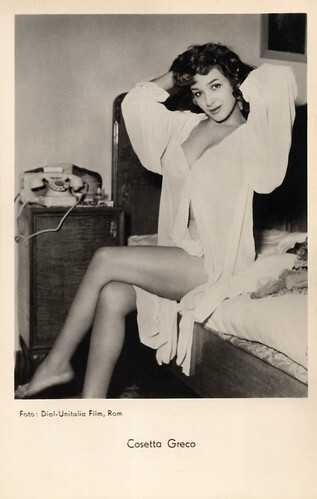
French postcard by Editions P.I., licence holder for Ufa, Berlin-Tempelhof, no. FK 1216. Photo: Dial / Unitalia Film, Rom (Rome).
Cosetta Greco (1930-2002) was an Italian film actress, who appeared in 31 films between 1943 and 1971. She is famous for fillms such as Il brigante di Tacca del Lupo/The Bandit of T. del L. (Pietro Germi, 1952), Le ragazze di piazza di Spagna/Three Girls from Rome (Luciano Emmer, 1952), Gli eroi della domenica/Sunday Heroes (Mario Camerini, 1953), and Cronache di poveri amanti/Chronicle of Poor Lovers (Carlo Lizzani, 1954).

Spanish postcard by Postal Oscarcolor, no. 552.
French actress Claudine Auger (1941-2019) was best known as Bond Girl Domino in the James Bond film Thunderball (1965). At 17, she was Miss France 1958 and she became the first runner-up in the Miss World contest. Later she worked mostly in France and Italy.
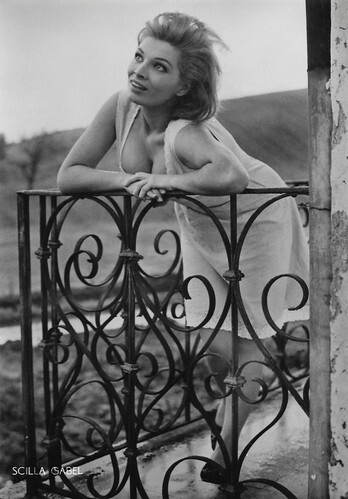
Italian postcard, no. 609.
Italian starlet Scilla Gabel (1938) often played the damsel in distress in peplums, the Italian sand and sandal epics of the late 1950s and 1960s. With her perfect body and face, she was a look-a-like for Sophia Loren. Between 1954 and 1982, the blue-eyed redhead appeared in 50 European and Hollywood films.
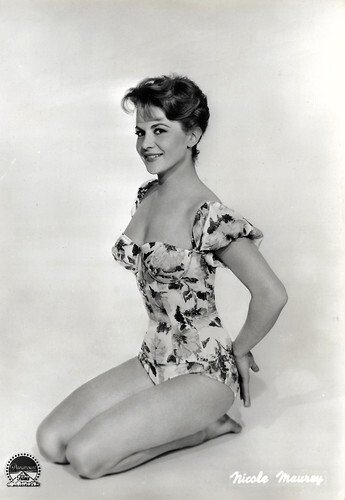
Italian postcard by Bromofoto, Milano, no. 1650. Photo: Paramount.
Glamorous French beauty Nicole Maurey (1926) appeared in 65 film and television productions between 1944 and 1997. She flirted with Hollywood stardom in the 1950s, co-starring with Bing Crosby in Little Boy Lost (1953) and Danny Kaye in Me and the Colonel (1958). She probably remains most noted as Charlton Heston's leading lady in Secret of the Incas (1954), often cited as the primary inspiration for Raiders of the Lost Ark (1981).
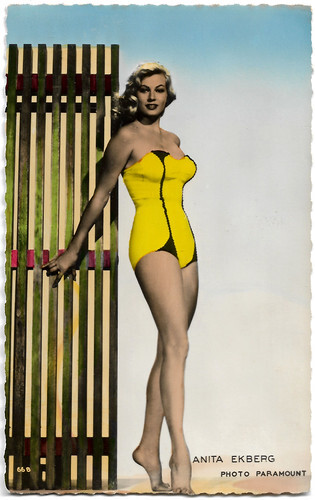
French postcard by Editions P.I., Paris, no. 66 B. Photo: Bud Fraker / Paramount Pictures Inc, 1955.
Swedish film actress, party girl and sex symbol Anita Ekberg (1931-2015) was nicknamed "The Iceberg". Miss Sweden 1950 was contracted by Howard Hughes, had a Hollywood career in the 1950s, but got her real breakthrough in Italy. She made film history as the sensual, curvaceous film goddess who dances in the Trevi Fountain in Fellini’s La Dolce Vita (1960). She was also unforgettable as a sexy billboard figure coming to life in Fellini's short film Le Tentazioni del Dottor Antonio/The Temptation of Doctor Antonio (1962).
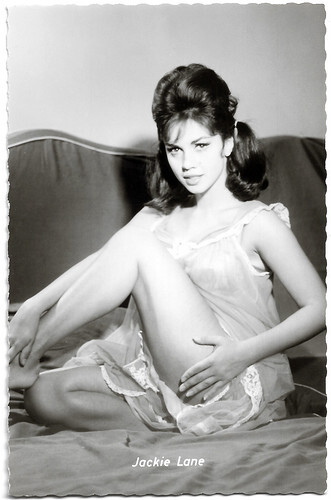
German postcard by Kolibri-Verlag, Minden/Westf., no. 1745.
Austrian-born starlet Jackie Lane (1937) was a stunningly beautiful model and film actress of the 1950s and 1960s, who starred both in European films and in Hollywood pictures. She was married to Prince Alfonso of Hohenlohe-Langenburg.
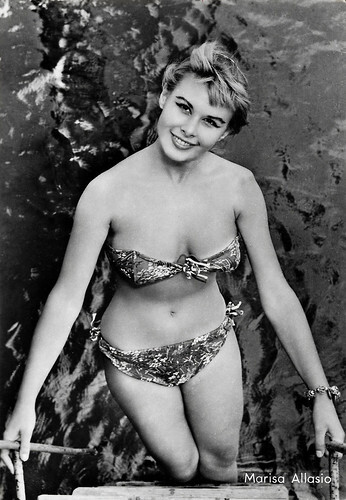
Italian postcard by Bromofoto, Milano, no. 153.
Italian actress Marisa Allasio (1936) was a glamorous starlet who appeared in nearly twenty pictures in the 1950s. She was nicknamed ‘The Italian Jayne Mansfield’. In 1958 her career stopped abruptly when she married and became a countess.
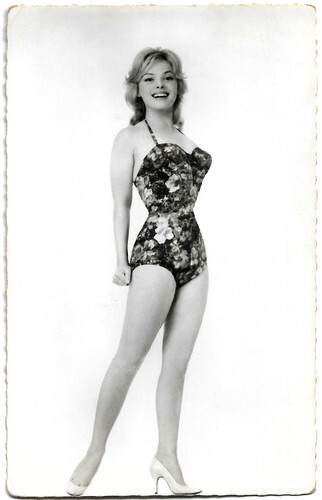
French postcard by Editions du Globe, Paris, no. 844. Photo: Sam Lévin.
Christine Carère (1930-2008), was a French actress. She began her career in the theatre and then moved on to French cinema. Between 1951 and 1958, she appeared in about twenty, mainly French films, but she also acted in a few Italian and American films.
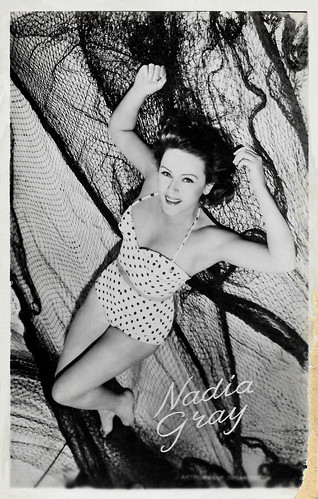
Dutch postcard. Photo: J. Arthur Rank Organisation.
Romanian-born actress Nadia Gray (1923–1994) was an elegant and seductive star of European films of the 1950s and 1960s. Perhaps she is best known for her striptease scene in Fellini’s La Dolce Vita (1960).
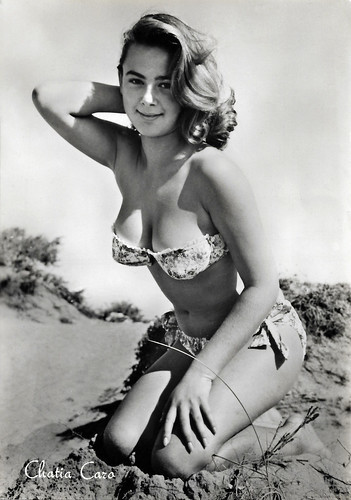
Italian postcard by Rotalfoto, Milano, no. 972.
Former French actress Cathia Caro (1943) was a young, delicate beauty. At the turn of the 1950s and 1960s, she starred in French and especially Italian films, opposite such stars as Totò, Peppino De Filippo and Aldo Fabrizi.
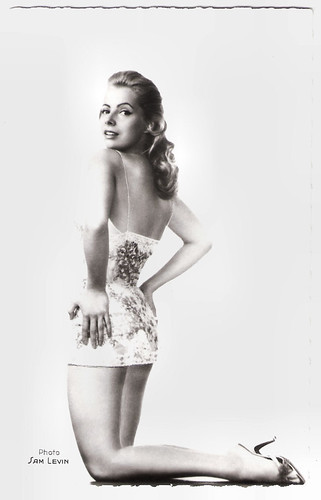
French postcard by Editions du Globe, Paris, no. 659. Photo: Sam Lévin.
French stage actress Geneviève Kervine (1931-1989) appeared in some 30 films during the 1950s and 1960s. Although she was good-looking and chosen as the most promising actress of 1955 in France, most of her films proved to be not very memorable.
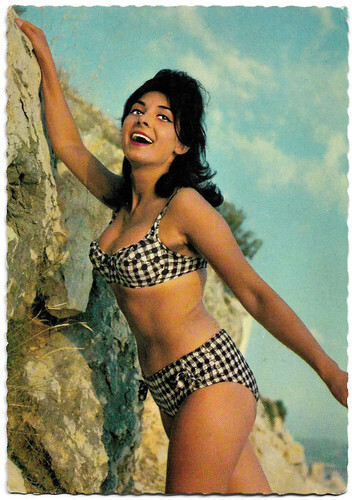
German postcard by ISV, no. 16/6. Photo: Lothar Winkler.
Croatian singer and actress Dunja Rajter (1946) is a dark-haired beauty who had a successful career in Germany from 1963 on. To film fans, she is probably best known for her roles as a squaw in two Winnetou Westerns.
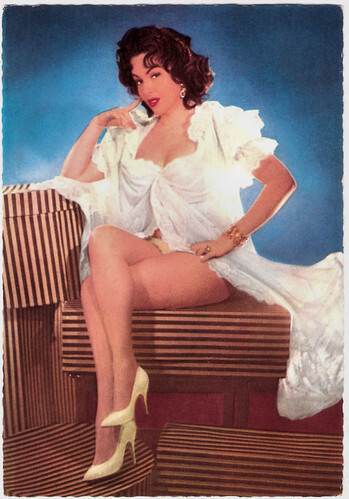
Dutch postcard by P. Moorlag, Heerlen, no. Sort. 13/6.
British-Austrian actress Mara Lane (1930) was considered one of the most beautiful models in Great Britain during the early 1950s. She appeared in more than 30 English and German language films of the 1950s and early 1960s but seems completely forgotten now.
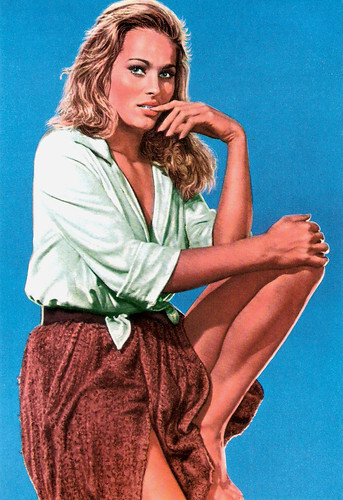
Spanish postcard, no. 240, 1964.
Stunning Swiss sex symbol, starlet and jet-setter Ursula Andress (1936) will always be remembered as the first and quintessential Bond girl. In Dr. No (1962), she made film history when she spectacularly rose out of the Caribbean Sea in a white bikini. Though she won a Golden Globe Ursula's looks generally outweighed her acting talent and she never took her film career very seriously.
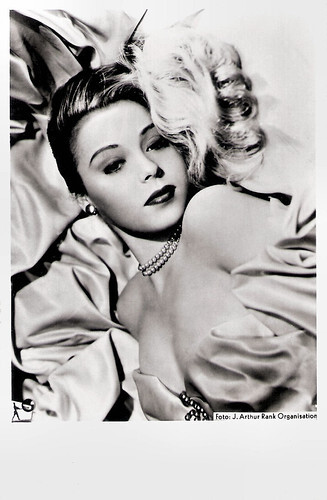
Dutch postcard. Photo: J. Arthur Rank Organisation.
British actress Sandra Dorne (1924-1992) was a sexy and glamorous bombshell. She was a popular pin-up early in her career, played leads in the 1950s and later appeared in supporting roles.
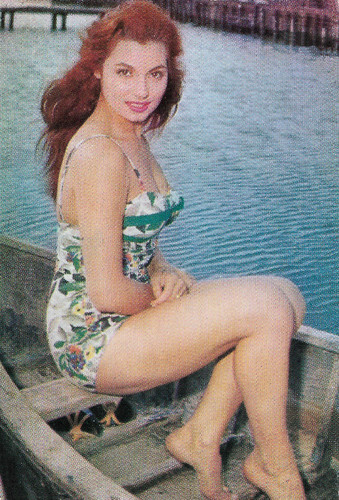
Belgian collectors card by Music-fan, no. 2.
Glamorous, Italian film actress Rosanna Schiaffino (1938-2009) was a show business icon of the 1960s. She appeared frequently in sword-and-sandal films, and on covers of European and American magazines.

Italian postcard by Rotalfoto, Milano, no. 319. Photo: Documento Film.
Sophia Loren (1934) rose to fame in post-war Italy as a voluptuous sex goddess. Soon after, she became one of the most successful stars of the 20th Century, who won an Oscar for her mother role in La Ciociara (Vittorio De Sica, 1960).

Italian postcard by Bromofoto, Milano, no. 1209. Photo: Dear Film.
Glamorous English actress Joan Collins (1933) is one of the great survivors of the cinema. She began in the early 1950s as a voluptuous starlet in British film. 20th Century Fox brought her to Hollywood as their answer to Elizabeth Taylor. In the 1970s she was the ‘Queen of the B-pictures’, but in the 1980s Joan became the highest-paid TV star, thanks to Dynasty.

Spanish postcard by Archivo Bermejo, no. 10, 1964. Photo: Universal.
Italian actress Sylva Koscina (1933-1994) may be best remembered as Iole, the bride of Steve Reeves in the original version of Hercules (1958). She also starred in several Italian and Hollywood comedies of the 1950s and 1960s.

Spanish postcard by Postal Oscar Color S.A., Hospitalet (Barcelona), no. 686.
German-born Austrian Susan Denberg (1944) was a Bluebell dancer and Playboy Playmate who had a brief acting career in the 1960s. One of her few roles was as Peter Cushing’s beautiful new creation in the Hammer horror Frankenstein Created Woman (1967).

Italian postcard by Bromofoto, Milano, no. 1111. Photo: Diva Film.
Janet Vidor was an Italian actress who starred in a few films in the 1950s. She played the female lead role in Rigoletto e la sua tragedia/Rigoletto (Flavio Calzavara, 1956), a musical drama based on Giuseppe Verdi's opera 'Rigoletto'. She also starred in Mamma sconosciuta/Mother Unknown (Carlo Campogalliani, 1956) as a widow who remarries, but then, her first husband, given for dead with his daughter, reappears before her. Her eighth and last film was the comedy Via col para... vento (Mario Costa, 1958) with Maurizio Arena.

French postcard by Editions P.I., licence holder for Ufa, Berlin-Tempelhof, no. FK 1216. Photo: Dial / Unitalia Film, Rom (Rome).
Cosetta Greco (1930-2002) was an Italian film actress, who appeared in 31 films between 1943 and 1971. She is famous for fillms such as Il brigante di Tacca del Lupo/The Bandit of T. del L. (Pietro Germi, 1952), Le ragazze di piazza di Spagna/Three Girls from Rome (Luciano Emmer, 1952), Gli eroi della domenica/Sunday Heroes (Mario Camerini, 1953), and Cronache di poveri amanti/Chronicle of Poor Lovers (Carlo Lizzani, 1954).

Spanish postcard by Postal Oscarcolor, no. 552.
French actress Claudine Auger (1941-2019) was best known as Bond Girl Domino in the James Bond film Thunderball (1965). At 17, she was Miss France 1958 and she became the first runner-up in the Miss World contest. Later she worked mostly in France and Italy.

Italian postcard, no. 609.
Italian starlet Scilla Gabel (1938) often played the damsel in distress in peplums, the Italian sand and sandal epics of the late 1950s and 1960s. With her perfect body and face, she was a look-a-like for Sophia Loren. Between 1954 and 1982, the blue-eyed redhead appeared in 50 European and Hollywood films.

Italian postcard by Bromofoto, Milano, no. 1650. Photo: Paramount.
Glamorous French beauty Nicole Maurey (1926) appeared in 65 film and television productions between 1944 and 1997. She flirted with Hollywood stardom in the 1950s, co-starring with Bing Crosby in Little Boy Lost (1953) and Danny Kaye in Me and the Colonel (1958). She probably remains most noted as Charlton Heston's leading lady in Secret of the Incas (1954), often cited as the primary inspiration for Raiders of the Lost Ark (1981).

French postcard by Editions P.I., Paris, no. 66 B. Photo: Bud Fraker / Paramount Pictures Inc, 1955.
Swedish film actress, party girl and sex symbol Anita Ekberg (1931-2015) was nicknamed "The Iceberg". Miss Sweden 1950 was contracted by Howard Hughes, had a Hollywood career in the 1950s, but got her real breakthrough in Italy. She made film history as the sensual, curvaceous film goddess who dances in the Trevi Fountain in Fellini’s La Dolce Vita (1960). She was also unforgettable as a sexy billboard figure coming to life in Fellini's short film Le Tentazioni del Dottor Antonio/The Temptation of Doctor Antonio (1962).

German postcard by Kolibri-Verlag, Minden/Westf., no. 1745.
Austrian-born starlet Jackie Lane (1937) was a stunningly beautiful model and film actress of the 1950s and 1960s, who starred both in European films and in Hollywood pictures. She was married to Prince Alfonso of Hohenlohe-Langenburg.

Italian postcard by Bromofoto, Milano, no. 153.
Italian actress Marisa Allasio (1936) was a glamorous starlet who appeared in nearly twenty pictures in the 1950s. She was nicknamed ‘The Italian Jayne Mansfield’. In 1958 her career stopped abruptly when she married and became a countess.

French postcard by Editions du Globe, Paris, no. 844. Photo: Sam Lévin.
Christine Carère (1930-2008), was a French actress. She began her career in the theatre and then moved on to French cinema. Between 1951 and 1958, she appeared in about twenty, mainly French films, but she also acted in a few Italian and American films.

Dutch postcard. Photo: J. Arthur Rank Organisation.
Romanian-born actress Nadia Gray (1923–1994) was an elegant and seductive star of European films of the 1950s and 1960s. Perhaps she is best known for her striptease scene in Fellini’s La Dolce Vita (1960).

Italian postcard by Rotalfoto, Milano, no. 972.
Former French actress Cathia Caro (1943) was a young, delicate beauty. At the turn of the 1950s and 1960s, she starred in French and especially Italian films, opposite such stars as Totò, Peppino De Filippo and Aldo Fabrizi.

French postcard by Editions du Globe, Paris, no. 659. Photo: Sam Lévin.
French stage actress Geneviève Kervine (1931-1989) appeared in some 30 films during the 1950s and 1960s. Although she was good-looking and chosen as the most promising actress of 1955 in France, most of her films proved to be not very memorable.

German postcard by ISV, no. 16/6. Photo: Lothar Winkler.
Croatian singer and actress Dunja Rajter (1946) is a dark-haired beauty who had a successful career in Germany from 1963 on. To film fans, she is probably best known for her roles as a squaw in two Winnetou Westerns.

Dutch postcard by P. Moorlag, Heerlen, no. Sort. 13/6.
British-Austrian actress Mara Lane (1930) was considered one of the most beautiful models in Great Britain during the early 1950s. She appeared in more than 30 English and German language films of the 1950s and early 1960s but seems completely forgotten now.

Spanish postcard, no. 240, 1964.
Stunning Swiss sex symbol, starlet and jet-setter Ursula Andress (1936) will always be remembered as the first and quintessential Bond girl. In Dr. No (1962), she made film history when she spectacularly rose out of the Caribbean Sea in a white bikini. Though she won a Golden Globe Ursula's looks generally outweighed her acting talent and she never took her film career very seriously.

Dutch postcard. Photo: J. Arthur Rank Organisation.
British actress Sandra Dorne (1924-1992) was a sexy and glamorous bombshell. She was a popular pin-up early in her career, played leads in the 1950s and later appeared in supporting roles.

Belgian collectors card by Music-fan, no. 2.
Glamorous, Italian film actress Rosanna Schiaffino (1938-2009) was a show business icon of the 1960s. She appeared frequently in sword-and-sandal films, and on covers of European and American magazines.
Published on January 03, 2024 22:00
January 2, 2024
The Lion King (1994)
The Lion King (Roger Allers, Rob Minkoff, 1994) is an American animated film produced by Walt Disney Feature Animation. It is the 32nd of Disney's animated films. The story is set in the African savannah, where the king of animals, the lion, is lord and master. The Lion King is the best-selling home video of all time, with more than 55 million copies sold to date.

Spanish postcard by Ediciones Beascoa S.A., Barcelona, no. P 56. Image: Disney. Publicity still for The Lion King (Roger Allers, Rob Minkoff, 1994).

Italian postcard by Disney Store for the DVD release. Image: Disney. Scene from The Lion King (Roger Allers, Rob Minkoff, 1994).

Vintage postcard by European Greetings, no. 535563. Image: Disney. Scene from The Lion King (Roger Allers, Rob Minkoff, 1994).

Vintage postcard by European Greetings, no. 535563. Image: Disney. Simba and Scar in The Lion King (Roger Allers, Rob Minkoff, 1994).
Osirian myths
The Lion King (Roger Allers, Rob Minkoff, 1994) is inspired by William Shakespeare 's 'Hamlet', but the story also has elements of the Osirian family myths of Ancient Egyptian mythology. In the Osirian myths, the king is killed by his jealous brother and the rightful heir is sent into exile as a boy. The murdered king visits and mentors his son in ghostly visits and when the heir comes of age, he returns to exact revenge on his father's murderer.
Lion king Mufasa lives with his wife Sarabi and the other lions on the King's Rock and is the proud ruler of the lions and other animals of the savannah. In Mufasa's shadow is his jealous and resentful brother Scar, who is eager to become king himself.
Mufasa's son Simba is born. Young Simba learns from his father what kingship entails. Scar supposedly accidentally points Simba to the elephant graveyard, intending to lure him there only to have him killed by hyenas, the outcast animals at the bottom of the food chain. Simba and his girlfriend, the young lioness Nala, get curious and sneak off to check out the forbidden place. The red-billed cam Zazoo, who has been appointed by Mufasa as the supervising guardian for Simba, cannot stop the two.
This brings Simba and Nala into contact with the hyenas Shenzi, Banzai and Ed, who have been ordered by Scar to kill Simba. Simba and Nala narrowly manage to escape thanks to Mufasa, who arrives on the scene just in time. In a new attempt to get Simba and Mufasa out of the way at the same time, Scar, with the help of his hyenas, unleashes a gigantic stampede of stampeding wildebeests, which head straight for the spot where Scar first lured Simba with a pretext.
Mufasa's attempt to rescue Simba from the gorge narrowly succeeds, but Mufasa when he hangs helplessly from a rock above the gorge moments later is thrown back down by Scar and dies. Scar then convinces Simba that he is to blame for Mufasa's death. He tells Simba to flee and then sends Shenzi, Banzai and Ed after Simba to kill him. Simba just manages to escape.
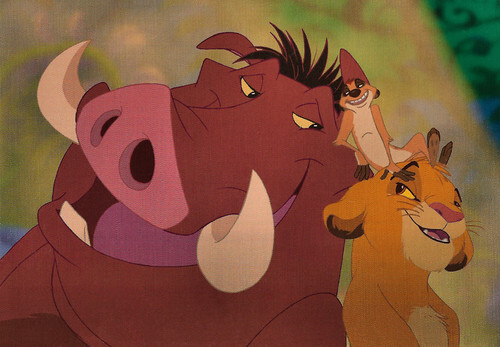
Italian postcard by Disney Store for the DVD release. Image: Disney. Publicity still for The Lion King (Roger Allers, Rob Minkoff, 1994). Sent by mail in 1996.

Vintage postcard by European Greetings, no. 535563. Image: Disney. Scene from The Lion King (Roger Allers, Rob Minkoff, 1994).

Vintage postcard by European Greetings, no. 535714. Image: Disney. Scene from The Lion King (Roger Allers, Rob Minkoff, 1994).
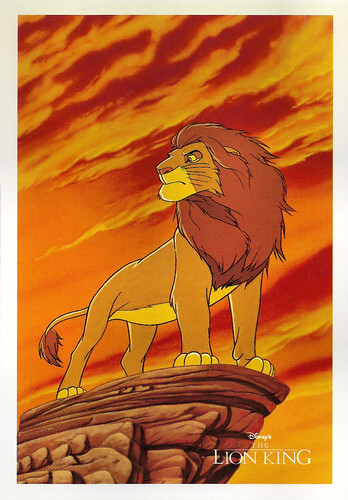
Italian postcard by Nuova Arti Grafiche Ricordi S.r. l. Milano, no. 1337. Image: Disney. Publicity still for The Lion King (Roger Allers, Rob Minkoff, 1994).
Supposedly Disney's 'team B'
As with the Disney classic Bambi (David Dodd Hand, 1942), illustrators studied real animals for The Lion King (Roger Allers, Rob Minkoff, 1994). Some filmmakers went to Africa to observe the animals there in the wild, while other cartoonists had the animals brought to the drawing studio.
The wildebeest stampede took Disney's CG department approximately three years to animate. A new computer program had to be written for the CG wildebeest stampede that allowed hundreds of computer-generated animals to run without colliding with each other.
The film was produced at the same time as Pocahontas (Mike Gabriel, Eric Goldberg, 1995). The team working on the film was supposedly Disney's 'team B', who were 'kept busy' while 'team A' worked on Pocahontas (1995), on which the production had much higher hopes. As it turned out, The Lion King became a huge critical and commercial success, whereas Pocahontas met with mixed reviews and a much lower box office.
Elton John and Tim Rice wrote five new musical numbers for the film. Elton John himself sang 'Can You Feel the Love Tonight' for the credits. Hans Zimmer in collaboration with Lebo M also provided music, featuring traditional African musical elements. Three of the songs were simultaneously nominated for an Academy Award: 'Can You Feel the Love Tonight', 'Circle of Life' and 'Hakuna Matata'. The Lion King was the highest-grossing film of 1994 worldwide and the second highest in the U.S. behind Forrest Gump (Robert Zemeckis, 1994).
The film was followed by two direct-to-video films: The Lion King II: Simba's Pride (Darrell Rooney, 1998) and The Lion King 1½ (Bradley Raymond, 2004). A musical was made from the film, which premiered in 1997. The characters Timon and Pumbaa were given their animated series after the film, which ran for 86 episodes. In 2019, a realistically computer-animated remake, The Lion King (Jon Favreau, 2019), was released.

French postcard by Sonis, no. 458. Image: Disney. Publicity still for The Lion King (Roger Allers, Rob Minkoff, 1994).
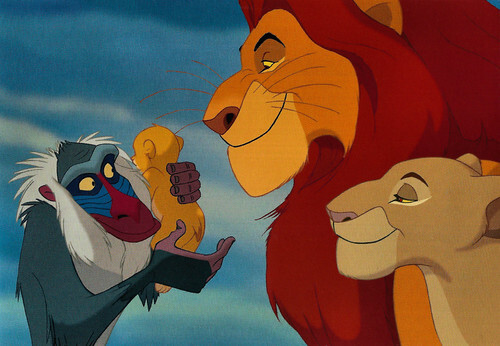
Italian postcard by Disney Store for the DVD release. Image: Disney. Publicity still for The Lion King (Roger Allers, Rob Minkoff, 1994).
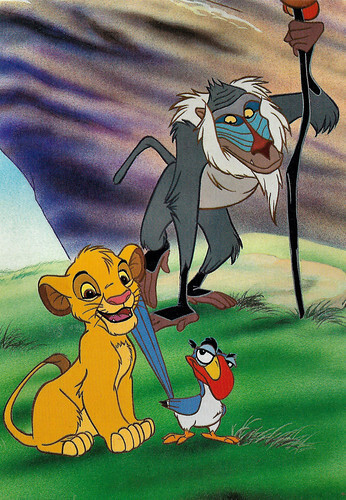
French postcard by MD, Paris, no. 860-1. Image: Disney. Publicity still for The Lion King (Roger Allers, Rob Minkoff, 1994). Sent by mail in 1996.
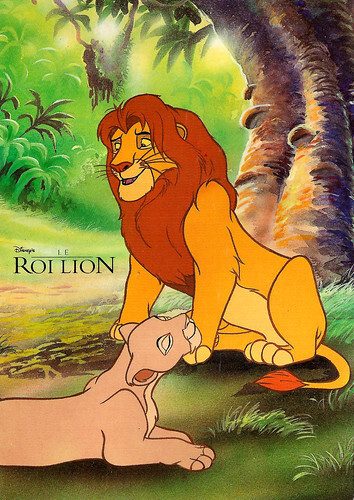
French postcard by MD, Paris, no. D 860-2. Image: Disney. Publicity still for The Lion King (Roger Allers, Rob Minkoff, 1994).

French postcard. Image: Disney. Publicity still for The Lion King (Roger Allers, Rob Minkoff, 1994).
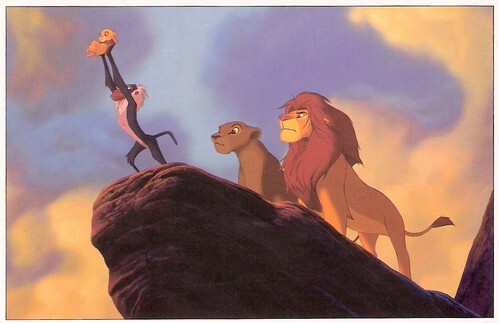
Dutch postcard by Donald Duck magazine. Image: Disney. Publicity still for The Lion King II: Simba's Pride (1998).
Sources: Wikipedia (Dutch) and IMDb.

Spanish postcard by Ediciones Beascoa S.A., Barcelona, no. P 56. Image: Disney. Publicity still for The Lion King (Roger Allers, Rob Minkoff, 1994).

Italian postcard by Disney Store for the DVD release. Image: Disney. Scene from The Lion King (Roger Allers, Rob Minkoff, 1994).

Vintage postcard by European Greetings, no. 535563. Image: Disney. Scene from The Lion King (Roger Allers, Rob Minkoff, 1994).

Vintage postcard by European Greetings, no. 535563. Image: Disney. Simba and Scar in The Lion King (Roger Allers, Rob Minkoff, 1994).
Osirian myths
The Lion King (Roger Allers, Rob Minkoff, 1994) is inspired by William Shakespeare 's 'Hamlet', but the story also has elements of the Osirian family myths of Ancient Egyptian mythology. In the Osirian myths, the king is killed by his jealous brother and the rightful heir is sent into exile as a boy. The murdered king visits and mentors his son in ghostly visits and when the heir comes of age, he returns to exact revenge on his father's murderer.
Lion king Mufasa lives with his wife Sarabi and the other lions on the King's Rock and is the proud ruler of the lions and other animals of the savannah. In Mufasa's shadow is his jealous and resentful brother Scar, who is eager to become king himself.
Mufasa's son Simba is born. Young Simba learns from his father what kingship entails. Scar supposedly accidentally points Simba to the elephant graveyard, intending to lure him there only to have him killed by hyenas, the outcast animals at the bottom of the food chain. Simba and his girlfriend, the young lioness Nala, get curious and sneak off to check out the forbidden place. The red-billed cam Zazoo, who has been appointed by Mufasa as the supervising guardian for Simba, cannot stop the two.
This brings Simba and Nala into contact with the hyenas Shenzi, Banzai and Ed, who have been ordered by Scar to kill Simba. Simba and Nala narrowly manage to escape thanks to Mufasa, who arrives on the scene just in time. In a new attempt to get Simba and Mufasa out of the way at the same time, Scar, with the help of his hyenas, unleashes a gigantic stampede of stampeding wildebeests, which head straight for the spot where Scar first lured Simba with a pretext.
Mufasa's attempt to rescue Simba from the gorge narrowly succeeds, but Mufasa when he hangs helplessly from a rock above the gorge moments later is thrown back down by Scar and dies. Scar then convinces Simba that he is to blame for Mufasa's death. He tells Simba to flee and then sends Shenzi, Banzai and Ed after Simba to kill him. Simba just manages to escape.

Italian postcard by Disney Store for the DVD release. Image: Disney. Publicity still for The Lion King (Roger Allers, Rob Minkoff, 1994). Sent by mail in 1996.

Vintage postcard by European Greetings, no. 535563. Image: Disney. Scene from The Lion King (Roger Allers, Rob Minkoff, 1994).

Vintage postcard by European Greetings, no. 535714. Image: Disney. Scene from The Lion King (Roger Allers, Rob Minkoff, 1994).

Italian postcard by Nuova Arti Grafiche Ricordi S.r. l. Milano, no. 1337. Image: Disney. Publicity still for The Lion King (Roger Allers, Rob Minkoff, 1994).
Supposedly Disney's 'team B'
As with the Disney classic Bambi (David Dodd Hand, 1942), illustrators studied real animals for The Lion King (Roger Allers, Rob Minkoff, 1994). Some filmmakers went to Africa to observe the animals there in the wild, while other cartoonists had the animals brought to the drawing studio.
The wildebeest stampede took Disney's CG department approximately three years to animate. A new computer program had to be written for the CG wildebeest stampede that allowed hundreds of computer-generated animals to run without colliding with each other.
The film was produced at the same time as Pocahontas (Mike Gabriel, Eric Goldberg, 1995). The team working on the film was supposedly Disney's 'team B', who were 'kept busy' while 'team A' worked on Pocahontas (1995), on which the production had much higher hopes. As it turned out, The Lion King became a huge critical and commercial success, whereas Pocahontas met with mixed reviews and a much lower box office.
Elton John and Tim Rice wrote five new musical numbers for the film. Elton John himself sang 'Can You Feel the Love Tonight' for the credits. Hans Zimmer in collaboration with Lebo M also provided music, featuring traditional African musical elements. Three of the songs were simultaneously nominated for an Academy Award: 'Can You Feel the Love Tonight', 'Circle of Life' and 'Hakuna Matata'. The Lion King was the highest-grossing film of 1994 worldwide and the second highest in the U.S. behind Forrest Gump (Robert Zemeckis, 1994).
The film was followed by two direct-to-video films: The Lion King II: Simba's Pride (Darrell Rooney, 1998) and The Lion King 1½ (Bradley Raymond, 2004). A musical was made from the film, which premiered in 1997. The characters Timon and Pumbaa were given their animated series after the film, which ran for 86 episodes. In 2019, a realistically computer-animated remake, The Lion King (Jon Favreau, 2019), was released.

French postcard by Sonis, no. 458. Image: Disney. Publicity still for The Lion King (Roger Allers, Rob Minkoff, 1994).

Italian postcard by Disney Store for the DVD release. Image: Disney. Publicity still for The Lion King (Roger Allers, Rob Minkoff, 1994).

French postcard by MD, Paris, no. 860-1. Image: Disney. Publicity still for The Lion King (Roger Allers, Rob Minkoff, 1994). Sent by mail in 1996.

French postcard by MD, Paris, no. D 860-2. Image: Disney. Publicity still for The Lion King (Roger Allers, Rob Minkoff, 1994).

French postcard. Image: Disney. Publicity still for The Lion King (Roger Allers, Rob Minkoff, 1994).

Dutch postcard by Donald Duck magazine. Image: Disney. Publicity still for The Lion King II: Simba's Pride (1998).
Sources: Wikipedia (Dutch) and IMDb.
Published on January 02, 2024 22:00
January 1, 2024
Brigitte Bardot
On the second day of the new year, EFSP presents an extra long post on Brigitte Bardot (1934), the original sex kitten of the European cinema. Prrrrr. During the 1950s and 1960s, she was every man's idea of the girl he'd like to meet in Paris. She starred in 48 films, performed in numerous musical shows, and recorded 80 songs. After her retirement in 1973, BB established herself as an animal rights activist. This year, she turns 90.
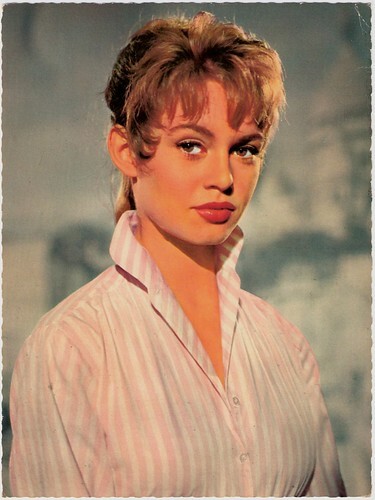
Dutch postcard printed by Gebr. Spanjersberg N.V. Rotterdam. Brigitte Bardot in Doctor at Sea (Ralph Thomas, 1955).
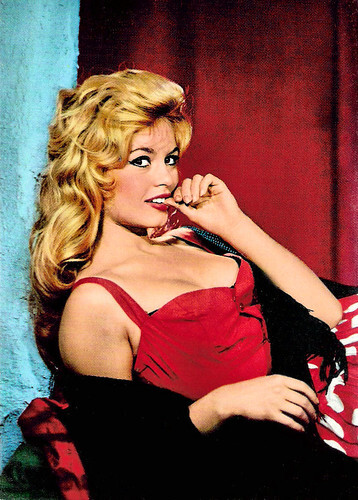
French postcard by Edition P.I., Paris, no. CK 292. Photo: Yousuf Karsh / Camera Press / Ufa. Publicity still for La femme et le pantin/A Woman Like Satan (Julien Duvivier, 1959).
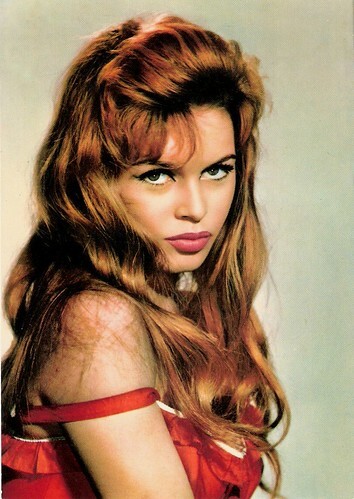
Italian postcard by Rotalcolor, Milano, no. 45.
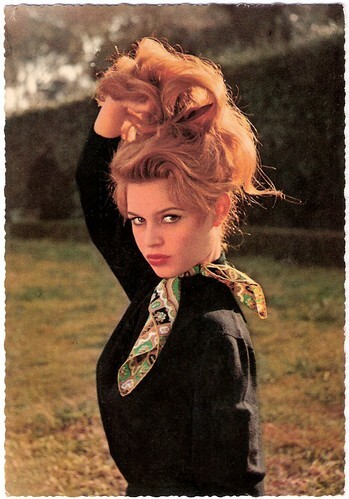
German postcard by Kruger, no. 902/137. Photo: Herbert Fried / Ufa.
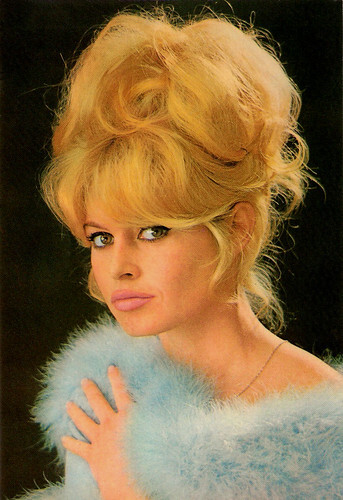
French postcard by E.D.U.G., no. 379. Photo: Sam Lévin.
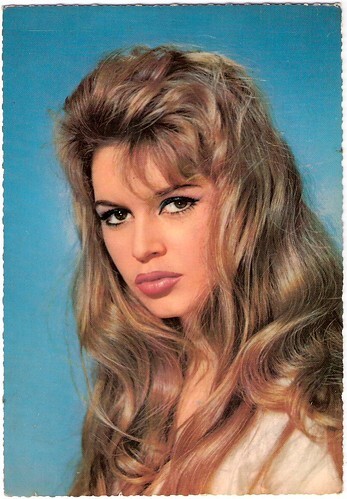
German postcard by Krüger/Ufa, no. 902/87. Photo: Sam Lévin.
Massive media attention
Brigitte Bardot was born in Paris in 1934. Her father, Louis Bardot, had an engineering degree and worked with his father in the family business. Her mother, Ann-Marie Mucel, was 14 years younger than Brigitte's father and they married in 1933.
Brigitte's mother encouraged her daughter to take up music and dance. At the age of 13, she entered the Conservatoire Nationale de Danse to study ballet. By the time she was 15, Brigitte was trying a modelling career and found herself in May 1949 on the cover of the French magazine Elle.
Her incredible beauty was readily apparent, Brigitte was noticed by Roger Vadim, then an assistant to the film director Marc Allegrét. Vadim was infatuated with Bardot and encouraged her to start working as a film actress.
BB was 18 when she debuted in the comedy Le Trou Normand/Crazy for Love (Jean Boyer, 1952). In the same year, she married Vadim. Brigitte wanted to marry him when she was 17, but her parents quashed any marriage plans until she turned 18. In April 1953 she attended the Cannes Film Festival where she received massive media attention. She soon was every man's idea of the girl he'd like to meet in Paris.
From 1952 to 1956 she appeared in seventeen films. Her films were generally lightweight romantic dramas in which she was cast as an ingénue or siren, often with an element of undress. In 1953, she made her first US production, Un acte d'amour/Act of Love (Anatole Litvak, 1953) with Kirk Douglas , but she continued to make films in France.
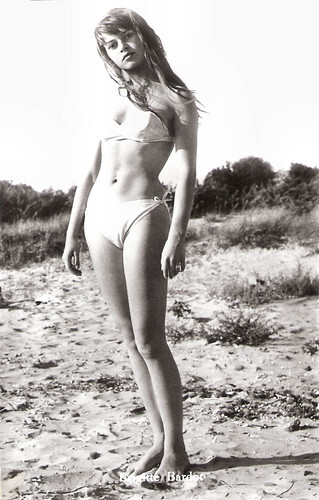
Dutch postcard by Hercules, Haarlem, no. 20. Brigitte Bardot in Manina, la fille sans voiles/The Girl in the Bikini (Willy Rozier, 1952).
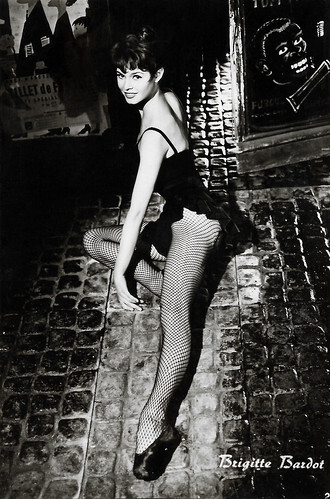
Vintage postcard, no. 2043. Brigitte Bardot on the set of Doctor at Sea (Ralph Thomas, 1955).
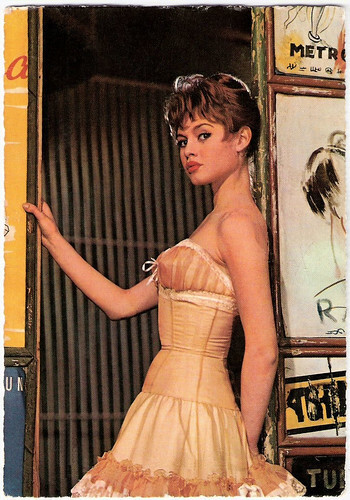
German postcard by Krüger. Photo: Cornel Lucas, 1955. Publicity still for Doctor at Sea (Ralph Thomas, 1955).
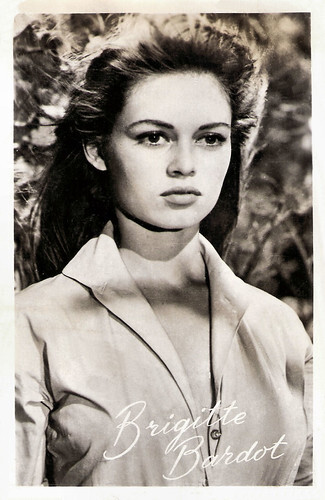
Dutch postcard by Uitg. Takken, Utrecht, no. 3066. Photo: publicity still for La lumière d'en face/Female and the Flesh (Georges Lacombe, 1955).
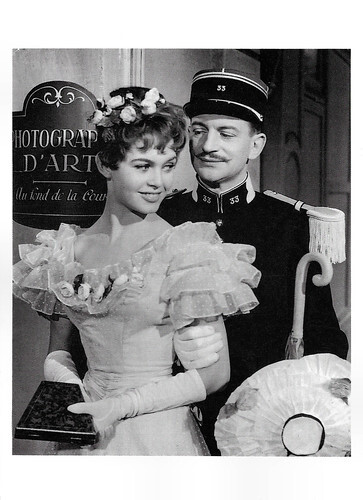
Swiss-German-British postcard by News Productions, Baulmes / Filmwelt Berlin, Bakede / News Productions, Stroud, no. 56501. Photo: Collection Cinémathèque Suisse, Lausanne.Brigitte Bardot and Yves Robert in Les Grandes Manoeuvres/Summer Manoeuvres (René Clair, 1955), produced by Filmsonor and Rizzoli Films.
Immoral teenager
Roger Vadim was not content with the light fare his wife was offered. He felt Brigitte Bardot was being undersold. Looking for something more like an art film to push her as a serious actress, he showcased her in Et Dieu créa la femme/...And God Created Woman (Roger Vadim, 1956). This film, about an immoral teenager in a respectable small-town setting, was a smash success on both sides of the Atlantic.
Craig Butler at AllMovie : "It's easy enough to say that ...And God Created Woman is much more important for its historical significance than for its actual quality as a film, and that's true to an extent. Woman's immense popularity, due to its willingness to directly embrace an exploration of sex as well as its willingness to show a degree of nudity that was remarkably daring for its day, demonstrated that audiences were willing to view subject matter that was considered too racy for the average moviegoer.
This had both positive (freedom to explore, especially for the French filmmakers of the time) and negative (freedom to exploit) consequences, but its impact is undeniable. It's also true that Woman is not a great work of art, not with a story that is ultimately rather thin, some painful dialogue, and an attitude toward its characters and their sexuality that is unclear and inconsistent.
Yet Woman is still fascinating, due in no small part to the presence of Brigitte Bardot in the role that made her an international star and sex symbol. She's not demonstrating great acting here, although her performance is actually good and much better than necessary, and her legendary mambo scene at the climax is nothing short of sensational."
During the shooting of Et Dieu créa la femme/And God Created Woman (Roger Vadim, 1956), directed by her husband, Brigitte Bardot had an affair with her co-star Jean-Louis Trintignant , who at that time was married to French actress Stéphane Audran . Her divorce from Vadim followed, but they remained friends and collaborated in later work.
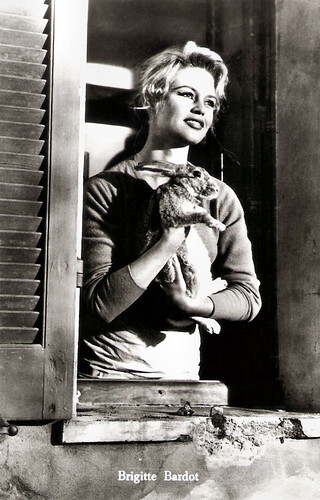
Dutch postcard by Gebr. Spanjersberg N.V., Rotterdam. sent by mail in 1963. Brigitte Bardot in Et Dieu... créa la femme/...And God Created Woman (Roger Vadim, 1956).
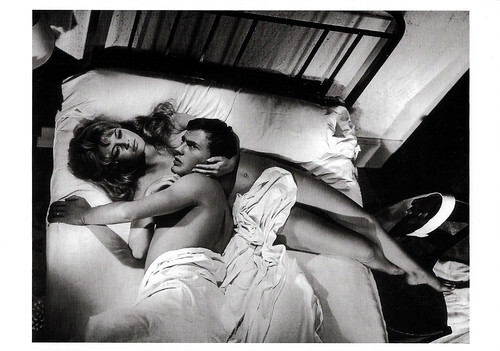
Swiss postcard by News Productions, Baulmes / CVB Publishers, Grandson, no. 56783 Photo: Collection Cinémathèque Suisse, Lausanne. Jean-Louis Trintignant and Brigitte Bardot in Et Dieu... créa la femme/And God Created Woman (Roger Vadim, 1956).
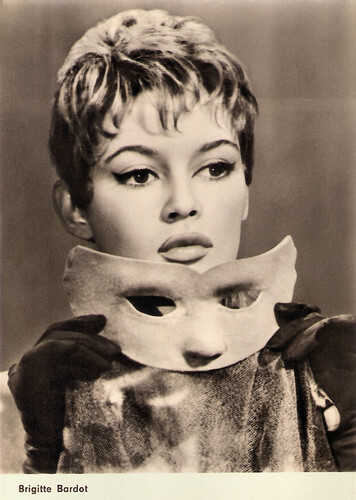
East-German postcard by VEB Progress Filmvertrieb, Berlin, no. 1.975, 1963. Photo: publicity still for En effeuillant la marguerite/Plucking the Daisy (Marc Allégret, 1956).
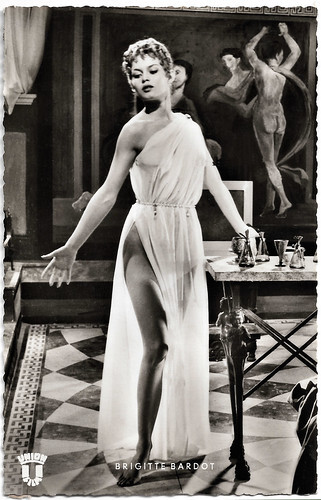
West German postcard by Kunst und Bild, Berlin-Charlottenburg, no. S 780. Photo: Union Film, Den Haag. Brigitte Bardot in Mio figlio Nerone/Nero's Mistress(Steno, 1956).
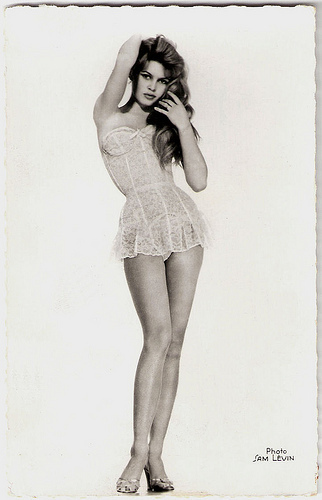
French postcard by Editions du Globe, Paris, no. 599. Photo: Sam Lévin.
Sensuality and slight immorality
Et Dieu créa la femme/...And God Created Woman (Roger Vadim, 1956) helped Brigitte Bardot's international status. The film took the USA by storm, her explosive sexuality being unlike anything seen in the States since the days of the 'flapper' in the 1920s.
It gave rise to the phrase 'sex kitten' and fascination of her in America consisted of magazine photographs and dubbed over French films - good, bad or indifferent, her films drew audiences - mainly men - into theatres like lemmings.
BB appeared in light comedies like Doctor at Large (Ralph Thomas, 1957) - the third of the British 'Doctor' series starring Dirk Bogarde - and Une Parisienne/La Parisienne (Michel Boisrond, 1957) which suited her acting skills best. However, she was a sensation in the crime drama En cas de malheur/Love is My Profession (Claude Autant-Lara, 1958).
Hal Erickson at AllMovie : "This Brigitte Bardot vehicle ran into stiff opposition from the Catholic Legion of Decency, severely limiting its U.S. distribution. Bardot plays a nubile small-time thief named Yvette, who becomes the mistress of influential defence attorney Andre ( Jean Gabin ). Though Andre is able to shower Yvette with jewels and furs, he cannot "buy" her heart, and thus it is that it belongs to handsome young student Mazzetti ( Franco Interlenghi ). Alas, Yvette is no judge of human nature: attractive though Mazzetti can be, he has a dangerous and deadly side. En Cas de Malheur contains a nude scene that has since been reprinted in freeze-frame form innumerable times by both film-history books and girlie magazines."
Photographer Sam Lévin 's photos contributed considerably to her image of sensuality and slight immorality. One of Lévin's pictures shows Brigitte, dressed in a white corset. It is said that around 1960 postcards with this photograph outsold in Paris those of the Eiffel Tower.
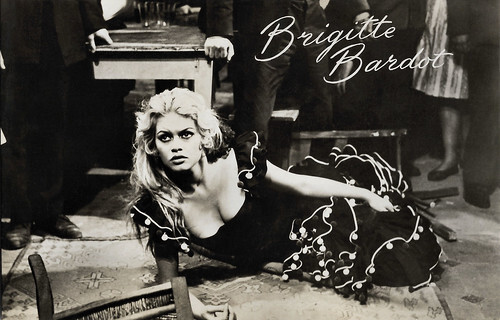
Dutch postcard by Uitg. Takken, Utrecht, no. 3944. Photo: Pathé / N.V. City film, Den Haag. Brigitte Bardot in La femme et le pantin/The Female (Julien Duvivier, 1958).
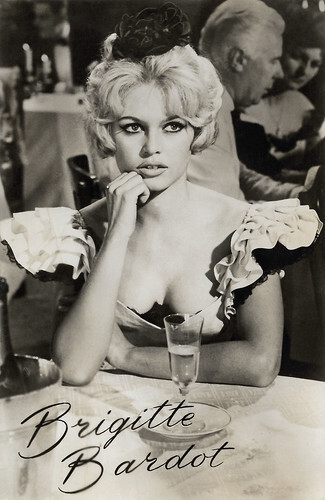
Dutch postcard by Uitg. Takken, Utrecht, no. 3948. Photo: Pathé / N.V. City film, Den Haag. Brigitte Bardot in La femme et le pantin/The Female (Julien Duvivier, 1958).
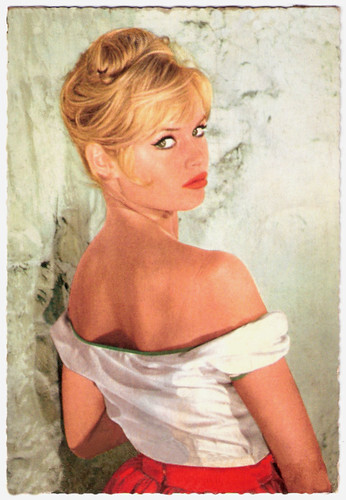
German postcard by ISV, no. H 88. Photo: Peter Basch. Publicity still for Les bijoutiers du clair de lune/The night heaven fell (Roger Vadim, 1958).
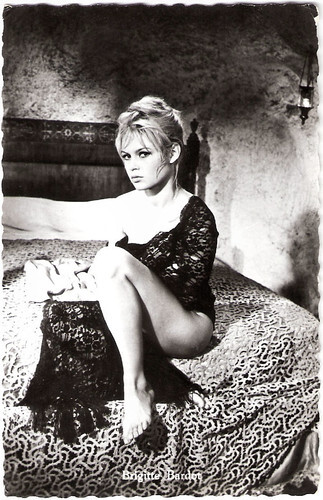
Dutch postcard by Hercules, Haarlem, no. 1069. Photo: Brigitte Bardot in Les bijoutiers du clair de lune/The Night Heaven Fell (Roger Vadim, 1958).
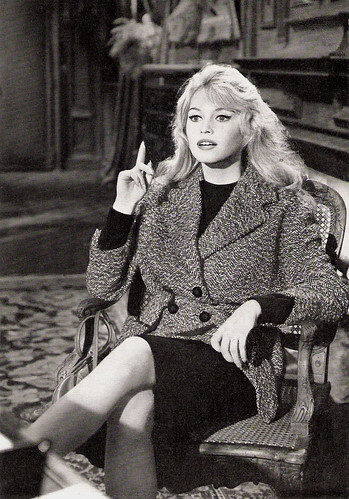
German postcard, no. 1. Photo: Unifrance-Film. Publicity still for En cas de malheur/Love is my profession (Claude Autant-Lara, 1958).
Preying paparazzi
Brigitte Bardot divorced Vadim in 1957 and in 1959 she married actor Jacques Charrier , with whom she starred in Babette s'en va-t-en guerre/Babette Goes to War (Christian-Jaque, 1959). The paparazzi preyed upon her marriage, while she and her husband clashed over the direction of her career.
Her films became more substantial, but this brought a heavy pressure of dual celebrity as she sought critical acclaim while remaining a glamour model for most of the world. Vie privée/Private Life (1962), directed by Louis Malle has more than an element of autobiography in it.
James Travers at French Films : "Brigitte Bardot hadn’t quite reached the high point of her career when she agreed to make this film with high-profile New Wave film director Louis Malle. Even so, the pressure of being a living icon was obviously beginning to get to France’s sex goddess and Vie privée is as much an attempt by Bardot to come to terms with her celebrity as anything else.
Malle is clearly fascinated by Bardot and the documentary approach he adopts for this film reinforces the impression that it is more a biography of the actress than a work of fiction. Of course, it’s not entirely biographical, but the story is remarkably close to Bardot’s own life and comes pretty close to predicting how her career would end."
The scene in which, returning to her apartment, Bardot's character is harangued in the elevator by a middle-aged cleaning lady calling her offensive names, was based on an actual incident, and is a resonant image of celebrity in the mid-20th century. Soon afterwards Bardot withdrew to the seclusion of Southern France.
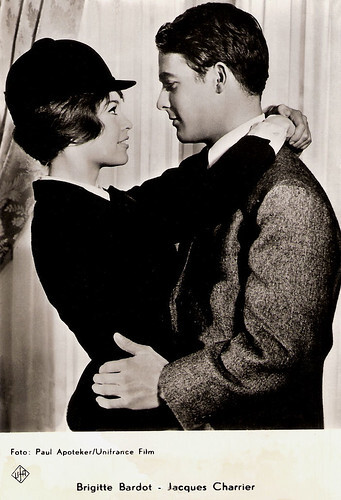
Dutch postcard by Gebr. Spanjersberg N.V., Rotterdam, no. 4518. Photo: Paul Apoteker / Unifrance Film / Ufa. BB with Jacques Charrier in Babette s'en va-t-en guerre/Babette Goes to War (Christian-Jaque, 1959).
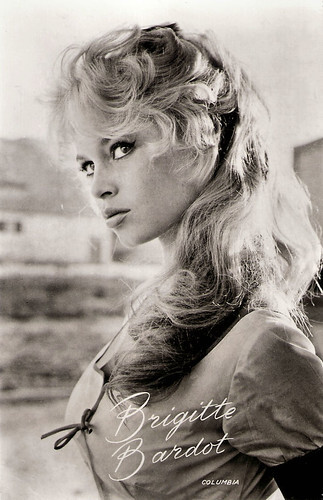
Dutch postcard by Uitg. Takken, Utrecht, no. 3655. Photo: Columbia. Brigitte Bardot in Babette s'en va-t-en guerre/Babette Goes to War (Christian-Jaque, 1959).
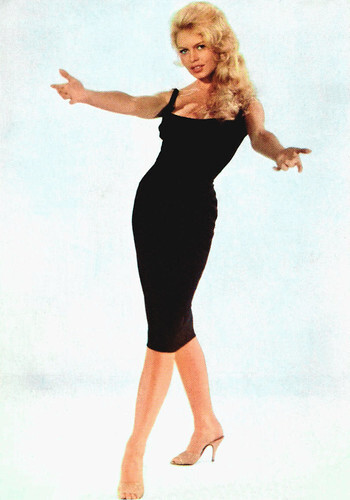
French postcard by Editions P.I. Paris, no. 1042, presented by Les Carbones Korès 'Carboplane'. Photo: Francos-Films. Publicity still for Voulez-vous danser avec moi?/Come dance with me (Michel Boisrond, 1959).
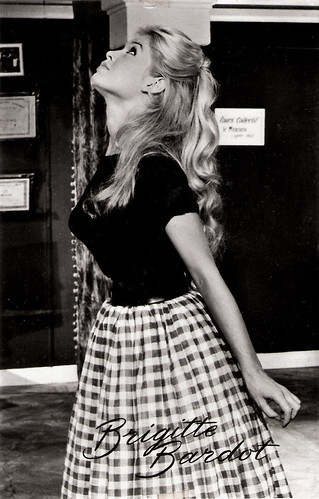
Dutch postcard by Uitg. Takken, Utrecht, no. 4332. Sent by mail in 1960. Photo: still from Voulez-vous danser avec moi?/Come Dance with Me! (Michel Boisrond, 1959).
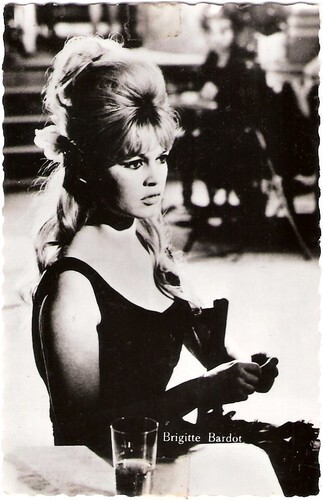
Dutch postcard, no. 752. Photo: still from La Bride sur le Cou/Please Not Now! (Jean Aurel, Jack Dunn Trop, Roger Vadim, 1961).
Harley Davidson
Brigitte Bardot's other husbands were German millionaire playboy Gunter Sachs and right-wing politician Bernard d'Ormale. She is reputed to have had relationships with many other men including Samy Frey , her co-star in La Vérité/The Truth (Henri-Georges Clouzot, 1960), and musicians Serge Gainsbourg and Sacha Distel .
In 1963, Brigitte Bardot starred in Jean-Luc Godard 's critically acclaimed film Le Mépris/Contempt (Jean-Luc Godard, 1963) opposite Michel Piccoli .
She was also featured along with such notable actors as Alain Delon in Amours célèbres/Famous Love Affairs (Michel Boisrond, 1961) and Histoires extraordinaires/Tales of Mystery (Louis Malle, 1968), Jeanne Moreau in Viva Maria! (Louis Malle, 1965), Sean Connery in Shalako (Edward Dmytryk, 1968), and Claudia Cardinale in Les Pétroleuses/Petroleum Girls (Christian-Jaque, 1971).
She participated in various musical shows and recorded many popular songs in the 1960s and 1970s, mostly in collaboration with Serge Gainsbourg , Bob Zagury and Sacha Distel , including 'Harley Davidson', 'Le Soleil De Ma Vie' (the cover of Stevie Wonder's 'You Are the Sunshine of My Life') and the notorious 'Je t'aime... moi non plus'.
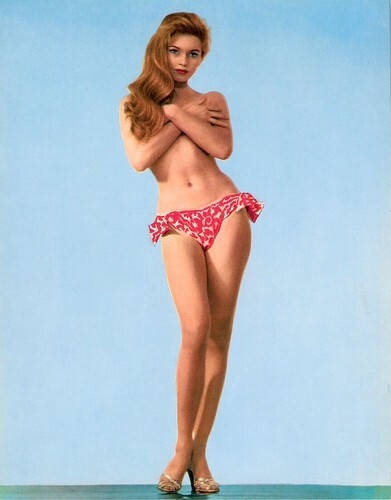
Big German postcard by ISV.
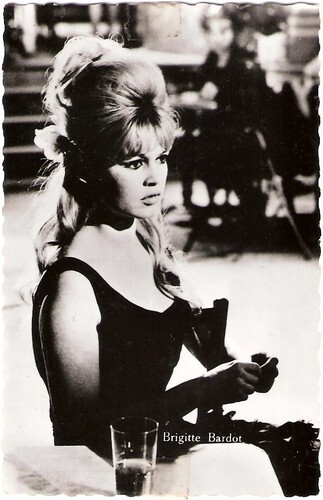
Dutch postcard, no. 752. Photo: still from La Bride sur le Cou/Please Not Now! (Jean Aurel, Jack Dunn Trop, Roger Vadim, 1961).
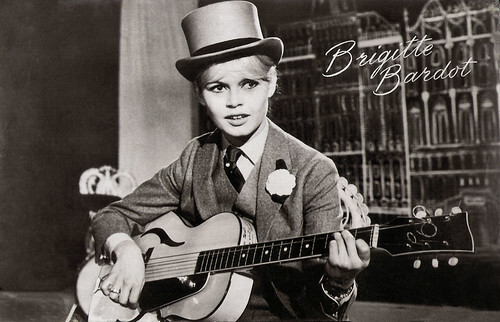
Dutch postcard by Uitgeverij Takken, Utrecht, no. AX 4903. Photo: Dalmas. Brigitte Bardot plays the guitar in the TV show Happy New Year Brigitte, which aired on the evening of 31 December 1961.
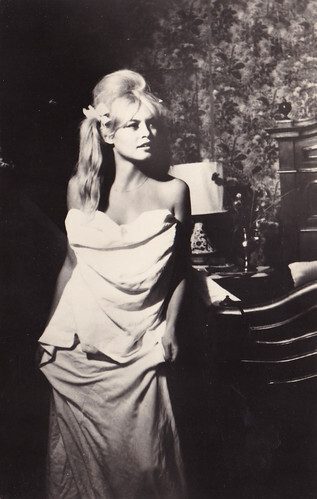
Czech postcard by Pressfoto, Praha (Prague). Photo: publicity still for Vie privée/A Very Private Affair (Louis Malle, 1962). Collection: Carla Bosch.
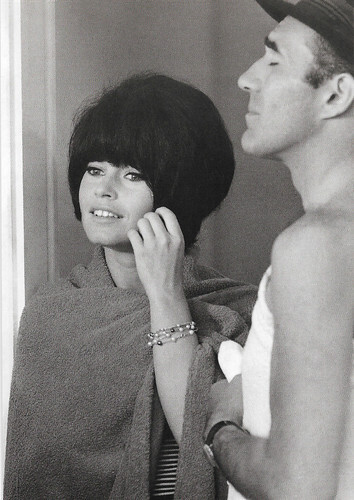
French postcard in the Collection Cinéma series by Editions Art & Scène, Paris, no. CF 101, 1996. Brigitte Bardot and Michel Piccoli in Le Mépris(Jean-Luc Godard, 1963).
Racial hatred
Brigitte Bardot’s film career showed a steady decline in the late 1960s and early 1970s. In 1973 just before her fortieth birthday, she announced her retirement.
She chose to use her fame to promote animal rights. In 1976 she established the Brigitte Bardot Foundation for the Welfare and Protection of Animals. She became a vegetarian and raised three million French francs to fund the foundation by auctioning off jewellery and many personal belongings. For this work, she was awarded the Légion d’honneur in 1984.
During the 1990s she became also outspoken in her criticism of immigration, interracial relationships, Islam in France and homosexuality. Her husband Bernard d'Ormal is a former adviser of the far-right Front National party. Bardot has been convicted five times for 'inciting racial hatred'.
More fun is that Bardot is recognised for popularising bikini swimwear, in such early films as Manina/Woman without a Veil (Willy Rozier, 1952), in her appearances at Cannes and in many photo shoots. Bardot also brought into fashion the 'choucroute' ('Sauerkraut') hairstyle (a sort of beehive hairstyle) and gingham clothes after wearing a checkered pink dress, designed by Jacques Esterel, at her wedding to Charrier. The fashions of the 1960s looked effortlessly right and spontaneous on her.
Time Magazine : "She is the princess of pout, the countess of come hither. Brigitte Bardot exuded a carefree, naïve sexuality that brought a whole new audience to French films."
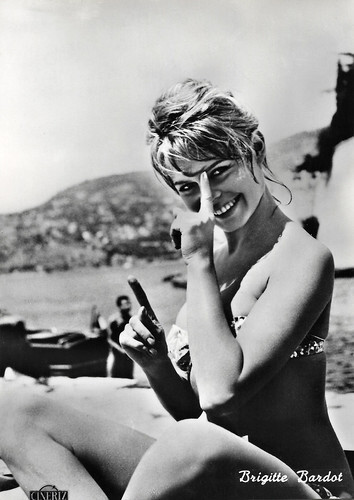
Italian postcard by Bromofoto, Milano, no. 1435. Photo: Cineriz.
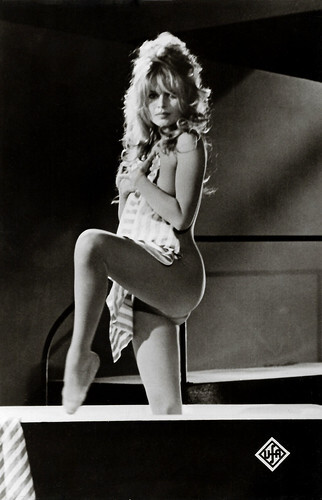
Dutch postcard by Gebr. Spanjersberg N.V., Rotterdam, no. 1005. Photo: Ufa.
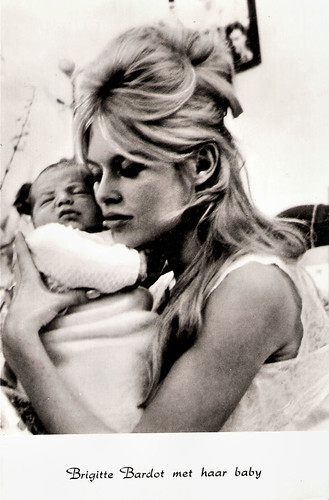
Dutch postcard by Gebr. Spanjersberg N.V., Rotterdam, no. 5368. Caption: Brigitte Bardot with her baby.
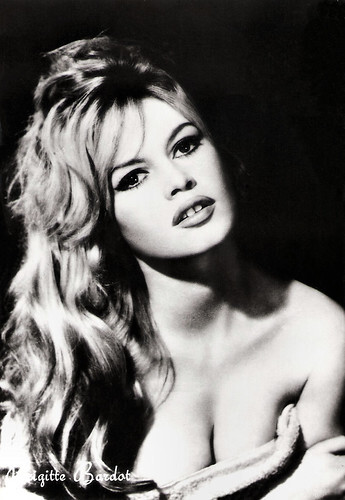
Yugoslavian postcard by NPO, no. G18. Photo: Sam Lévin.
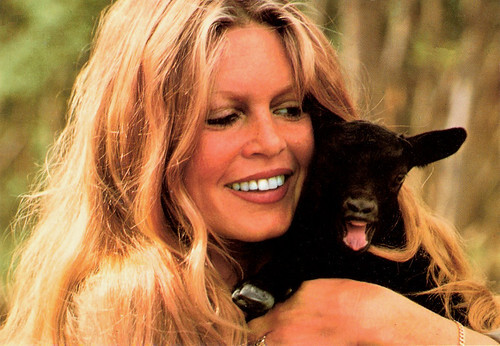
French postcard by Editions Lyna, Paris, no. 2104. Caption: Tu deviens reponsable pour toujours de ce que tu as apprivoisé. Antoine de St-Exupéry.
Sources: (IMDb), Hal Erickson (AllMovie), Craig Butler (AllMovie), James Travers (French Films), French Films, Wikipedia and .
This year, on 28 September 2024, Brigitte Bardot will turn 90. Ten years ago we celebrated her 80th birthday with a Happy Birthday post with 28 of our favourite BB postcards. Check it out and visit the Brigitte Bardot group at Flickr!

Dutch postcard printed by Gebr. Spanjersberg N.V. Rotterdam. Brigitte Bardot in Doctor at Sea (Ralph Thomas, 1955).

French postcard by Edition P.I., Paris, no. CK 292. Photo: Yousuf Karsh / Camera Press / Ufa. Publicity still for La femme et le pantin/A Woman Like Satan (Julien Duvivier, 1959).

Italian postcard by Rotalcolor, Milano, no. 45.

German postcard by Kruger, no. 902/137. Photo: Herbert Fried / Ufa.

French postcard by E.D.U.G., no. 379. Photo: Sam Lévin.

German postcard by Krüger/Ufa, no. 902/87. Photo: Sam Lévin.
Massive media attention
Brigitte Bardot was born in Paris in 1934. Her father, Louis Bardot, had an engineering degree and worked with his father in the family business. Her mother, Ann-Marie Mucel, was 14 years younger than Brigitte's father and they married in 1933.
Brigitte's mother encouraged her daughter to take up music and dance. At the age of 13, she entered the Conservatoire Nationale de Danse to study ballet. By the time she was 15, Brigitte was trying a modelling career and found herself in May 1949 on the cover of the French magazine Elle.
Her incredible beauty was readily apparent, Brigitte was noticed by Roger Vadim, then an assistant to the film director Marc Allegrét. Vadim was infatuated with Bardot and encouraged her to start working as a film actress.
BB was 18 when she debuted in the comedy Le Trou Normand/Crazy for Love (Jean Boyer, 1952). In the same year, she married Vadim. Brigitte wanted to marry him when she was 17, but her parents quashed any marriage plans until she turned 18. In April 1953 she attended the Cannes Film Festival where she received massive media attention. She soon was every man's idea of the girl he'd like to meet in Paris.
From 1952 to 1956 she appeared in seventeen films. Her films were generally lightweight romantic dramas in which she was cast as an ingénue or siren, often with an element of undress. In 1953, she made her first US production, Un acte d'amour/Act of Love (Anatole Litvak, 1953) with Kirk Douglas , but she continued to make films in France.

Dutch postcard by Hercules, Haarlem, no. 20. Brigitte Bardot in Manina, la fille sans voiles/The Girl in the Bikini (Willy Rozier, 1952).

Vintage postcard, no. 2043. Brigitte Bardot on the set of Doctor at Sea (Ralph Thomas, 1955).

German postcard by Krüger. Photo: Cornel Lucas, 1955. Publicity still for Doctor at Sea (Ralph Thomas, 1955).

Dutch postcard by Uitg. Takken, Utrecht, no. 3066. Photo: publicity still for La lumière d'en face/Female and the Flesh (Georges Lacombe, 1955).

Swiss-German-British postcard by News Productions, Baulmes / Filmwelt Berlin, Bakede / News Productions, Stroud, no. 56501. Photo: Collection Cinémathèque Suisse, Lausanne.Brigitte Bardot and Yves Robert in Les Grandes Manoeuvres/Summer Manoeuvres (René Clair, 1955), produced by Filmsonor and Rizzoli Films.
Immoral teenager
Roger Vadim was not content with the light fare his wife was offered. He felt Brigitte Bardot was being undersold. Looking for something more like an art film to push her as a serious actress, he showcased her in Et Dieu créa la femme/...And God Created Woman (Roger Vadim, 1956). This film, about an immoral teenager in a respectable small-town setting, was a smash success on both sides of the Atlantic.
Craig Butler at AllMovie : "It's easy enough to say that ...And God Created Woman is much more important for its historical significance than for its actual quality as a film, and that's true to an extent. Woman's immense popularity, due to its willingness to directly embrace an exploration of sex as well as its willingness to show a degree of nudity that was remarkably daring for its day, demonstrated that audiences were willing to view subject matter that was considered too racy for the average moviegoer.
This had both positive (freedom to explore, especially for the French filmmakers of the time) and negative (freedom to exploit) consequences, but its impact is undeniable. It's also true that Woman is not a great work of art, not with a story that is ultimately rather thin, some painful dialogue, and an attitude toward its characters and their sexuality that is unclear and inconsistent.
Yet Woman is still fascinating, due in no small part to the presence of Brigitte Bardot in the role that made her an international star and sex symbol. She's not demonstrating great acting here, although her performance is actually good and much better than necessary, and her legendary mambo scene at the climax is nothing short of sensational."
During the shooting of Et Dieu créa la femme/And God Created Woman (Roger Vadim, 1956), directed by her husband, Brigitte Bardot had an affair with her co-star Jean-Louis Trintignant , who at that time was married to French actress Stéphane Audran . Her divorce from Vadim followed, but they remained friends and collaborated in later work.

Dutch postcard by Gebr. Spanjersberg N.V., Rotterdam. sent by mail in 1963. Brigitte Bardot in Et Dieu... créa la femme/...And God Created Woman (Roger Vadim, 1956).

Swiss postcard by News Productions, Baulmes / CVB Publishers, Grandson, no. 56783 Photo: Collection Cinémathèque Suisse, Lausanne. Jean-Louis Trintignant and Brigitte Bardot in Et Dieu... créa la femme/And God Created Woman (Roger Vadim, 1956).

East-German postcard by VEB Progress Filmvertrieb, Berlin, no. 1.975, 1963. Photo: publicity still for En effeuillant la marguerite/Plucking the Daisy (Marc Allégret, 1956).

West German postcard by Kunst und Bild, Berlin-Charlottenburg, no. S 780. Photo: Union Film, Den Haag. Brigitte Bardot in Mio figlio Nerone/Nero's Mistress(Steno, 1956).

French postcard by Editions du Globe, Paris, no. 599. Photo: Sam Lévin.
Sensuality and slight immorality
Et Dieu créa la femme/...And God Created Woman (Roger Vadim, 1956) helped Brigitte Bardot's international status. The film took the USA by storm, her explosive sexuality being unlike anything seen in the States since the days of the 'flapper' in the 1920s.
It gave rise to the phrase 'sex kitten' and fascination of her in America consisted of magazine photographs and dubbed over French films - good, bad or indifferent, her films drew audiences - mainly men - into theatres like lemmings.
BB appeared in light comedies like Doctor at Large (Ralph Thomas, 1957) - the third of the British 'Doctor' series starring Dirk Bogarde - and Une Parisienne/La Parisienne (Michel Boisrond, 1957) which suited her acting skills best. However, she was a sensation in the crime drama En cas de malheur/Love is My Profession (Claude Autant-Lara, 1958).
Hal Erickson at AllMovie : "This Brigitte Bardot vehicle ran into stiff opposition from the Catholic Legion of Decency, severely limiting its U.S. distribution. Bardot plays a nubile small-time thief named Yvette, who becomes the mistress of influential defence attorney Andre ( Jean Gabin ). Though Andre is able to shower Yvette with jewels and furs, he cannot "buy" her heart, and thus it is that it belongs to handsome young student Mazzetti ( Franco Interlenghi ). Alas, Yvette is no judge of human nature: attractive though Mazzetti can be, he has a dangerous and deadly side. En Cas de Malheur contains a nude scene that has since been reprinted in freeze-frame form innumerable times by both film-history books and girlie magazines."
Photographer Sam Lévin 's photos contributed considerably to her image of sensuality and slight immorality. One of Lévin's pictures shows Brigitte, dressed in a white corset. It is said that around 1960 postcards with this photograph outsold in Paris those of the Eiffel Tower.

Dutch postcard by Uitg. Takken, Utrecht, no. 3944. Photo: Pathé / N.V. City film, Den Haag. Brigitte Bardot in La femme et le pantin/The Female (Julien Duvivier, 1958).

Dutch postcard by Uitg. Takken, Utrecht, no. 3948. Photo: Pathé / N.V. City film, Den Haag. Brigitte Bardot in La femme et le pantin/The Female (Julien Duvivier, 1958).

German postcard by ISV, no. H 88. Photo: Peter Basch. Publicity still for Les bijoutiers du clair de lune/The night heaven fell (Roger Vadim, 1958).

Dutch postcard by Hercules, Haarlem, no. 1069. Photo: Brigitte Bardot in Les bijoutiers du clair de lune/The Night Heaven Fell (Roger Vadim, 1958).

German postcard, no. 1. Photo: Unifrance-Film. Publicity still for En cas de malheur/Love is my profession (Claude Autant-Lara, 1958).
Preying paparazzi
Brigitte Bardot divorced Vadim in 1957 and in 1959 she married actor Jacques Charrier , with whom she starred in Babette s'en va-t-en guerre/Babette Goes to War (Christian-Jaque, 1959). The paparazzi preyed upon her marriage, while she and her husband clashed over the direction of her career.
Her films became more substantial, but this brought a heavy pressure of dual celebrity as she sought critical acclaim while remaining a glamour model for most of the world. Vie privée/Private Life (1962), directed by Louis Malle has more than an element of autobiography in it.
James Travers at French Films : "Brigitte Bardot hadn’t quite reached the high point of her career when she agreed to make this film with high-profile New Wave film director Louis Malle. Even so, the pressure of being a living icon was obviously beginning to get to France’s sex goddess and Vie privée is as much an attempt by Bardot to come to terms with her celebrity as anything else.
Malle is clearly fascinated by Bardot and the documentary approach he adopts for this film reinforces the impression that it is more a biography of the actress than a work of fiction. Of course, it’s not entirely biographical, but the story is remarkably close to Bardot’s own life and comes pretty close to predicting how her career would end."
The scene in which, returning to her apartment, Bardot's character is harangued in the elevator by a middle-aged cleaning lady calling her offensive names, was based on an actual incident, and is a resonant image of celebrity in the mid-20th century. Soon afterwards Bardot withdrew to the seclusion of Southern France.

Dutch postcard by Gebr. Spanjersberg N.V., Rotterdam, no. 4518. Photo: Paul Apoteker / Unifrance Film / Ufa. BB with Jacques Charrier in Babette s'en va-t-en guerre/Babette Goes to War (Christian-Jaque, 1959).

Dutch postcard by Uitg. Takken, Utrecht, no. 3655. Photo: Columbia. Brigitte Bardot in Babette s'en va-t-en guerre/Babette Goes to War (Christian-Jaque, 1959).

French postcard by Editions P.I. Paris, no. 1042, presented by Les Carbones Korès 'Carboplane'. Photo: Francos-Films. Publicity still for Voulez-vous danser avec moi?/Come dance with me (Michel Boisrond, 1959).

Dutch postcard by Uitg. Takken, Utrecht, no. 4332. Sent by mail in 1960. Photo: still from Voulez-vous danser avec moi?/Come Dance with Me! (Michel Boisrond, 1959).

Dutch postcard, no. 752. Photo: still from La Bride sur le Cou/Please Not Now! (Jean Aurel, Jack Dunn Trop, Roger Vadim, 1961).
Harley Davidson
Brigitte Bardot's other husbands were German millionaire playboy Gunter Sachs and right-wing politician Bernard d'Ormale. She is reputed to have had relationships with many other men including Samy Frey , her co-star in La Vérité/The Truth (Henri-Georges Clouzot, 1960), and musicians Serge Gainsbourg and Sacha Distel .
In 1963, Brigitte Bardot starred in Jean-Luc Godard 's critically acclaimed film Le Mépris/Contempt (Jean-Luc Godard, 1963) opposite Michel Piccoli .
She was also featured along with such notable actors as Alain Delon in Amours célèbres/Famous Love Affairs (Michel Boisrond, 1961) and Histoires extraordinaires/Tales of Mystery (Louis Malle, 1968), Jeanne Moreau in Viva Maria! (Louis Malle, 1965), Sean Connery in Shalako (Edward Dmytryk, 1968), and Claudia Cardinale in Les Pétroleuses/Petroleum Girls (Christian-Jaque, 1971).
She participated in various musical shows and recorded many popular songs in the 1960s and 1970s, mostly in collaboration with Serge Gainsbourg , Bob Zagury and Sacha Distel , including 'Harley Davidson', 'Le Soleil De Ma Vie' (the cover of Stevie Wonder's 'You Are the Sunshine of My Life') and the notorious 'Je t'aime... moi non plus'.

Big German postcard by ISV.

Dutch postcard, no. 752. Photo: still from La Bride sur le Cou/Please Not Now! (Jean Aurel, Jack Dunn Trop, Roger Vadim, 1961).

Dutch postcard by Uitgeverij Takken, Utrecht, no. AX 4903. Photo: Dalmas. Brigitte Bardot plays the guitar in the TV show Happy New Year Brigitte, which aired on the evening of 31 December 1961.

Czech postcard by Pressfoto, Praha (Prague). Photo: publicity still for Vie privée/A Very Private Affair (Louis Malle, 1962). Collection: Carla Bosch.

French postcard in the Collection Cinéma series by Editions Art & Scène, Paris, no. CF 101, 1996. Brigitte Bardot and Michel Piccoli in Le Mépris(Jean-Luc Godard, 1963).
Racial hatred
Brigitte Bardot’s film career showed a steady decline in the late 1960s and early 1970s. In 1973 just before her fortieth birthday, she announced her retirement.
She chose to use her fame to promote animal rights. In 1976 she established the Brigitte Bardot Foundation for the Welfare and Protection of Animals. She became a vegetarian and raised three million French francs to fund the foundation by auctioning off jewellery and many personal belongings. For this work, she was awarded the Légion d’honneur in 1984.
During the 1990s she became also outspoken in her criticism of immigration, interracial relationships, Islam in France and homosexuality. Her husband Bernard d'Ormal is a former adviser of the far-right Front National party. Bardot has been convicted five times for 'inciting racial hatred'.
More fun is that Bardot is recognised for popularising bikini swimwear, in such early films as Manina/Woman without a Veil (Willy Rozier, 1952), in her appearances at Cannes and in many photo shoots. Bardot also brought into fashion the 'choucroute' ('Sauerkraut') hairstyle (a sort of beehive hairstyle) and gingham clothes after wearing a checkered pink dress, designed by Jacques Esterel, at her wedding to Charrier. The fashions of the 1960s looked effortlessly right and spontaneous on her.
Time Magazine : "She is the princess of pout, the countess of come hither. Brigitte Bardot exuded a carefree, naïve sexuality that brought a whole new audience to French films."

Italian postcard by Bromofoto, Milano, no. 1435. Photo: Cineriz.

Dutch postcard by Gebr. Spanjersberg N.V., Rotterdam, no. 1005. Photo: Ufa.

Dutch postcard by Gebr. Spanjersberg N.V., Rotterdam, no. 5368. Caption: Brigitte Bardot with her baby.

Yugoslavian postcard by NPO, no. G18. Photo: Sam Lévin.

French postcard by Editions Lyna, Paris, no. 2104. Caption: Tu deviens reponsable pour toujours de ce que tu as apprivoisé. Antoine de St-Exupéry.
Sources: (IMDb), Hal Erickson (AllMovie), Craig Butler (AllMovie), James Travers (French Films), French Films, Wikipedia and .
This year, on 28 September 2024, Brigitte Bardot will turn 90. Ten years ago we celebrated her 80th birthday with a Happy Birthday post with 28 of our favourite BB postcards. Check it out and visit the Brigitte Bardot group at Flickr!
Published on January 01, 2024 22:00
December 31, 2023
Stars who passed away in 2023
On the first day of 2024, EFSP remembers the stars of the international cinema we had to say farewell to in 2023. Thank you, for your films and postcards. We salute you!
16 January 2023: Gina Lollobrigida
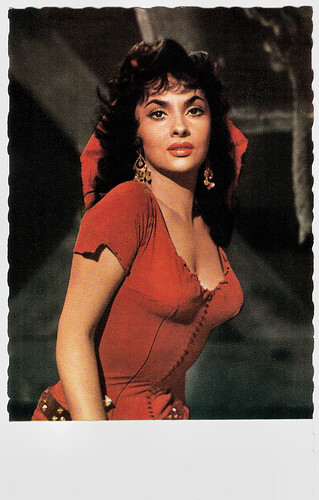
German postcard by Kolibri-Verlag G.m.b.H., Minden (Westf.), no. F 18. Photo: Constantin. Publicity still for Notre Dame de Paris (Jean Delannoy, 1956).
Italian actress and photojournalist Gina Lollobrigida (1927-2023), was one of Europe’s most prominent film stars of the 1950s. ‘La Lollo’ was the first European sex symbol of the post-war years and she paved the way into Hollywood for her younger colleagues Sophia Loren and Claudia Cardinale.
27 January 2023: Sylvia Syms (1934-2023)
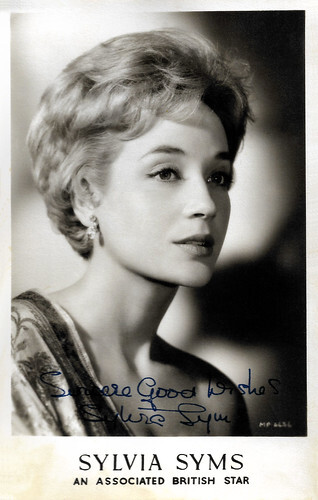
British autographcard. Photo: Associated British.
English actress Sylvia Syms (1934-2023) passed away at the age of 89. She was best known for her roles in the films Ice Cold in Alex (1958), Victim (1961), and The Tamarind Seed (1974). She continued to act until 2019 and portrayed the Queen Mother in The Queen (2006).
15 February 2023: Raquel Welch (1940-2023)

Vintage photo by Terry O'Neill.
American actress and sex symbol Raquel Welch (1940-2023) died at the age of 82 after a short illness. She was one of the icons of the 1960s and 1970s. Welch first won attention for her role in Fantastic Voyage (1966). In Great Britain, she then made One Million Years B.C. (1966). Although she had only three lines in the film, a poster of Welch in a furry prehistoric bikini became an amazing bestseller and catapulted her to stardom.
17 February 2023: Stella Stevens (1938-2023)
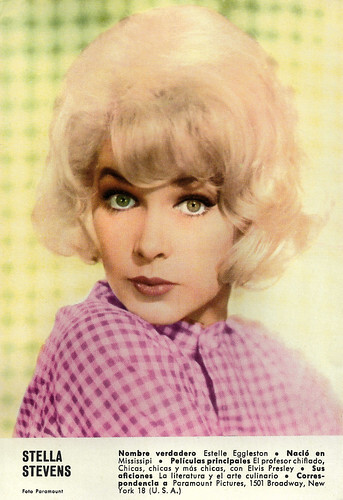
Spanish card. Photo: Paramount.
American actress Stella Stevens (1938-2023) passed away from Alzheimer's disease. The comedienne starred as a voluptuous platinum blonde with a deep sultry voice in many Hollywood films of the 1960s. During the decade she was one of the most photographed women in the world. Stella Stevens was 84.
21 February 2023: Nadja Tiller (1929-2023)
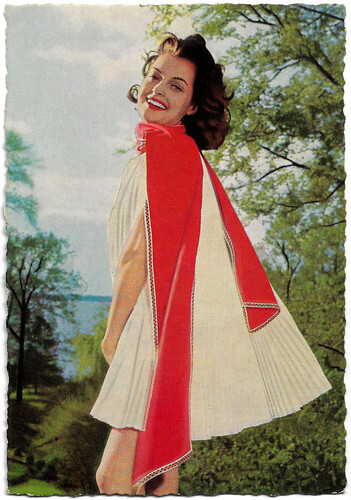
German postcard by WS-Druck, Wanne-Eickel, no. F 46. Photo: Klaus Collignon.
Austrian actress Nadja Tiller (1929-2023) was one of the erotic stars of European cinema of the 1950s and 1960s. Her international breakthrough role was that of the high-class prostitute Rosemarie Nitribitt in the German film Das Mädchen Rosemarie/Rosemary (1958). Tiller was 93.
8 March 2023: Marcel Amont (1929-2023)
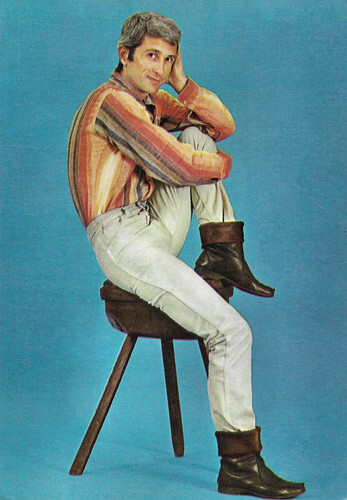
French postcard by Collection Frimousse. Photo: Disques Polydor.
French Singer and actor Marcel Amont (1929-2023) enjoyed considerable success during the 1960s and 1970s. Amont embodied the dynamic, cheerful and light singer.
9 March 2023: Robert Blake (1933-2023)
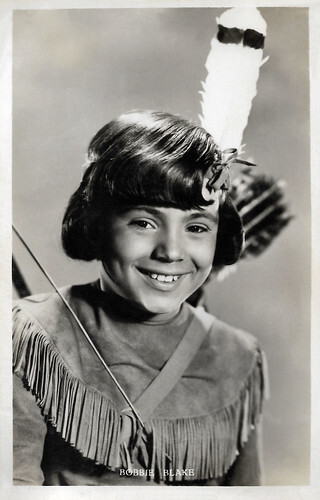
Belgian postcard by Nieuwe Merksemsche Chocolaterie S.P.R.L., Merksem (Anvers). Photo: Republic Pictures. Robert 'Bobby' Blake as Little Hunter.
American film actor Robert Blake (1933-2023) died of heart failure in Los Angeles. He started his career as a child actor under the names 'Mickey Gubitosi' and 'Bobby Blake'. He gained a good deal of fame as the Indian sidekick Little Beaver in the Red Ryder series of Westerns. As an adult, he played killer Perry Smith in the film adaptation of Truman Capote's In Cold Blood (Richard Brooks, 1967) and the title role of Tell Them Willie Boy Is Here (Abraham Polonsky, 1969). He gained his greatest fame through the title role in the police series Baretta (1975-1978). Then Blake faded into obscurity until a one-off comeback as a 'mystery man' in Lost Highway (David Lynch, 1997). Robert Blake was 89.
14 April 2023: Murray Melvin (1932-2023)
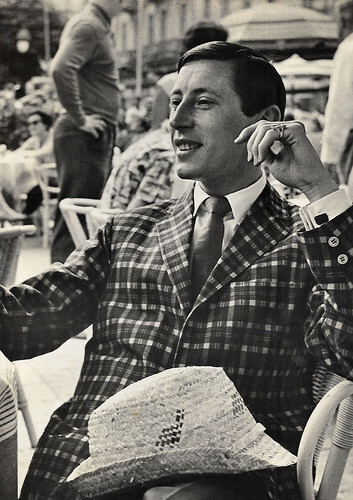
Czech postcard by Nakladatelstvi Orbis, Praha (Prague), no F 3-21593. Photo: Murray Melvin at the 13th International Film Festival Karlovy Vary 1962 in Czechoslovakia.
English supporting actor and theatre director Murray Melvin (1932-2023) died in London of the consequences of a fall. He was known for playing uptight or sophisticated Intellectual types. He won the Best Actor award at Cannes in A Taste of Honey (Tony Richardson, 1961), as the gay surrogate father for Rita Tushingham. Melvin often worked with his good friend Ken Russell, who directed him as the priest Mignon in The Devils (1971). Murray Melvin was 90.
17 April 2023: April Stevens (1929-2023)
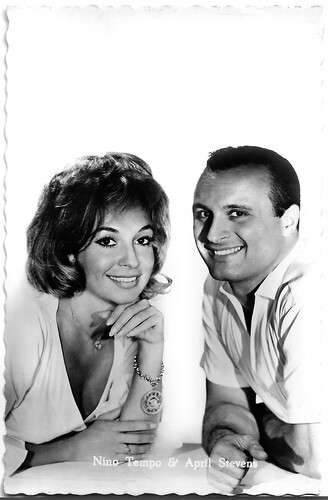
Dutch postcard by Weenenk & Snel, Baarn, no. 1089. Photo: Atlantic. Nino Tempo and April Stevens.
American singer April Stevens (1929-2023) was best known for her collaborations with her younger brother, Nino Tempo, including the no. 1 hit 'Deep Purple'.
22 April 2023: Dame Edna (1934-2023)
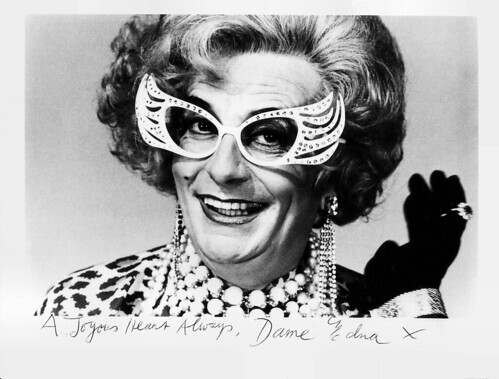
Vintage autograph card.
Dame Edna Everage was a character created and performed by Australian comedian Barry Humphries. Dame Edna was famous for her lilac-coloured or "wisteria hue" hair and cat eyeglasses or "face furniture", her favourite flower, the gladiolus ("gladdies") and her boisterous greeting: "Hello, Possums!" As Dame Edna, Humphries wrote several books including an autobiography, 'My Gorgeous Life', appeared in several films and hosted several television shows on which Humphries has appeared as himself and other alter-egos. Barry Humphries was 89.
25 April 2023: Harry Belafonte (1927-2023)
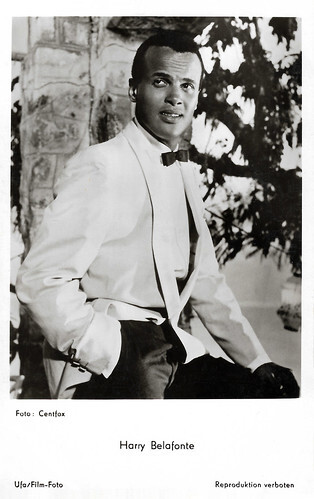
West German postcard by Ufa/Film-Foto, Berlin-Tempelhof, no. FK 3659. Photo: Centfox. Harry Belafonte in Island in the Sun (Robert Rossen, 1957).
Singer, actor, composer, author, and producer Harry Belafonte (1927-2023) was one of the most successful African-American artists in history. As the 'King of Calypso', he popularised the Caribbean musical style internationally in the 1950s. His breakthrough album 'Calypso' (1956) was the first million-selling album by a single artist and his hit 'The Banana Boat Song' became an evergreen. He also starred in several films, most notably in Otto Preminger's hit musical Carmen Jones (1954), Island in the Sun (1957), Odds Against Tomorrow (Robert Wise, 1959), Robert Altman's Kansas City (1996) and Bobby (Emilio Estevez, 2006). Throughout his career, he was an advocate for humanitarian causes, such as the anti-apartheid movement and the USA for Africa. Belafonte died in New York on 25 April 2023, due to congestive heart failure. He was 96.
18 May 2023: Helmut Berger (1944-2023)
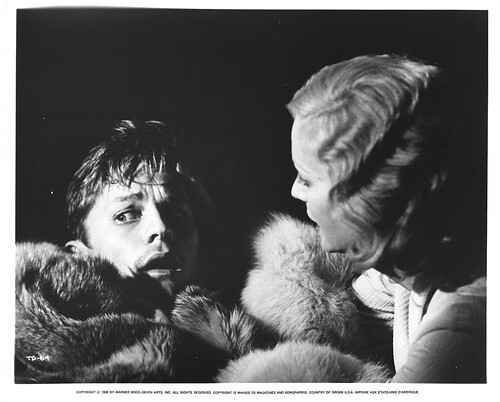
Vintage publicity still by Warner. Helmut Berger and Ingrid Thulin in The Damned/La caduta degli dei/Götterdämmerung (Luchino Visconti, 1969).
Austrian film and television actor Helmut Berger (1944-2023) was most famous for his work with Italian director Luchino Visconti. For his performance as King Ludwig II of Bavaria in the modern classic Ludwig (1972), he received a special David di Donatello award, while he had a Golden Globe nomination for his part in The Damned/La caduta degli dei/Götterdämmerung (1969). He was 78.
18 May 2023: Jim Brown (1936-2023)
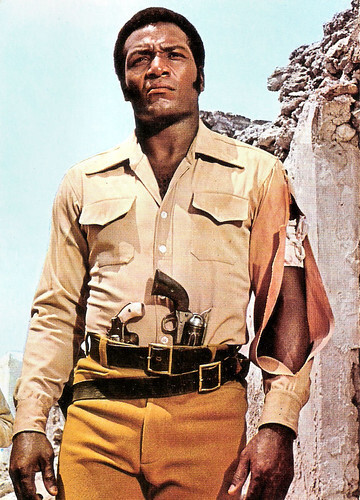
Romanian postcard by Casa Filmului Acin. Jim Brown in 100 Rifles (Tom Gries, 1969).
Former American footballer and actor Jim Brown died at the age of 87. His wife shared this on Instagram on Friday. Brown appeared in more than 30 films such as The Dirty Dozen (1967), 100 Rifles (1969) with Raquel Welch and He Got Game (1998) and he became Hollywood's first black action hero.
24 May 2023: Tina Turner (1939-2023)
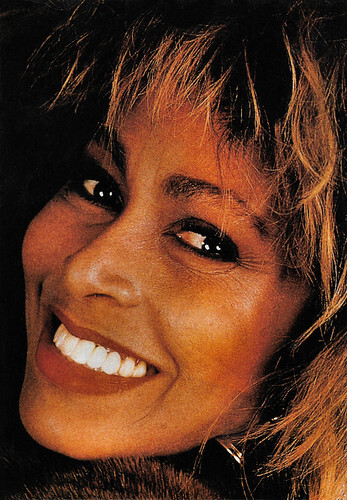
French postcard by Ebullitions, no. 1.
Tina Turner (1939-2023) died at her home in Küssnacht, Switzerland after a long illness, at the age of 83. With 100 million records sold, the American singer and icon was one of the best-selling artists ever. She won as many as 12 Grammy Awards, the most prestigious awards in the music industry. A statement from her spokesperson read, "Tina Turner, the Queen of Rock 'n Roll, passed away peacefully today at the age of 83 after a long illness at her home in Küsnacht, near Zurich, Switzerland. In her, the world loses a music legend and role model."
31 May 2023: Patricia Dainton (1930-2023)
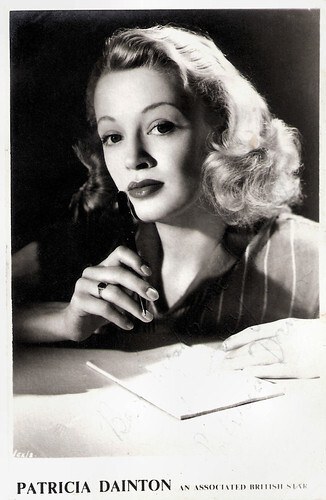
British autograph card. Photo: Associated British.
British actress Patricia Dainton (1930-2023) appeared in several films and television roles between 1947 and 1961. Dainton was 93.
28 May 2023: Isa Barzizza (1929-2023)

Italian postcard by Bromofoto, Milano, no. 313. Photo: DEAR Film.
Italian actress Isa Barzizza (1929-2023) was one of the most important interpreters of the Italian revue, cinema, and television. In the late 1940s and early 1950s, she was often paired with such popular male comedians as Nino Taranto, Macario, Aldo Fabrizi, Carlo Dapporto, Tino Scotti, Walter Chiari, the French comedian Fernandel and above all Totò.
1 June 2023: Margit Carstensen (1940-2023)
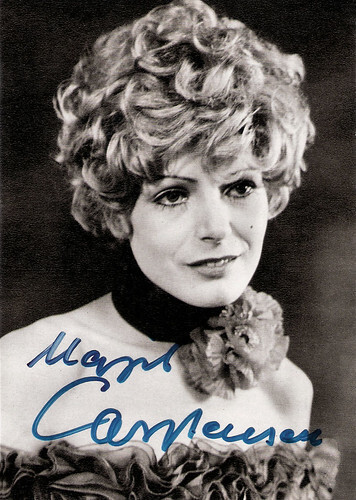
German postcard by Franz Josef Rüdel, Filmpostkartenverlag, Hamburg. Photo: Peter Gaue / Tango Film / Filmverlag der Autoren. Margit Carstensen in Die bitteren Tränen der Petra von Kant/The bitter tears of Petra von Kant (Rainer Werner Fassbinder, 1972).
German actress Margit Carstensen (1940-2023) passed away in Stein, Germany, at the age of 83. She was one of Rainer Werner Fassbinder's best-known anti-stars and played the title role in his classic films such as Die bitteren Tränen der Petra von Kant/The Bitter Tears of Petra von Kant (1972).
5 June 2023: Astrud Gilberto (1940-2023)
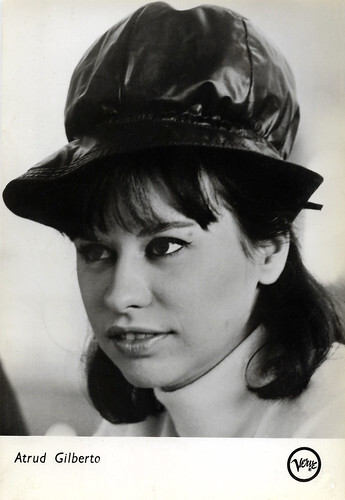
Dutch postcard by Polydor Nederland B.V., Den Haag. Photo: Verve.
Singer Astrud Gilberto (1940-2023) died at the age of 83 at her home in Philadelphia. The Brazilian-born singer of bossa nova and samba music later became an American citizen. Her signature song was the classic 'The Girl from Ipanema' (1964).
11 June 2023: Silvia Nastase (1943-2023)
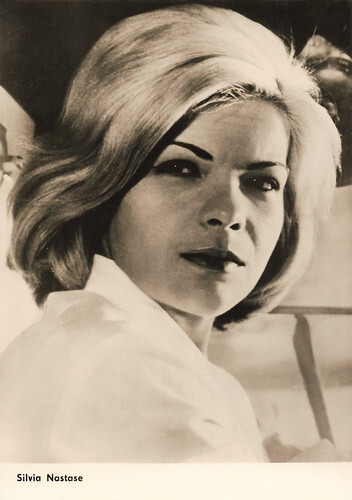
East German postcard by VEB Progress Filmvertrieb, Berlin, Starfoto no. 2826. Silvia Nastase in the Romanian film Sah la rege (Haralambie Boross, 1966), released in East-Germany as Schach der König (Checkmate).
Silvia Nastase (1943-2023) was a Romanian stage and screen actress, famous for her debut film Sah la rege/Checkmate (1966).
15 June 2023: Glenda Jackson (1936-2023)
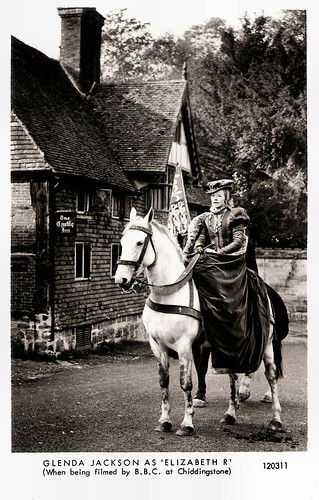
British postcard. Photo: John Topham Ltd, Sicup, Kent, no. 120311. Glenda Jackson as Elizabeth I in the BBC TV series Elizabeth R (1971).
British actress and politician Glenda Jackson (1936) was one of the leading British actresses of the 1960s and 1970s. As a major film star, she won many awards, including two Oscars for Best Actress for Women in Love (1969) and A Touch of Class (1973).
23 June 2023: Willem Nijholt (1934-2023)
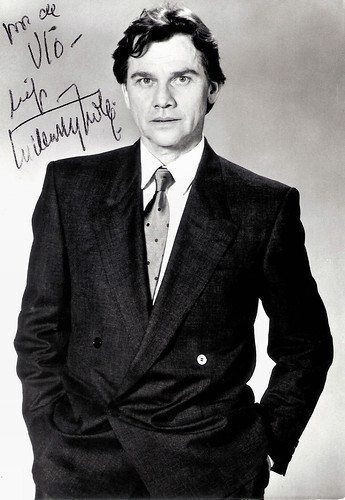
Dutch autograph card.
Dutch actor Willem Nijholt (1934-2023) was also a dancer and singer. His versatility led him to work in musicals, TV shows, stage plays, cabaret and several films. In later years he also became known as a TV juror and author. At the age of 88, Willem Nijholt passed away in his sleep in his home in Amsterdam.
17 June 2023: Carmen Sevilla (1930-2023)
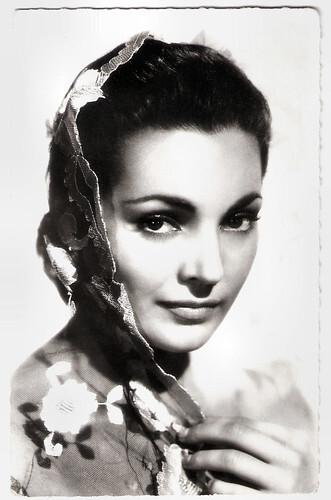
French postcard by Editions du Globe, Paris, no. 683.
Beautiful Spanish actress and singer Carmen Sevilla (1930-2023) performed on stage, in nightclubs, and in some 60 European films. During the 1950s and 1960s, she starred in several musicals and comedies, but Sevilla also performed the occasional dramatic role. In the 1990s she became a popular television presenter. On 27 June 2023, Carmen Sevilla died in Madrid from complications of Alzheimer's. She was 92.
24 June 2023: Julian Sands (1958-2023)
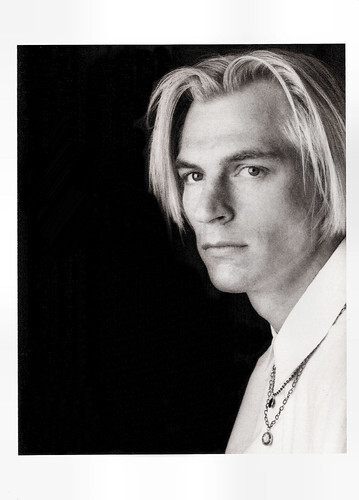
American postcard by Fotofolio, New York, NY, no. F 239. Photo: Edward Maxey. Caption: Julian Sands, 1989.
In June, British actor Julian Sands was finally found dead after going missing for months. In January, Sands went hiking in a mountainous area in the San Bernardino region of California. The 65-year-old actor was an avid hiker and loved going out into the wilderness on his own. What exactly happened is as yet unclear. There were several large-scale searches for Sands in the area. Those searches were always hampered by heavy snowfall. In June, the search resumed again. On Saturday 24 June 2023, human remains were found and three days later, US Police confirmed that these belonged to Sands. Julian Sands was best known for his role in the Oscar-winning film A Room With A View. Sands has appeared in more than 120 films and series since the early 1980s, including the films Leaving Las Vegas, Warlock, Arachnophobia and The Girl with the Dragon Tattoo. He was also seen in one of the seasons of the popular TV series 24 and in the series Smallville.
16 July 2023: Jane Birkin (1946-2023)
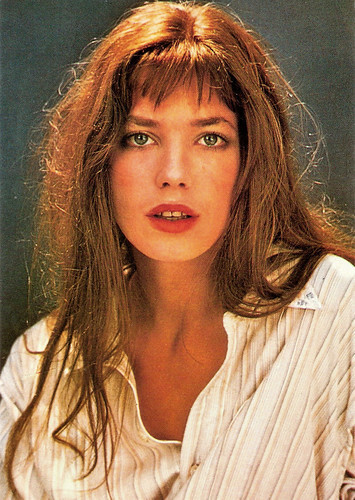
French postcard by V, Paris, no. 95022. Photo: Bernard Leloup / Salut. Promotion card for the Fontana album 'Ex fan des sixties'.
On 16 July 2023, British actress Jane Birkin (1946) was found dead in her Paris home by her nurse. In the Swinging Sixties, the shy, awkward-looking Birkin made a huge international splash as one of the nude models in Antonioni's Blow-Up (1966). In France, she became the muse of singer-songwriter Serge Gainsbourg, who wrote several of her albums, plus their explicitly erotic duet 'Je t'aime... moi non plus'. Later she worked with such respected film directors as Jacques Rivette, Agnès Varda, and Jacques Doillon, and won several acting awards. She was 76 years old.
16 July 2023: Christian Quadflieg (1945-2023)
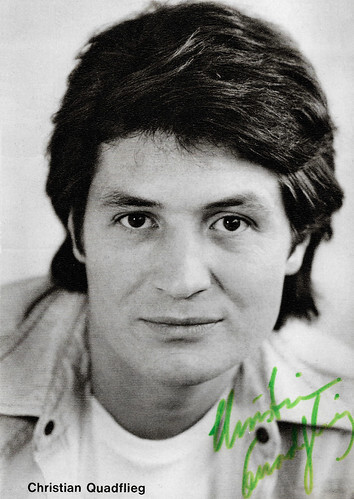
German postcard by Franz Josef Rüdel, Filmpostkartenverlag, Hamburg.
German television actor and director Christian Quadflieg (1945-2023) passed away after a long illness. He was a popular guest star in many classic Krimi series such as Tatort/Crime Scene (1976-1979) and Der Alte/The Old Fox (1978-2007) and also played the lead in the popular series Der Landarzt/The Country Doctor (1987-1992). His father was the famous actor Will Quadflieg.
21 July 2023: Juliette Mayniel (1936-2023)
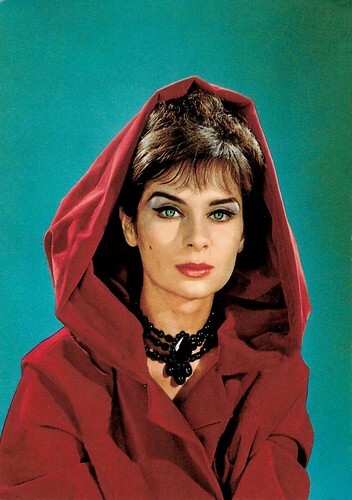
French postcard by Editions P.I., Paris, no. 1060. Photo: Sam Lévin.
Doe-eyed French actress Juliette Mayniel (1936) passed away in San Miguel de Allende in Mexico. She appeared in 35 films and TV films between 1958 and 1978. Her film career made a jump start with two masterpieces, Claude Chabrol’s Les Cousins (1959) and the Horror film Les Yeux Sans Visage (1960). Juliette Mayniel was 87.
27 July 2023: Bea Van der Maat (1960-2023)
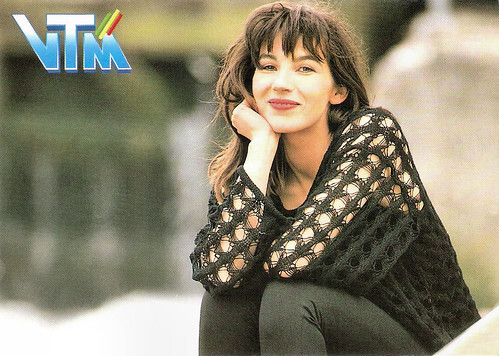
Belgian postcard by VTM.
Belgian singer, actress and presenter Bea Van der Maat (1960) was known as the love interest of Urbanus in the popular comedy Koko Flanel (1990). She was 62.
7 August 2023: Margit Saad (1929-2023)
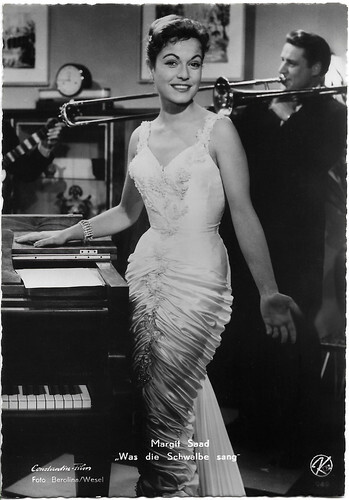
Austrian postcard by Kellner-Fotokarten, Wien, no. 949. Photo: Constantin-Film / Berolina / Wesel. Margit Saad in Was die Schwalbe sang/What the Swallow Sang (Géza von Bolváry, 1956).
German actress Margit Saad (1929-2023) passed away in Munich, Germany at the age of 94. The mysterious, exotic beauty worked largely in German film and television. During the 1960s, she also made occasional English-language appearances.
10 August 2023: Antonella Lualdi (1931-2023)
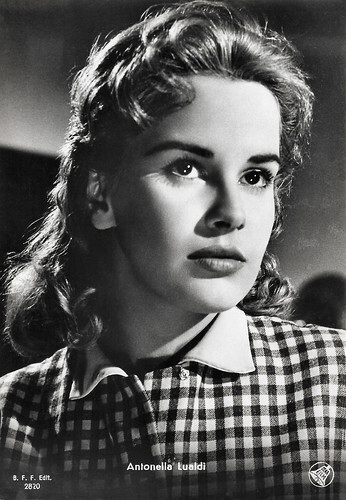
Italian postcard by Casa Editr. Ballerini & Fratini, Firenze. Photo: DEAR Film. Antonella Lualdi in Perdonami!/Forgive me! (Mario Costa, 1953).
Italo-Greek Antonella Lualdi (1931) was the fascinating leading lady of many Italian and French films of the 1950s and 1960s. Since 1949 her luminescent beauty has graced over 90 films. Antonella Lualdi was 92.
27 August 2023: Pee-wee Herman (1952-2023)
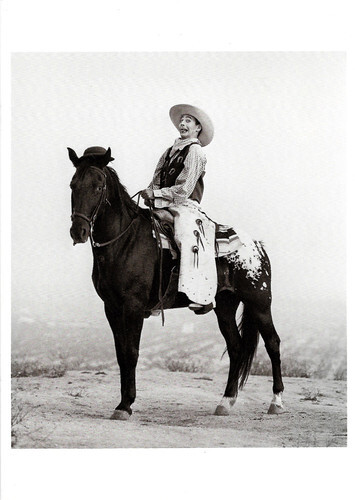
American postcard by Fotofolio, N.Y., N.Y., no HR 2. Photo: Herb Ritts. Caption: Pee-wee Herman on Mulholland Drive, Los Angeles, 1987.
The American actor Paul Reubens (1952), known for his comic alter ego Pee-wee Herman, died on 27 August at the age of 70. Reubens won several Emmy Awards for his role, which he played for many years such as in the film Pee-wee's Big Adventure (1985) and the TV series Pee-wee's Playhouse (1986). Reubens had been suffering from cancer for several years.
21 October 2023: Joan Evans (1934-2023)
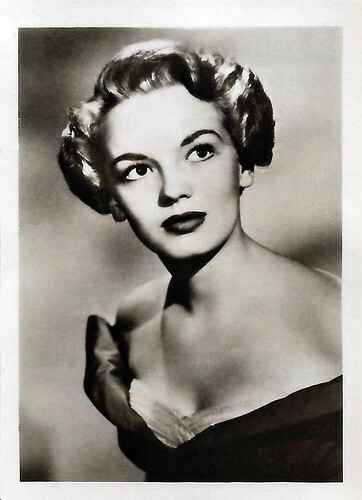
Small German collectors card in the 'Film Stars der Welt' series by Greiling-Sammelbilder, series E, no. 149. Photo: RKO.
American film actress Joan Evans (1934-2023) was discovered by film producer Samuel Goldwyn at age 14. In a career that spanned only twelve years, Evans appeared in more than 30 films and television series.
15 October 2023: Piper Laurie (1932-2023)
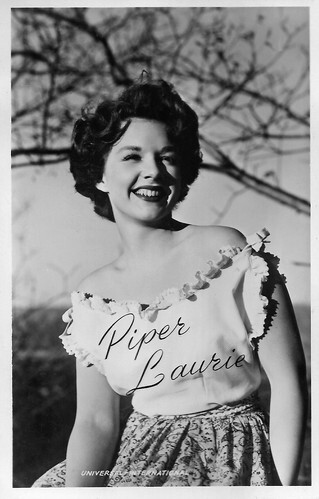
Dutch postcard by Takken / 't Sticht, no. 780. Photo: Universal-International.
American stage and screen actress Piper Laurie died in her hometown Los Angeles. She was known for her roles in the films The Hustler (1961), Carrie (1976), and Children of a Lesser God (1986), all of which brought her Oscar nominations. She is also known for her performances as Kirsten Arnesen in the original TV production of Days of Wine and Roses (1958) and as Catherine Martell in the cult television series Twin Peaks (1990-1991), for which she won a Golden Globe Award in 1991. Laurie, who was 91, received twelve Emmy Award nominations during her long career.
8 November 2023: Hannelore Auer (1942-2023)
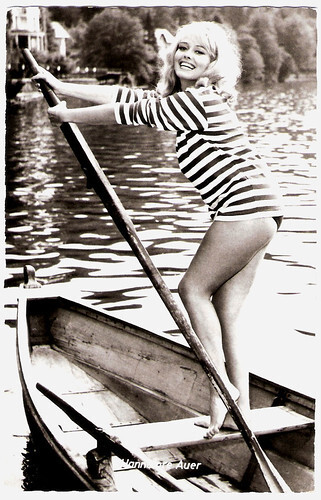
German postcard by Friedrich-W. Sander-Verlag, Minden/Westf., Kolibri, no. 2550.
Austrian Schlager singer Hannelore Auer (1942-2023) appeared in several German-language comedies and Schlager films of the 1960s. She was married to another Schlager singer, Heino.
10 November 2023: Spiros Focas (1937-2023)
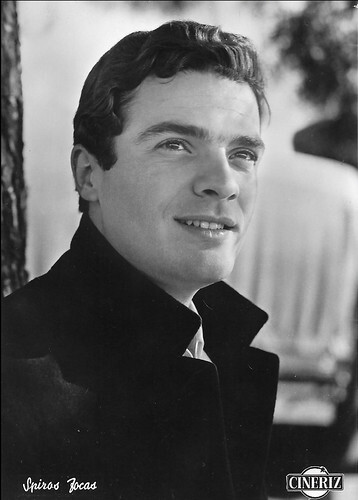
Italian postcard by Bromofoto, Milano, no. 1735. Photo: Cineriz. Spiros Focas in Via Margutta/Run with the Devil (Mario Camerini, 1960).
Spiros Focas (1937-2023) or Spyros Fokas was one of the most active and respected Greek actors. He had a long film career since the late 1950s. He was Vincenzo, the eldest brother, in Luchino Visconti's Rocco e i suoi fratelli (1960).
23 November 2023: Helmert Woudenberg (1945-2023)
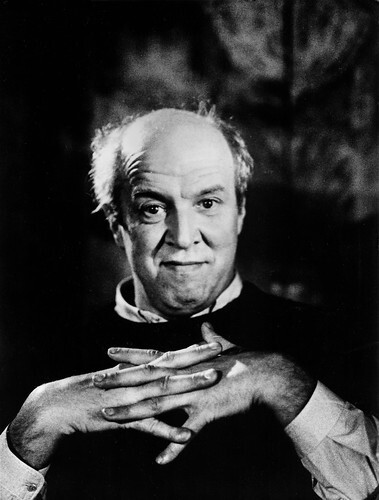
Dutch press photo by Stalles Theaterprodukties, Amsterdam. photo: Pief Weyman. Helmert Woudenberg in the stage play 'Een avondje thuis' (An Evening at Home).
Dutch stage and film actor and stage director Helmert Woudenberg (1945) died of a heart attack at the age of 78. He worked for Het Werkteater, a collective of actors who made history in the 1970s with social theatre, playing everywhere from prisons to hospitals, and also for Toneelgroep Centrum and Toneelgroep Theater. His theatre work counts 214 productions and he alternated solo performances with playing in ensembles. Several plays by Het Werkteater with leading roles for Woudenberg were also filmed, such as the award winning Opname/In for Treatment (Marja Kok and Erik van Zuylen, 1980) with Frank Groothof and Een zwoele zomeravond (Frans Weisz, 1982).
24 November 2023: Heidelinde Weis (1940-2023)
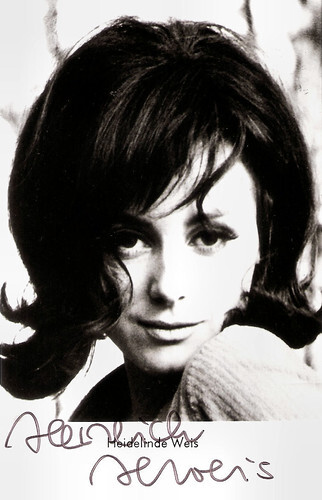
West German postcard by Franz Josef Rüdel, Filmpostkartenverlag, Hamburg. Photo: Constantin / Mangold. Heidelinde Weis in Der Lügner und die Nonne/The Liar and the Nun (Rolf Thiele, 1967).
Austrian actress and singer Heidelinde Weis appeared in several European films in the 1960s. She was a respected theatre actress in German-speaking countries and regularly appeared in TV films and series.
6 December 2023: Marisa Pavan (1932-2023)
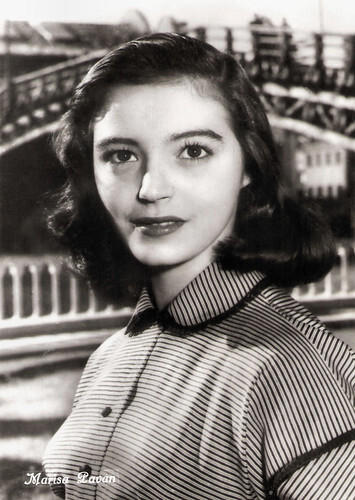
Italian postcard by Vetta Traldi, Milano, in the 'Divi del Cinema' series, no. 41.
Italian-born actress Marisa Pavan (1932-2023) passed away on 6 December 2023. She first became famous as the twin sister to film star Pier Angeli (Anna Maria Pierangeli) before achieving film stardom on her own. The docile actress became known for her gentle, understated roles. She won the Golden Globe and was Oscar-nominated for her supporting turn in The Rose Tattoo (1955).
8 December 2023: Ryan O'Neal (1941-2023)

Vintage collectors card, no. 33. Ryan O'Neal in the TV series Peyton Place (1964-1969).
American actor Ryan O'Neal (1941-2023) was one of Hollywood's most successful stars during the 1970s but is probably best known for his role as Rodney Harrington in the legendary nighttime soap opera Peyton Place (1964-1969). He received an Oscar nomination for Best Actor for his role in Love Story (1970). Ryan O'Neal was further seen in the crime comedy Paper Moon (1973) alongside his daughter Tatum O'Neal, Stanley Kubrick's Barry Lyndon (1975) and the sequel Oliver's Story (1978). O'Neal was 82.
10 December 2023: Shirley Anne Field (1938-2023)
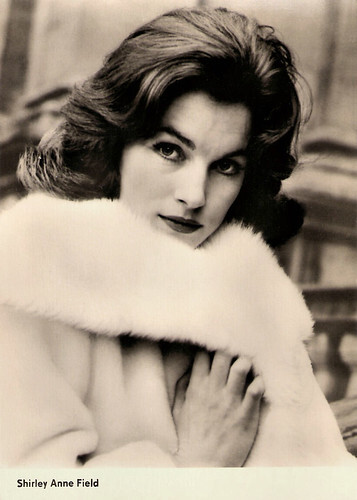
East-German postcard by VEB Progress Film-Vertrieb, Berlin, no. 1623, 1961. Retail price: 0,20 MDN. Photo: Progress.
British actress Shirley Anne Field (1936-2023) performed on stage, film and television since 1955. The former Miss London starred in such classic films as The Entertainer (1960), Saturday Night and Sunday Morning (1960), Alfie (1966), and My Beautiful Laundrette (1985). Field was 87.
15 December 2023: Guy Marchand (1937-2023)
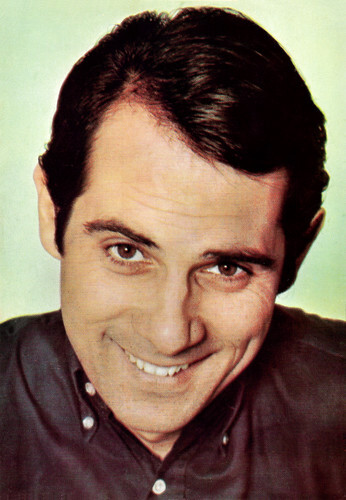
French promotion card by Editions Musicales 707, Paris, no. 7. Photo: Disques Riviera. At the backside is the text of 'Broadway', words and music by Guy Marchand.
French actor, singer and musician Guy Marchand (1937-2023) died at the age of 86. He appeared in supporting roles in many comedies, but occasionally also acted in dramas and crime films. Marchand won a Cesar Award for his role as a police inspector in Claude Miller's Garde à vue (1981).
17 December 2023: Linda van Dyck (1948-2023)
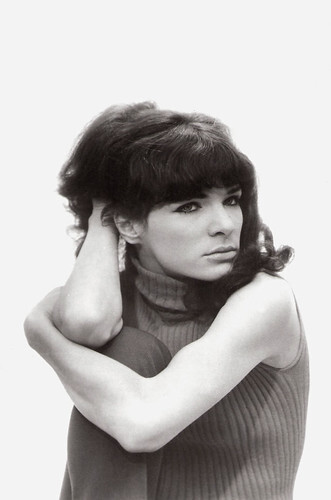
Dutch postcard. Photo: Funckler Grammofoonplaten.
Dutch stage and film actress Linda van Dyck (1948-2023) appeared in a dozen Dutch and Belgian films, which were sometimes very successful in the low countries. Van Dyck started as a pop singer and songwriter in the 1960s. The actress also worked for television, in the Netherlands and Sweden, where she lived for some years in the late 1960s and early 1970s. Linda van Dyck was 75.
22 December 2023: Ingrid Steeger (1947-2023)
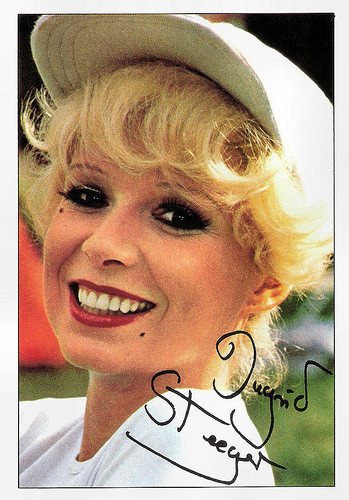
German autograph card by Bravo.
German actress and comedian Ingrid Steeger (1947-2023) died yesterday, 22 December 2023. She was 76. Steeger started her career in the soft sex films that were all the rage in Europe during the late 1960s and early 1970s. In 1973, she became famous as a Marilyn Monroe-like funny and sexy blonde in the TV comedy show Klimbim.
16 January 2023: Gina Lollobrigida

German postcard by Kolibri-Verlag G.m.b.H., Minden (Westf.), no. F 18. Photo: Constantin. Publicity still for Notre Dame de Paris (Jean Delannoy, 1956).
Italian actress and photojournalist Gina Lollobrigida (1927-2023), was one of Europe’s most prominent film stars of the 1950s. ‘La Lollo’ was the first European sex symbol of the post-war years and she paved the way into Hollywood for her younger colleagues Sophia Loren and Claudia Cardinale.
27 January 2023: Sylvia Syms (1934-2023)

British autographcard. Photo: Associated British.
English actress Sylvia Syms (1934-2023) passed away at the age of 89. She was best known for her roles in the films Ice Cold in Alex (1958), Victim (1961), and The Tamarind Seed (1974). She continued to act until 2019 and portrayed the Queen Mother in The Queen (2006).
15 February 2023: Raquel Welch (1940-2023)

Vintage photo by Terry O'Neill.
American actress and sex symbol Raquel Welch (1940-2023) died at the age of 82 after a short illness. She was one of the icons of the 1960s and 1970s. Welch first won attention for her role in Fantastic Voyage (1966). In Great Britain, she then made One Million Years B.C. (1966). Although she had only three lines in the film, a poster of Welch in a furry prehistoric bikini became an amazing bestseller and catapulted her to stardom.
17 February 2023: Stella Stevens (1938-2023)

Spanish card. Photo: Paramount.
American actress Stella Stevens (1938-2023) passed away from Alzheimer's disease. The comedienne starred as a voluptuous platinum blonde with a deep sultry voice in many Hollywood films of the 1960s. During the decade she was one of the most photographed women in the world. Stella Stevens was 84.
21 February 2023: Nadja Tiller (1929-2023)

German postcard by WS-Druck, Wanne-Eickel, no. F 46. Photo: Klaus Collignon.
Austrian actress Nadja Tiller (1929-2023) was one of the erotic stars of European cinema of the 1950s and 1960s. Her international breakthrough role was that of the high-class prostitute Rosemarie Nitribitt in the German film Das Mädchen Rosemarie/Rosemary (1958). Tiller was 93.
8 March 2023: Marcel Amont (1929-2023)

French postcard by Collection Frimousse. Photo: Disques Polydor.
French Singer and actor Marcel Amont (1929-2023) enjoyed considerable success during the 1960s and 1970s. Amont embodied the dynamic, cheerful and light singer.
9 March 2023: Robert Blake (1933-2023)

Belgian postcard by Nieuwe Merksemsche Chocolaterie S.P.R.L., Merksem (Anvers). Photo: Republic Pictures. Robert 'Bobby' Blake as Little Hunter.
American film actor Robert Blake (1933-2023) died of heart failure in Los Angeles. He started his career as a child actor under the names 'Mickey Gubitosi' and 'Bobby Blake'. He gained a good deal of fame as the Indian sidekick Little Beaver in the Red Ryder series of Westerns. As an adult, he played killer Perry Smith in the film adaptation of Truman Capote's In Cold Blood (Richard Brooks, 1967) and the title role of Tell Them Willie Boy Is Here (Abraham Polonsky, 1969). He gained his greatest fame through the title role in the police series Baretta (1975-1978). Then Blake faded into obscurity until a one-off comeback as a 'mystery man' in Lost Highway (David Lynch, 1997). Robert Blake was 89.
14 April 2023: Murray Melvin (1932-2023)

Czech postcard by Nakladatelstvi Orbis, Praha (Prague), no F 3-21593. Photo: Murray Melvin at the 13th International Film Festival Karlovy Vary 1962 in Czechoslovakia.
English supporting actor and theatre director Murray Melvin (1932-2023) died in London of the consequences of a fall. He was known for playing uptight or sophisticated Intellectual types. He won the Best Actor award at Cannes in A Taste of Honey (Tony Richardson, 1961), as the gay surrogate father for Rita Tushingham. Melvin often worked with his good friend Ken Russell, who directed him as the priest Mignon in The Devils (1971). Murray Melvin was 90.
17 April 2023: April Stevens (1929-2023)

Dutch postcard by Weenenk & Snel, Baarn, no. 1089. Photo: Atlantic. Nino Tempo and April Stevens.
American singer April Stevens (1929-2023) was best known for her collaborations with her younger brother, Nino Tempo, including the no. 1 hit 'Deep Purple'.
22 April 2023: Dame Edna (1934-2023)

Vintage autograph card.
Dame Edna Everage was a character created and performed by Australian comedian Barry Humphries. Dame Edna was famous for her lilac-coloured or "wisteria hue" hair and cat eyeglasses or "face furniture", her favourite flower, the gladiolus ("gladdies") and her boisterous greeting: "Hello, Possums!" As Dame Edna, Humphries wrote several books including an autobiography, 'My Gorgeous Life', appeared in several films and hosted several television shows on which Humphries has appeared as himself and other alter-egos. Barry Humphries was 89.
25 April 2023: Harry Belafonte (1927-2023)

West German postcard by Ufa/Film-Foto, Berlin-Tempelhof, no. FK 3659. Photo: Centfox. Harry Belafonte in Island in the Sun (Robert Rossen, 1957).
Singer, actor, composer, author, and producer Harry Belafonte (1927-2023) was one of the most successful African-American artists in history. As the 'King of Calypso', he popularised the Caribbean musical style internationally in the 1950s. His breakthrough album 'Calypso' (1956) was the first million-selling album by a single artist and his hit 'The Banana Boat Song' became an evergreen. He also starred in several films, most notably in Otto Preminger's hit musical Carmen Jones (1954), Island in the Sun (1957), Odds Against Tomorrow (Robert Wise, 1959), Robert Altman's Kansas City (1996) and Bobby (Emilio Estevez, 2006). Throughout his career, he was an advocate for humanitarian causes, such as the anti-apartheid movement and the USA for Africa. Belafonte died in New York on 25 April 2023, due to congestive heart failure. He was 96.
18 May 2023: Helmut Berger (1944-2023)

Vintage publicity still by Warner. Helmut Berger and Ingrid Thulin in The Damned/La caduta degli dei/Götterdämmerung (Luchino Visconti, 1969).
Austrian film and television actor Helmut Berger (1944-2023) was most famous for his work with Italian director Luchino Visconti. For his performance as King Ludwig II of Bavaria in the modern classic Ludwig (1972), he received a special David di Donatello award, while he had a Golden Globe nomination for his part in The Damned/La caduta degli dei/Götterdämmerung (1969). He was 78.
18 May 2023: Jim Brown (1936-2023)

Romanian postcard by Casa Filmului Acin. Jim Brown in 100 Rifles (Tom Gries, 1969).
Former American footballer and actor Jim Brown died at the age of 87. His wife shared this on Instagram on Friday. Brown appeared in more than 30 films such as The Dirty Dozen (1967), 100 Rifles (1969) with Raquel Welch and He Got Game (1998) and he became Hollywood's first black action hero.
24 May 2023: Tina Turner (1939-2023)

French postcard by Ebullitions, no. 1.
Tina Turner (1939-2023) died at her home in Küssnacht, Switzerland after a long illness, at the age of 83. With 100 million records sold, the American singer and icon was one of the best-selling artists ever. She won as many as 12 Grammy Awards, the most prestigious awards in the music industry. A statement from her spokesperson read, "Tina Turner, the Queen of Rock 'n Roll, passed away peacefully today at the age of 83 after a long illness at her home in Küsnacht, near Zurich, Switzerland. In her, the world loses a music legend and role model."
31 May 2023: Patricia Dainton (1930-2023)

British autograph card. Photo: Associated British.
British actress Patricia Dainton (1930-2023) appeared in several films and television roles between 1947 and 1961. Dainton was 93.
28 May 2023: Isa Barzizza (1929-2023)

Italian postcard by Bromofoto, Milano, no. 313. Photo: DEAR Film.
Italian actress Isa Barzizza (1929-2023) was one of the most important interpreters of the Italian revue, cinema, and television. In the late 1940s and early 1950s, she was often paired with such popular male comedians as Nino Taranto, Macario, Aldo Fabrizi, Carlo Dapporto, Tino Scotti, Walter Chiari, the French comedian Fernandel and above all Totò.
1 June 2023: Margit Carstensen (1940-2023)

German postcard by Franz Josef Rüdel, Filmpostkartenverlag, Hamburg. Photo: Peter Gaue / Tango Film / Filmverlag der Autoren. Margit Carstensen in Die bitteren Tränen der Petra von Kant/The bitter tears of Petra von Kant (Rainer Werner Fassbinder, 1972).
German actress Margit Carstensen (1940-2023) passed away in Stein, Germany, at the age of 83. She was one of Rainer Werner Fassbinder's best-known anti-stars and played the title role in his classic films such as Die bitteren Tränen der Petra von Kant/The Bitter Tears of Petra von Kant (1972).
5 June 2023: Astrud Gilberto (1940-2023)

Dutch postcard by Polydor Nederland B.V., Den Haag. Photo: Verve.
Singer Astrud Gilberto (1940-2023) died at the age of 83 at her home in Philadelphia. The Brazilian-born singer of bossa nova and samba music later became an American citizen. Her signature song was the classic 'The Girl from Ipanema' (1964).
11 June 2023: Silvia Nastase (1943-2023)

East German postcard by VEB Progress Filmvertrieb, Berlin, Starfoto no. 2826. Silvia Nastase in the Romanian film Sah la rege (Haralambie Boross, 1966), released in East-Germany as Schach der König (Checkmate).
Silvia Nastase (1943-2023) was a Romanian stage and screen actress, famous for her debut film Sah la rege/Checkmate (1966).
15 June 2023: Glenda Jackson (1936-2023)

British postcard. Photo: John Topham Ltd, Sicup, Kent, no. 120311. Glenda Jackson as Elizabeth I in the BBC TV series Elizabeth R (1971).
British actress and politician Glenda Jackson (1936) was one of the leading British actresses of the 1960s and 1970s. As a major film star, she won many awards, including two Oscars for Best Actress for Women in Love (1969) and A Touch of Class (1973).
23 June 2023: Willem Nijholt (1934-2023)

Dutch autograph card.
Dutch actor Willem Nijholt (1934-2023) was also a dancer and singer. His versatility led him to work in musicals, TV shows, stage plays, cabaret and several films. In later years he also became known as a TV juror and author. At the age of 88, Willem Nijholt passed away in his sleep in his home in Amsterdam.
17 June 2023: Carmen Sevilla (1930-2023)

French postcard by Editions du Globe, Paris, no. 683.
Beautiful Spanish actress and singer Carmen Sevilla (1930-2023) performed on stage, in nightclubs, and in some 60 European films. During the 1950s and 1960s, she starred in several musicals and comedies, but Sevilla also performed the occasional dramatic role. In the 1990s she became a popular television presenter. On 27 June 2023, Carmen Sevilla died in Madrid from complications of Alzheimer's. She was 92.
24 June 2023: Julian Sands (1958-2023)

American postcard by Fotofolio, New York, NY, no. F 239. Photo: Edward Maxey. Caption: Julian Sands, 1989.
In June, British actor Julian Sands was finally found dead after going missing for months. In January, Sands went hiking in a mountainous area in the San Bernardino region of California. The 65-year-old actor was an avid hiker and loved going out into the wilderness on his own. What exactly happened is as yet unclear. There were several large-scale searches for Sands in the area. Those searches were always hampered by heavy snowfall. In June, the search resumed again. On Saturday 24 June 2023, human remains were found and three days later, US Police confirmed that these belonged to Sands. Julian Sands was best known for his role in the Oscar-winning film A Room With A View. Sands has appeared in more than 120 films and series since the early 1980s, including the films Leaving Las Vegas, Warlock, Arachnophobia and The Girl with the Dragon Tattoo. He was also seen in one of the seasons of the popular TV series 24 and in the series Smallville.
16 July 2023: Jane Birkin (1946-2023)

French postcard by V, Paris, no. 95022. Photo: Bernard Leloup / Salut. Promotion card for the Fontana album 'Ex fan des sixties'.
On 16 July 2023, British actress Jane Birkin (1946) was found dead in her Paris home by her nurse. In the Swinging Sixties, the shy, awkward-looking Birkin made a huge international splash as one of the nude models in Antonioni's Blow-Up (1966). In France, she became the muse of singer-songwriter Serge Gainsbourg, who wrote several of her albums, plus their explicitly erotic duet 'Je t'aime... moi non plus'. Later she worked with such respected film directors as Jacques Rivette, Agnès Varda, and Jacques Doillon, and won several acting awards. She was 76 years old.
16 July 2023: Christian Quadflieg (1945-2023)

German postcard by Franz Josef Rüdel, Filmpostkartenverlag, Hamburg.
German television actor and director Christian Quadflieg (1945-2023) passed away after a long illness. He was a popular guest star in many classic Krimi series such as Tatort/Crime Scene (1976-1979) and Der Alte/The Old Fox (1978-2007) and also played the lead in the popular series Der Landarzt/The Country Doctor (1987-1992). His father was the famous actor Will Quadflieg.
21 July 2023: Juliette Mayniel (1936-2023)

French postcard by Editions P.I., Paris, no. 1060. Photo: Sam Lévin.
Doe-eyed French actress Juliette Mayniel (1936) passed away in San Miguel de Allende in Mexico. She appeared in 35 films and TV films between 1958 and 1978. Her film career made a jump start with two masterpieces, Claude Chabrol’s Les Cousins (1959) and the Horror film Les Yeux Sans Visage (1960). Juliette Mayniel was 87.
27 July 2023: Bea Van der Maat (1960-2023)

Belgian postcard by VTM.
Belgian singer, actress and presenter Bea Van der Maat (1960) was known as the love interest of Urbanus in the popular comedy Koko Flanel (1990). She was 62.
7 August 2023: Margit Saad (1929-2023)

Austrian postcard by Kellner-Fotokarten, Wien, no. 949. Photo: Constantin-Film / Berolina / Wesel. Margit Saad in Was die Schwalbe sang/What the Swallow Sang (Géza von Bolváry, 1956).
German actress Margit Saad (1929-2023) passed away in Munich, Germany at the age of 94. The mysterious, exotic beauty worked largely in German film and television. During the 1960s, she also made occasional English-language appearances.
10 August 2023: Antonella Lualdi (1931-2023)

Italian postcard by Casa Editr. Ballerini & Fratini, Firenze. Photo: DEAR Film. Antonella Lualdi in Perdonami!/Forgive me! (Mario Costa, 1953).
Italo-Greek Antonella Lualdi (1931) was the fascinating leading lady of many Italian and French films of the 1950s and 1960s. Since 1949 her luminescent beauty has graced over 90 films. Antonella Lualdi was 92.
27 August 2023: Pee-wee Herman (1952-2023)

American postcard by Fotofolio, N.Y., N.Y., no HR 2. Photo: Herb Ritts. Caption: Pee-wee Herman on Mulholland Drive, Los Angeles, 1987.
The American actor Paul Reubens (1952), known for his comic alter ego Pee-wee Herman, died on 27 August at the age of 70. Reubens won several Emmy Awards for his role, which he played for many years such as in the film Pee-wee's Big Adventure (1985) and the TV series Pee-wee's Playhouse (1986). Reubens had been suffering from cancer for several years.
21 October 2023: Joan Evans (1934-2023)

Small German collectors card in the 'Film Stars der Welt' series by Greiling-Sammelbilder, series E, no. 149. Photo: RKO.
American film actress Joan Evans (1934-2023) was discovered by film producer Samuel Goldwyn at age 14. In a career that spanned only twelve years, Evans appeared in more than 30 films and television series.
15 October 2023: Piper Laurie (1932-2023)

Dutch postcard by Takken / 't Sticht, no. 780. Photo: Universal-International.
American stage and screen actress Piper Laurie died in her hometown Los Angeles. She was known for her roles in the films The Hustler (1961), Carrie (1976), and Children of a Lesser God (1986), all of which brought her Oscar nominations. She is also known for her performances as Kirsten Arnesen in the original TV production of Days of Wine and Roses (1958) and as Catherine Martell in the cult television series Twin Peaks (1990-1991), for which she won a Golden Globe Award in 1991. Laurie, who was 91, received twelve Emmy Award nominations during her long career.
8 November 2023: Hannelore Auer (1942-2023)

German postcard by Friedrich-W. Sander-Verlag, Minden/Westf., Kolibri, no. 2550.
Austrian Schlager singer Hannelore Auer (1942-2023) appeared in several German-language comedies and Schlager films of the 1960s. She was married to another Schlager singer, Heino.
10 November 2023: Spiros Focas (1937-2023)

Italian postcard by Bromofoto, Milano, no. 1735. Photo: Cineriz. Spiros Focas in Via Margutta/Run with the Devil (Mario Camerini, 1960).
Spiros Focas (1937-2023) or Spyros Fokas was one of the most active and respected Greek actors. He had a long film career since the late 1950s. He was Vincenzo, the eldest brother, in Luchino Visconti's Rocco e i suoi fratelli (1960).
23 November 2023: Helmert Woudenberg (1945-2023)

Dutch press photo by Stalles Theaterprodukties, Amsterdam. photo: Pief Weyman. Helmert Woudenberg in the stage play 'Een avondje thuis' (An Evening at Home).
Dutch stage and film actor and stage director Helmert Woudenberg (1945) died of a heart attack at the age of 78. He worked for Het Werkteater, a collective of actors who made history in the 1970s with social theatre, playing everywhere from prisons to hospitals, and also for Toneelgroep Centrum and Toneelgroep Theater. His theatre work counts 214 productions and he alternated solo performances with playing in ensembles. Several plays by Het Werkteater with leading roles for Woudenberg were also filmed, such as the award winning Opname/In for Treatment (Marja Kok and Erik van Zuylen, 1980) with Frank Groothof and Een zwoele zomeravond (Frans Weisz, 1982).
24 November 2023: Heidelinde Weis (1940-2023)

West German postcard by Franz Josef Rüdel, Filmpostkartenverlag, Hamburg. Photo: Constantin / Mangold. Heidelinde Weis in Der Lügner und die Nonne/The Liar and the Nun (Rolf Thiele, 1967).
Austrian actress and singer Heidelinde Weis appeared in several European films in the 1960s. She was a respected theatre actress in German-speaking countries and regularly appeared in TV films and series.
6 December 2023: Marisa Pavan (1932-2023)

Italian postcard by Vetta Traldi, Milano, in the 'Divi del Cinema' series, no. 41.
Italian-born actress Marisa Pavan (1932-2023) passed away on 6 December 2023. She first became famous as the twin sister to film star Pier Angeli (Anna Maria Pierangeli) before achieving film stardom on her own. The docile actress became known for her gentle, understated roles. She won the Golden Globe and was Oscar-nominated for her supporting turn in The Rose Tattoo (1955).
8 December 2023: Ryan O'Neal (1941-2023)

Vintage collectors card, no. 33. Ryan O'Neal in the TV series Peyton Place (1964-1969).
American actor Ryan O'Neal (1941-2023) was one of Hollywood's most successful stars during the 1970s but is probably best known for his role as Rodney Harrington in the legendary nighttime soap opera Peyton Place (1964-1969). He received an Oscar nomination for Best Actor for his role in Love Story (1970). Ryan O'Neal was further seen in the crime comedy Paper Moon (1973) alongside his daughter Tatum O'Neal, Stanley Kubrick's Barry Lyndon (1975) and the sequel Oliver's Story (1978). O'Neal was 82.
10 December 2023: Shirley Anne Field (1938-2023)

East-German postcard by VEB Progress Film-Vertrieb, Berlin, no. 1623, 1961. Retail price: 0,20 MDN. Photo: Progress.
British actress Shirley Anne Field (1936-2023) performed on stage, film and television since 1955. The former Miss London starred in such classic films as The Entertainer (1960), Saturday Night and Sunday Morning (1960), Alfie (1966), and My Beautiful Laundrette (1985). Field was 87.
15 December 2023: Guy Marchand (1937-2023)

French promotion card by Editions Musicales 707, Paris, no. 7. Photo: Disques Riviera. At the backside is the text of 'Broadway', words and music by Guy Marchand.
French actor, singer and musician Guy Marchand (1937-2023) died at the age of 86. He appeared in supporting roles in many comedies, but occasionally also acted in dramas and crime films. Marchand won a Cesar Award for his role as a police inspector in Claude Miller's Garde à vue (1981).
17 December 2023: Linda van Dyck (1948-2023)

Dutch postcard. Photo: Funckler Grammofoonplaten.
Dutch stage and film actress Linda van Dyck (1948-2023) appeared in a dozen Dutch and Belgian films, which were sometimes very successful in the low countries. Van Dyck started as a pop singer and songwriter in the 1960s. The actress also worked for television, in the Netherlands and Sweden, where she lived for some years in the late 1960s and early 1970s. Linda van Dyck was 75.
22 December 2023: Ingrid Steeger (1947-2023)

German autograph card by Bravo.
German actress and comedian Ingrid Steeger (1947-2023) died yesterday, 22 December 2023. She was 76. Steeger started her career in the soft sex films that were all the rage in Europe during the late 1960s and early 1970s. In 1973, she became famous as a Marilyn Monroe-like funny and sexy blonde in the TV comedy show Klimbim.
Published on December 31, 2023 22:00
December 29, 2023
La Collectionneuse: Couples
Film star postcard publishers always liked to feature couples. They were often co-stars who were not romantically linked. But you also had postcards showing people who were married in real life or who were known to be in love with each other. Here are twenty-five of them.

Belgian postcard, no. 951.
June Allyson and Dick Powell met during the filming of Meet the People (1944), in which the actress had a supporting part. They married in 1945. They later co-starred in two movies in 1950: Right Cross and The Reformer and the Redhead. They adopted a daughter, Pamela, in 1948, and had a son, Richard Jr., in 1950. In 1961, June Allyson filed for divorce but the couple soon reconciled and remained married until Powell died in 1963.

Dutch postcard by Takken, Utrecht, no. AX 3028. Photo: Warner Bros.
Pier Angeli was allegedly introduced to James Dean on the set of The Silver Chalice (1954). Dean was at the time filming East of Eden and came to greet Paul Newman. Angeli and Dean were attracted to each other and a romance blossomed. It seems that Pier’s mother was not too happy with their relationship and found singer Vic Damone a much more suitable suitor for her daughter. To Dean’s bewilderment, Pier Angeli married Damone on the 24th of December 1954. In an interview given to the National Enquirer in 1968, Pier Angeli reminisced about her affair with Dean: "We had complete understanding of each other … We were kids together and that’s the way we both liked it. It was all so innocent and so emphatic".
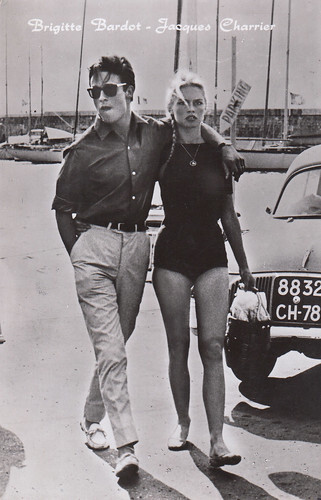
Dutch postcard by Int. Filmpers, Amsterdam, no. 3500.
Brigitte Bardot and Jacques Charrier met during the filming of Babette s’en va-t-en guerre (1959). They married in 1959 and had a son, Nicolas, in 1960. They divorced in 1963, as Bardot had fallen in love with Sami Frey.
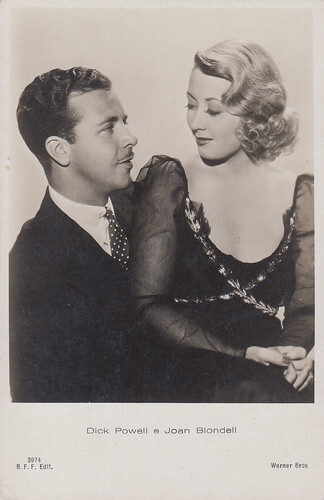
talian postcard by Ballerini & Fratini, Firenze, no. 3974. Photo: Warner Bros.
Joan Blondell and Dick Powell married in 1936 and divorced in 1944. They had one daughter, Ellen, in 1938. They were frequent co-stars and appeared in Gold Diggers of 1933 (1933), Footlight Parade (1933), Convention City (1933), Dames (1934), Broadway Gondolier (1935), Colleen (1936), Stage Struck (1936), Gold Diggers of 1937 (1936), I Want a Divorce (1940) and Model Wife (1942).
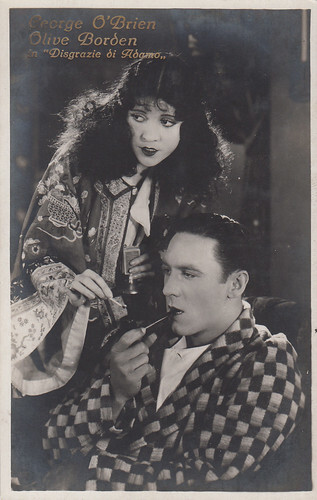
Italian postcard by G.B. Falci Editore, Milano, no. 637. Olive Borden and George O'Brien in Fig Leaves (Howard Hawks, 1926).
Olive Borden and George O’Brien fell in love during the filming of Three Bad Men (1926). They soon co-starred again in Fig Leaves (1926). There were marriage rumors but they separated at the end of the 1920s. According to O’Brien’s son, Olive Borden was his father’s great love before he met Marguerite Churchill, whom he married in 1933.
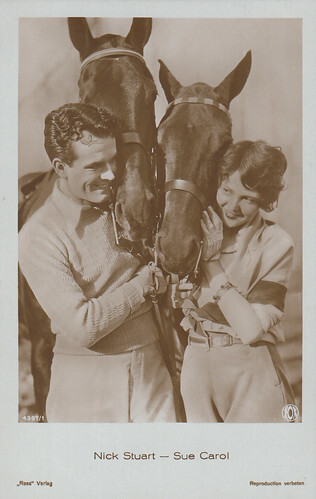
German postcard by Ross Verlag, no. 4397/1, 1929-1930. Photo: Fox.
Sue Carol and Nick Stuart married in 1929. They had a daughter, Carol Lee, in 1932, and divorced in 1934. They co-starred in Girls Gone Wild (1929), Chasing Through Europe (1929), Why Leave Home? (1929) and Secret Sinners (1933).
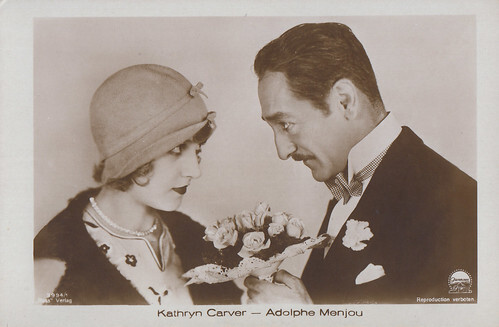
German postcard by Ross Verlag, no. 3994/1, 1929-1930. Photo: Paramount.
Kathryn Carver and Adolphe Menjou married in 1928 and divorced in 1934. They co-starred in Service for Ladies (1927), Serenade (1927) and His Private Life (1928).
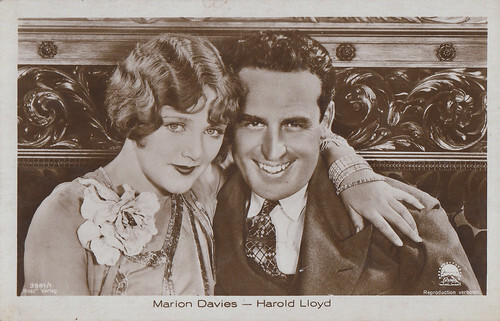
German postcard by Ross Verlag, no. 3981/1, 1929-1930. Photo: Paramount. The actress on the card is Mildred Davis, not Marion Davies , as erroneously captioned.
Mildred Davis and Harold Lloyd married in 1923. From 1919 to 1923, she had been Lloyd’s frequent leading lady in his comedies, including the highly popular Safety Last (1923). They had one daughter, Gloria Lloyd, in 1923, and one boy, Harold Clayton Lloyd Jr., in 1931. A second daughter, Gloria Freeman, was adopted in 1930. She was renamed Marjorie Elizabeth but was known as Peggy for most of her life. Mildred Davis passed away in 1969. Harold Lloyd died two years later.
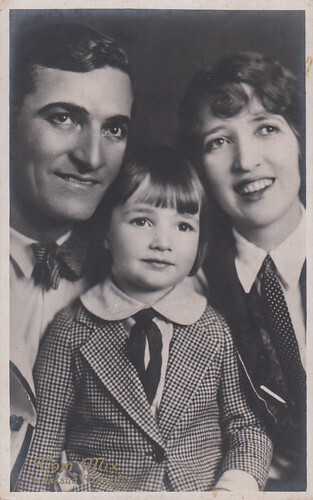
Italian postcard by G.B. Falci Editore, Milano, no. 559. Victoria Forde, Tom Mix and their daughter Thomasina Mix.
Victoria Forde and Tom Mix married in 1918. Victoria had been Tom’s frequent co-star in his Westerns at Selig and Fox. They had a daughter, Thomasina, in 1922, and divorced in 1932.
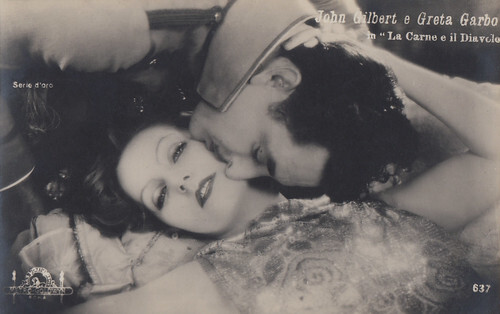
Italian postcard in the 'serie d'oro' by Ballerini & Fratini, Firenze, no. 637. Photo: Metro Goldwyn, Roma. Greta Garbo and John Gilbert in Flesh and the Devil (Clarence Brown, 1926).
Greta Garbo and John Gilbert co-starred for the first time in Flesh and the Devil. They fell in love during filming and this is obvious in their incandescent love scenes, as you can see on this postcard. They appeared together again in Love (1927) and A Woman of Affairs (1928). However, their affair was over by 1929. In 1933, they made a last film together, Queen Christina, but, at the time, John Gilbert ’s career was in decline.
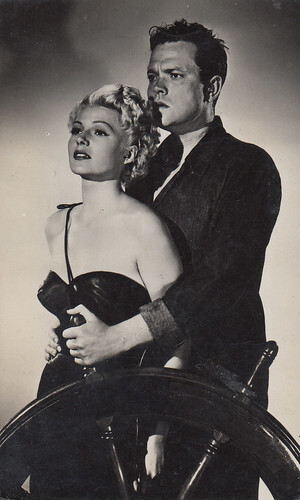
Spanish postcard by Archivo Bermejo, no. 4066. Orson Welles and Rita Hayworth in The Lady From Shanghai (Orson Welles, 1947).
Rita Hayworth and Orson Welles married in 1943. They had a daughter, Rebecca, in 1944, and divorced in 1947. They co-starred in The Lady from Shanghai (1947), which Welles also directed.
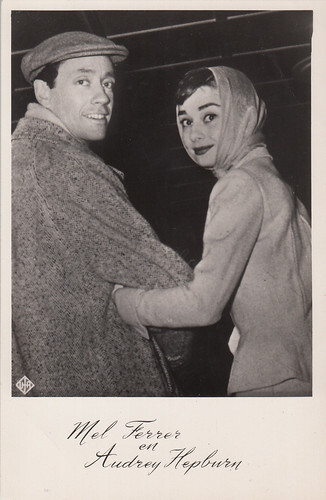
Dutch postcard by Takken, Utrecht, no. AX 1912. Photo: Ufa.
Audrey Hepburn and Mel Ferrer met in 1953 and their love affair developed when they appeared together in the play 'Ondine' which opened on Broadway in February 1954. They married in September 1954. They had one son, Sean, in 1960, and divorced in 1968. They co-starred in War and Peace (1956).
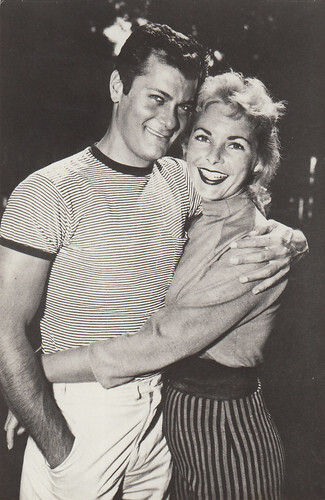
Spanish postcard by Soberanas, no. 426.
Janet Leigh and Tony Curtis met in 1950 and married in 1951. They had two daughters, Kelly Lee in 1956 and Jamie Lee in 1958. They co-starred in Houdini (1953), The Black Shield of Falworth (1954), The Vikings (1958), The Perfect Furlough (1958) and Who Was That Lady? (1960).They divorced in 1962, as Tony Curtis had fallen in love with actress Christine Kaufmann, whom he married in 1963. Jamie Lee Curtis would later also become a movie star.
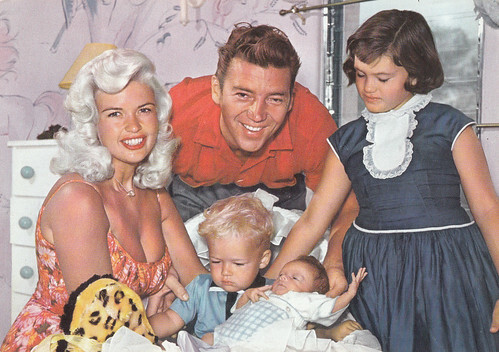
Italian postcard by Piccoli, Milano, no. 875/6.
Jayne Mansfield and Mickey Hargitay married in 1958. They co-starred in the Italian peplum Gli amori di Ercole (1960). They had three children: Miklos in 1958, Zoltan in 1960 and Mariska in 1964. Miklos and Zoltan appear with their parents on this Italian postcard. The little girl is Jayne Marie, the daughter Jayne had in 1950 from her previous marriage. Jayne Mansfield and Mickey Hargitay’s 1963 Mexican divorce was ruled valid by California in August 1964. Mariska Hargitay would later become famous for her role in the TV series Law and Order: Special Victims Unit.
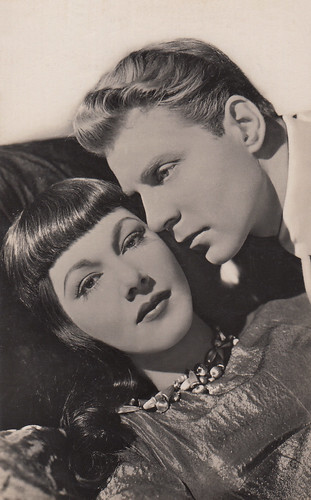
Spanish postcard by JDP, Valencia, no. 2198.
Jean-Pierre Aumont and Maria Montez married in 1943. They had one daughter, Maria Christina, in 1946. Maria Montez and Jean-Pierre Aumont co-starred in Siren of Atlantis (1949). She passed away in 1951. As Tina Aumont , Maria Christina would later become an actress.
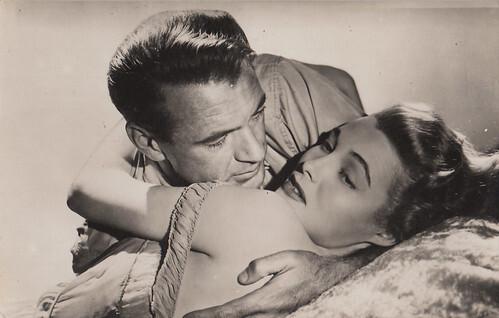
Spanish postcard, no. 723.
Patricia Neal and Gary Cooper , who was married since 1933 to Veronica "Rocky" Balfe, fell in love in 1948 during the filming of The Fountainhead. They later co-starred again in Bright Leaf (1950). According to Patricia Neal , she got pregnant and had an abortion in 1950. Their passionate affair ended in December 1951.
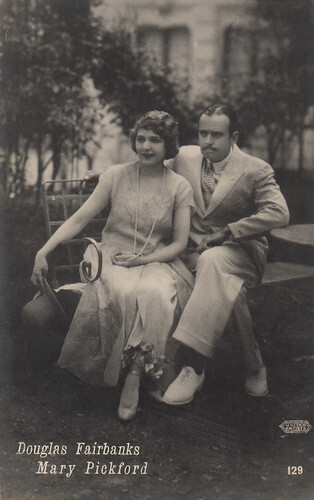
Italian postcard by Ballerini & Fratini, Firenze, no. 129. Photo: United Artists.
Mary Pickford and Douglas Fairbanks married in 1920, after their respective divorces. At the time, they had been lovers for some years. They were considered the king and queen of Hollywood. They co-starred in The Taming of the Shrew (1929). In 1931, Douglas Fairbanks embarked on an affair with Sylvia Ashley. Mary Pickford filed for divorce in December 1933 and it was granted in January 1936.
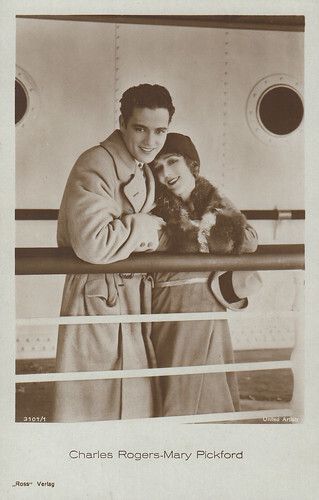
German postcard by Ross Verlag, no. 3101/1, 1928-1929. Photo: United Artists.
During the filming of My Best Girl (1927), a mutual attraction developed between Mary Pickford and Charles Rogers . She was flattered to be courted by a man who was twelve years her junior. They stayed in touch and, after her divorce from Fairbanks in 1936, Mary Pickford married Charles Rogers in 1937. They adopted two children, Roxanne in 1938 and Ronald Charles in 1943. Their union lasted until Mary died in 1979.
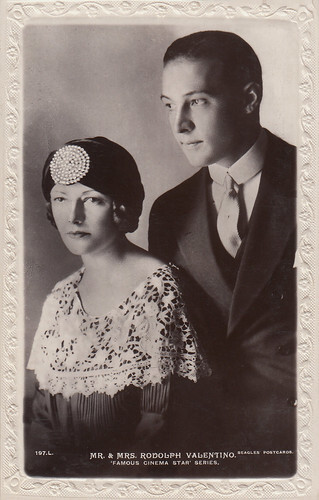
British postcard by Beagles in the 'Famous Cinema Stars' series, no. 197L.
Natacha Rambova and Rudolph Valentino married in Mexico in May 1922 but, as his divorce from his previous wife wasn’t finalised yet, he was charged with bigamy when they returned to the U.S.A. They legally remarried in March 1923 and their divorce was granted in Paris in January 1926.
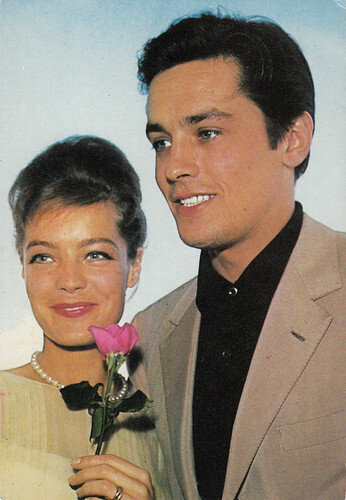
Spanish postcard by Oscarcolor, no. 401.
Romy Schneider and Alain Delon fell in love during the filming of Christine (1958). After a 5-year love affair, he abruptly left her in 1963 for Nathalie Delon, whom he married in 1964.
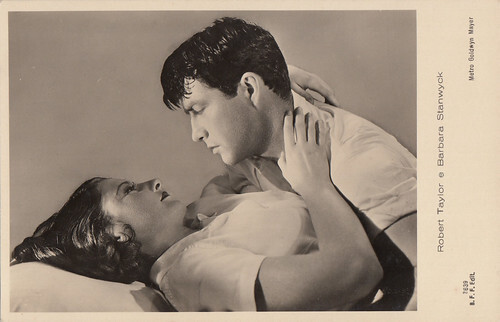
Italian postcard by Ballerini & Fratini, Firenze, no. 2639. Photo: Metro-Goldwyn-Mayer.
Zeppo Marx and his wife introduced Robert Taylor to Barbara Stanwyck in 1936. They got along very well and soon were romantically linked. They co-starred in His Brother’s Wife (1936) and This Is My Affair (1937). They married in 1939. In 1950, Taylor had a much-publicized fling with an Italian starlet during the filming of Quo Vadis which hastened the end of their marriage. Their divorce became final in February 1952. They remained on good terms and co-starred again in The Night Walker (1964).
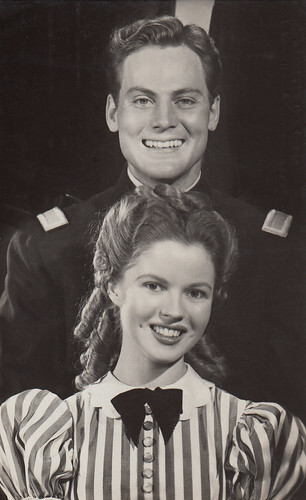
Spanish postcard.
Shirley Temple and John Agar married in 1945. They had a daughter, Linda Susan, in 1948, and divorced in 1950. John Agar was Shirley Temple ’s love interest in Fort Apache (1948), which was his first film, and Adventure in Baltimore (1949).
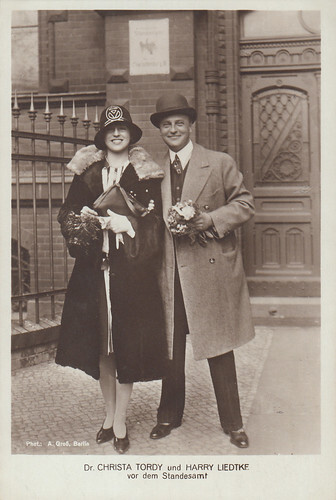
German postcard by Verlag Piek, Potsdam. Photo: A. Gross, Berlin. Caption: Dr Christa Tordy and Harry Liedtke in front of the registry office.
Christa Tordy and Harry Liedtke fell in love during the filming of Amor auf ski (1928) and married in March 1928. In April 1945, they were murdered in their villa by members of the Soviet Army.
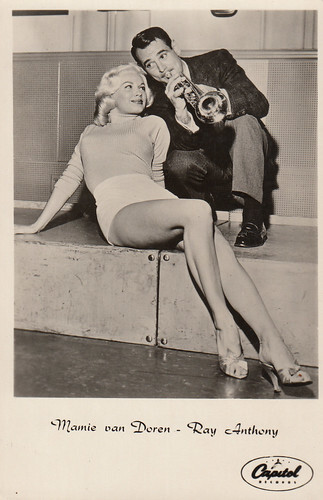
Dutch postcard by Editions Altona, no. 5155. Photo: Capitol.
Mamie Van Doren and Ray Anthony married in 1955. They had a son, Perry Ray, in 1956, and divorced in 1961. Ray Anthony appeared in three movies starring his then-wife. He played an assistant to a drug dealer in High School Confidential (1956), Mamie’s ex-husband in The Beat Generation (1959) and a private detective in Girls Town (1959).
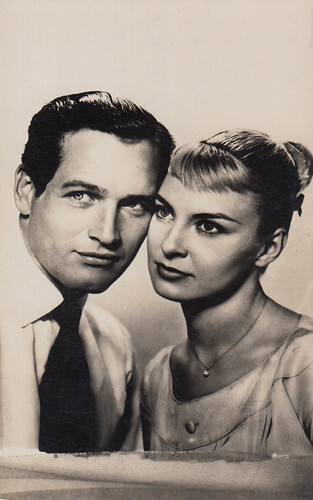
Spanish postcard by F.A.G.
Joanne Woodward and Paul Newman married in 1958. They had already met in 1953 when they both worked on the Broadway play 'Picnic' but their love affair blossomed during the filming of The Long, Hot Summer (1958). Their union lasted until Newman died in 2008. They had three daughters: Elinor in 1959, Melissa in 1961 and Claire in 1965. They co-starred in The Long, Hot Summer (1958), Rally ‘Round the Flag, Boys! (1958), From the Terrace (1960), Paris Blues (1961), A New Kind of Love (1963), Winning (1969), WUSA (1970), The Drowning Pool (1975), Harry and Son (1984), which was directed by Newman, and Mr. and Mrs Bridges (1990). He also directed her in four other films, without appearing in them: Rachel, Rachel (1968), The Effect of Gamma Rays on Man-in-the-Moon Marigolds (1972), The Shadow Box (1980), which was filmed for TV, and The Glass Menagerie (1987).
Text and postcards: Marlene Pilaete.

Belgian postcard, no. 951.
June Allyson and Dick Powell met during the filming of Meet the People (1944), in which the actress had a supporting part. They married in 1945. They later co-starred in two movies in 1950: Right Cross and The Reformer and the Redhead. They adopted a daughter, Pamela, in 1948, and had a son, Richard Jr., in 1950. In 1961, June Allyson filed for divorce but the couple soon reconciled and remained married until Powell died in 1963.

Dutch postcard by Takken, Utrecht, no. AX 3028. Photo: Warner Bros.
Pier Angeli was allegedly introduced to James Dean on the set of The Silver Chalice (1954). Dean was at the time filming East of Eden and came to greet Paul Newman. Angeli and Dean were attracted to each other and a romance blossomed. It seems that Pier’s mother was not too happy with their relationship and found singer Vic Damone a much more suitable suitor for her daughter. To Dean’s bewilderment, Pier Angeli married Damone on the 24th of December 1954. In an interview given to the National Enquirer in 1968, Pier Angeli reminisced about her affair with Dean: "We had complete understanding of each other … We were kids together and that’s the way we both liked it. It was all so innocent and so emphatic".

Dutch postcard by Int. Filmpers, Amsterdam, no. 3500.
Brigitte Bardot and Jacques Charrier met during the filming of Babette s’en va-t-en guerre (1959). They married in 1959 and had a son, Nicolas, in 1960. They divorced in 1963, as Bardot had fallen in love with Sami Frey.

talian postcard by Ballerini & Fratini, Firenze, no. 3974. Photo: Warner Bros.
Joan Blondell and Dick Powell married in 1936 and divorced in 1944. They had one daughter, Ellen, in 1938. They were frequent co-stars and appeared in Gold Diggers of 1933 (1933), Footlight Parade (1933), Convention City (1933), Dames (1934), Broadway Gondolier (1935), Colleen (1936), Stage Struck (1936), Gold Diggers of 1937 (1936), I Want a Divorce (1940) and Model Wife (1942).

Italian postcard by G.B. Falci Editore, Milano, no. 637. Olive Borden and George O'Brien in Fig Leaves (Howard Hawks, 1926).
Olive Borden and George O’Brien fell in love during the filming of Three Bad Men (1926). They soon co-starred again in Fig Leaves (1926). There were marriage rumors but they separated at the end of the 1920s. According to O’Brien’s son, Olive Borden was his father’s great love before he met Marguerite Churchill, whom he married in 1933.

German postcard by Ross Verlag, no. 4397/1, 1929-1930. Photo: Fox.
Sue Carol and Nick Stuart married in 1929. They had a daughter, Carol Lee, in 1932, and divorced in 1934. They co-starred in Girls Gone Wild (1929), Chasing Through Europe (1929), Why Leave Home? (1929) and Secret Sinners (1933).

German postcard by Ross Verlag, no. 3994/1, 1929-1930. Photo: Paramount.
Kathryn Carver and Adolphe Menjou married in 1928 and divorced in 1934. They co-starred in Service for Ladies (1927), Serenade (1927) and His Private Life (1928).

German postcard by Ross Verlag, no. 3981/1, 1929-1930. Photo: Paramount. The actress on the card is Mildred Davis, not Marion Davies , as erroneously captioned.
Mildred Davis and Harold Lloyd married in 1923. From 1919 to 1923, she had been Lloyd’s frequent leading lady in his comedies, including the highly popular Safety Last (1923). They had one daughter, Gloria Lloyd, in 1923, and one boy, Harold Clayton Lloyd Jr., in 1931. A second daughter, Gloria Freeman, was adopted in 1930. She was renamed Marjorie Elizabeth but was known as Peggy for most of her life. Mildred Davis passed away in 1969. Harold Lloyd died two years later.

Italian postcard by G.B. Falci Editore, Milano, no. 559. Victoria Forde, Tom Mix and their daughter Thomasina Mix.
Victoria Forde and Tom Mix married in 1918. Victoria had been Tom’s frequent co-star in his Westerns at Selig and Fox. They had a daughter, Thomasina, in 1922, and divorced in 1932.

Italian postcard in the 'serie d'oro' by Ballerini & Fratini, Firenze, no. 637. Photo: Metro Goldwyn, Roma. Greta Garbo and John Gilbert in Flesh and the Devil (Clarence Brown, 1926).
Greta Garbo and John Gilbert co-starred for the first time in Flesh and the Devil. They fell in love during filming and this is obvious in their incandescent love scenes, as you can see on this postcard. They appeared together again in Love (1927) and A Woman of Affairs (1928). However, their affair was over by 1929. In 1933, they made a last film together, Queen Christina, but, at the time, John Gilbert ’s career was in decline.

Spanish postcard by Archivo Bermejo, no. 4066. Orson Welles and Rita Hayworth in The Lady From Shanghai (Orson Welles, 1947).
Rita Hayworth and Orson Welles married in 1943. They had a daughter, Rebecca, in 1944, and divorced in 1947. They co-starred in The Lady from Shanghai (1947), which Welles also directed.

Dutch postcard by Takken, Utrecht, no. AX 1912. Photo: Ufa.
Audrey Hepburn and Mel Ferrer met in 1953 and their love affair developed when they appeared together in the play 'Ondine' which opened on Broadway in February 1954. They married in September 1954. They had one son, Sean, in 1960, and divorced in 1968. They co-starred in War and Peace (1956).

Spanish postcard by Soberanas, no. 426.
Janet Leigh and Tony Curtis met in 1950 and married in 1951. They had two daughters, Kelly Lee in 1956 and Jamie Lee in 1958. They co-starred in Houdini (1953), The Black Shield of Falworth (1954), The Vikings (1958), The Perfect Furlough (1958) and Who Was That Lady? (1960).They divorced in 1962, as Tony Curtis had fallen in love with actress Christine Kaufmann, whom he married in 1963. Jamie Lee Curtis would later also become a movie star.

Italian postcard by Piccoli, Milano, no. 875/6.
Jayne Mansfield and Mickey Hargitay married in 1958. They co-starred in the Italian peplum Gli amori di Ercole (1960). They had three children: Miklos in 1958, Zoltan in 1960 and Mariska in 1964. Miklos and Zoltan appear with their parents on this Italian postcard. The little girl is Jayne Marie, the daughter Jayne had in 1950 from her previous marriage. Jayne Mansfield and Mickey Hargitay’s 1963 Mexican divorce was ruled valid by California in August 1964. Mariska Hargitay would later become famous for her role in the TV series Law and Order: Special Victims Unit.

Spanish postcard by JDP, Valencia, no. 2198.
Jean-Pierre Aumont and Maria Montez married in 1943. They had one daughter, Maria Christina, in 1946. Maria Montez and Jean-Pierre Aumont co-starred in Siren of Atlantis (1949). She passed away in 1951. As Tina Aumont , Maria Christina would later become an actress.

Spanish postcard, no. 723.
Patricia Neal and Gary Cooper , who was married since 1933 to Veronica "Rocky" Balfe, fell in love in 1948 during the filming of The Fountainhead. They later co-starred again in Bright Leaf (1950). According to Patricia Neal , she got pregnant and had an abortion in 1950. Their passionate affair ended in December 1951.

Italian postcard by Ballerini & Fratini, Firenze, no. 129. Photo: United Artists.
Mary Pickford and Douglas Fairbanks married in 1920, after their respective divorces. At the time, they had been lovers for some years. They were considered the king and queen of Hollywood. They co-starred in The Taming of the Shrew (1929). In 1931, Douglas Fairbanks embarked on an affair with Sylvia Ashley. Mary Pickford filed for divorce in December 1933 and it was granted in January 1936.

German postcard by Ross Verlag, no. 3101/1, 1928-1929. Photo: United Artists.
During the filming of My Best Girl (1927), a mutual attraction developed between Mary Pickford and Charles Rogers . She was flattered to be courted by a man who was twelve years her junior. They stayed in touch and, after her divorce from Fairbanks in 1936, Mary Pickford married Charles Rogers in 1937. They adopted two children, Roxanne in 1938 and Ronald Charles in 1943. Their union lasted until Mary died in 1979.

British postcard by Beagles in the 'Famous Cinema Stars' series, no. 197L.
Natacha Rambova and Rudolph Valentino married in Mexico in May 1922 but, as his divorce from his previous wife wasn’t finalised yet, he was charged with bigamy when they returned to the U.S.A. They legally remarried in March 1923 and their divorce was granted in Paris in January 1926.

Spanish postcard by Oscarcolor, no. 401.
Romy Schneider and Alain Delon fell in love during the filming of Christine (1958). After a 5-year love affair, he abruptly left her in 1963 for Nathalie Delon, whom he married in 1964.

Italian postcard by Ballerini & Fratini, Firenze, no. 2639. Photo: Metro-Goldwyn-Mayer.
Zeppo Marx and his wife introduced Robert Taylor to Barbara Stanwyck in 1936. They got along very well and soon were romantically linked. They co-starred in His Brother’s Wife (1936) and This Is My Affair (1937). They married in 1939. In 1950, Taylor had a much-publicized fling with an Italian starlet during the filming of Quo Vadis which hastened the end of their marriage. Their divorce became final in February 1952. They remained on good terms and co-starred again in The Night Walker (1964).

Spanish postcard.
Shirley Temple and John Agar married in 1945. They had a daughter, Linda Susan, in 1948, and divorced in 1950. John Agar was Shirley Temple ’s love interest in Fort Apache (1948), which was his first film, and Adventure in Baltimore (1949).

German postcard by Verlag Piek, Potsdam. Photo: A. Gross, Berlin. Caption: Dr Christa Tordy and Harry Liedtke in front of the registry office.
Christa Tordy and Harry Liedtke fell in love during the filming of Amor auf ski (1928) and married in March 1928. In April 1945, they were murdered in their villa by members of the Soviet Army.

Dutch postcard by Editions Altona, no. 5155. Photo: Capitol.
Mamie Van Doren and Ray Anthony married in 1955. They had a son, Perry Ray, in 1956, and divorced in 1961. Ray Anthony appeared in three movies starring his then-wife. He played an assistant to a drug dealer in High School Confidential (1956), Mamie’s ex-husband in The Beat Generation (1959) and a private detective in Girls Town (1959).

Spanish postcard by F.A.G.
Joanne Woodward and Paul Newman married in 1958. They had already met in 1953 when they both worked on the Broadway play 'Picnic' but their love affair blossomed during the filming of The Long, Hot Summer (1958). Their union lasted until Newman died in 2008. They had three daughters: Elinor in 1959, Melissa in 1961 and Claire in 1965. They co-starred in The Long, Hot Summer (1958), Rally ‘Round the Flag, Boys! (1958), From the Terrace (1960), Paris Blues (1961), A New Kind of Love (1963), Winning (1969), WUSA (1970), The Drowning Pool (1975), Harry and Son (1984), which was directed by Newman, and Mr. and Mrs Bridges (1990). He also directed her in four other films, without appearing in them: Rachel, Rachel (1968), The Effect of Gamma Rays on Man-in-the-Moon Marigolds (1972), The Shadow Box (1980), which was filmed for TV, and The Glass Menagerie (1987).
Text and postcards: Marlene Pilaete.
Published on December 29, 2023 22:00
December 28, 2023
Verlag Hermann Leiser (5)
In our fifth and last post about Berlin postcard publishing house Verlag Hermann Leiser, we cover the numbers 8001 - 9999. Jean Ritsma of the website Ross Verlag Postcards made an excellent catalogue of the Leiser star postcards in which she also explains how the reuse of the inventory control numbers on the cards made the catalogue complicated. Here at EFSP, we present you our favourite film star postcards of this legendary publisher.
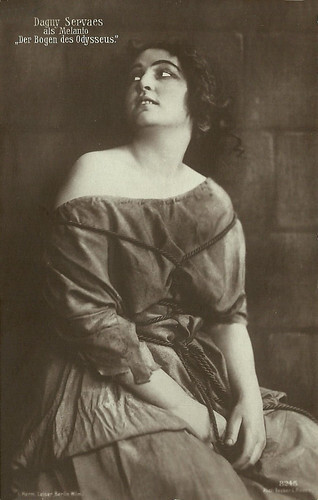
German postcard by Hermann Leiser, Berlin-Wilm., no. 8245. Photo: Becker & Maass. Dagny Servaes in 'Der Bogen des Odysseus'. Collection: Didier Hanson.
Dagny Servaes (1894-1961) was a German-Austrian theatre and film actress. She reached her peak in Ernst Lubitsch Das Weib des Pharao/The Pharao's Wife (1921).
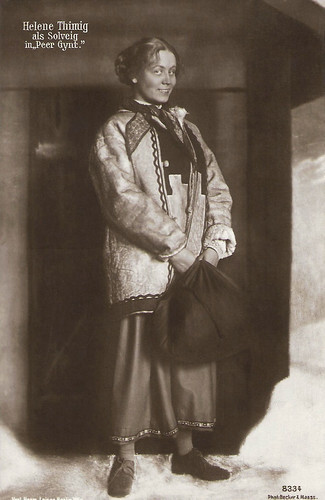
German postcard by Verlag Herm. Leiser, Berlin-Wilm., no. 8334. Photo: Becker & Maass. Caption: Helene Thimig as Solveig in 'Peer Gynt'. Thimig appeared in the play by Henrik Ibsen in 1914-1915.
Austrian actress Helene Thimig (1889-1974) was an important stage performer during the Weimar Republic. She came from a renowned acting family: she was the daughter of Hugo Thimig and the sister of Hermann Thimig and Hans Thimig. She fled the Nazis with her later husband, theatre producer/director Max Reinhardt, sought refuge in Hollywood, and appeared in 18 Hollywood films. After the war, she returned to Vienna where she had a prolific stage career but only sporadically appeared in films.
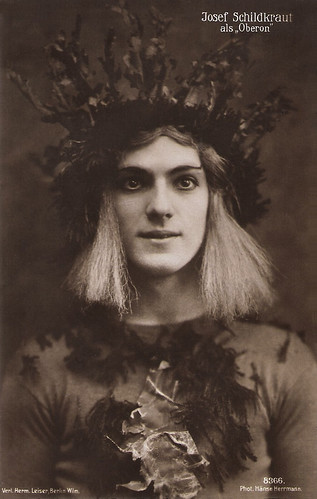
German postcard by Verlag Hermann Leiser, Berlin-Wilm., no. 8366. Photo: Hänse Herrmann. Joseph Schildkraut as Oberon in a German stage production of 'A Midsummer Night's Dream'.
Joseph Schildkraut (1896-1964) was an Austrian-American actor. He started his career in the silent German cinema and became a matinée idol in silent Hollywood. Schildkraut won an Oscar for his performance as Captain Alfred Dreyfus in the film The Life of Emile Zola (1937). Later he was nominated for a Golden Globe for his performance as Otto Frank in the film The Diary of Anne Frank (1959) and a Primetime Emmy for his performance as Rabbi Gottlieb in a 1962 episode of the television series Sam Benedict.
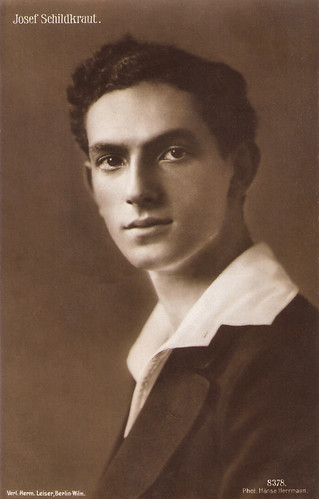
German postcard by Verlag Hermann Leiser, Berlin-Wilm., no. 8378. Photo: Hänse Herrmann. Joseph Schildkraut .
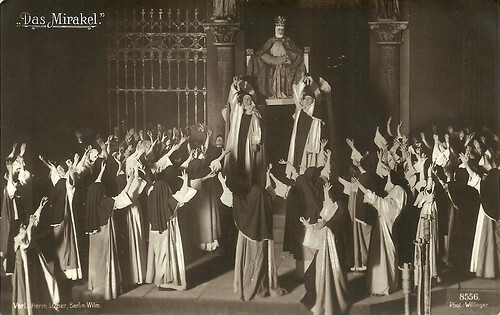
German postcard by Verlag Hermann Leiser, Berlin-Wilm., no. 8556. Photo: Willinger. Maria Carmi in the stage play (1911) or the Austrian-British film Das Mirakel/The Miracle (1912).
With her aristocratic air, her severe looks but also her sweet undertones, Italian silent film star and stage actress Maria Carmi (1880-1957) was the cinematic translation of the 19th century Primadonna. Later she became Princess Norina Matchabelli and was co-founder of the perfume company Prince Matchabelli.
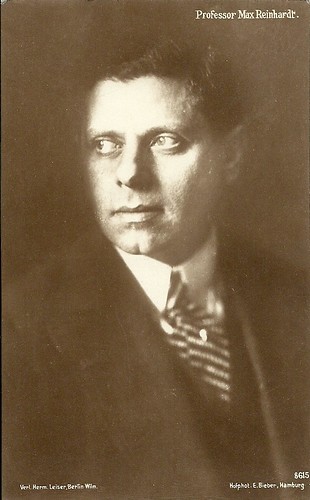
German postcard by Verlag Hermann Leiser, Berlin, no. 8615. Photo: Hofphot. E. Bieber, Hamburg. Collection: Didier Hanson.
German actor-director Max Reinhardt (1873-1943) was one of the great innovators of the theatre. He also directed several films, including Sumurûn (1910) and Das Mirakel (1912). In 1934, he went into exile and made in Hollywood A Midsummer Night's Dream (1935).
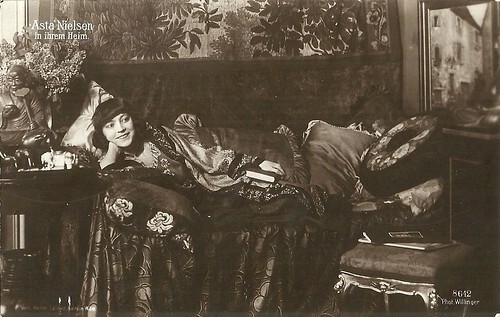
German postcard by Verlag Hermann Leiser, Berlin-Wilmersdorf, no. 8642. Photo: Willinger. Asta Nielsen in ihrem Heim (at home).
Willinger probably refers to the Jewish Austrian photographer Wilhelm Willinger (1879-1943), born in Budapest in what was then the Austrian-Hungarian Empire. Until 1900 he was active in Budapest, where he did so well that he was elected to the Board of Photographers in 1897. Between 1902 (or 1909) and 1918, he had his own film studio in Berlin, while maintaining a studio in Pest. Willinger was known for his portraits of the early silent film era, which were also issued as postcards.
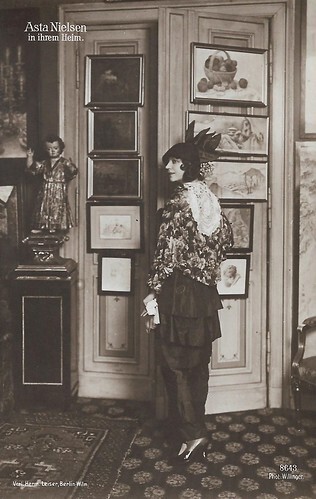
German postcard by Verlag Hermann Leiser, Berlin-Wilmersdorf, no. 8643. Photo: Willinger. Asta Nielsen in ihrem Heim (at home). Nielsen wears the dress and hat from her film Die falsche Asta Nielsen (Urban Gad, 1915).
Danish silent film actress Asta Nielsen (1881-1972) was one of the most popular leading ladies of the 1910s and one of the first international film stars. Of her 74 films between 1910 and 1932, seventy were made in Germany where she was known simply as "Die Asta". Noted for her large dark eyes, mask-like face and boyish figure, Nielsen most often portrayed strong-willed passionate women trapped by tragic consequences.
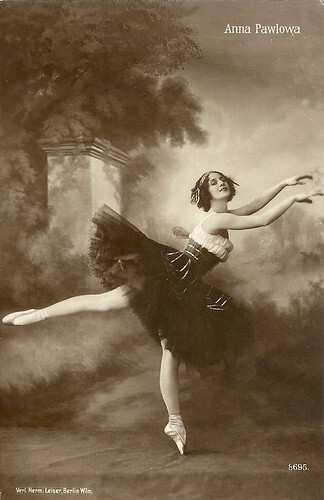
German postcard by Verlag Hermann Leiser, Berlin-Wilm., no. 8695. Collection: Didier Hanson.
Anna Pavlova (Russian: Анна Павлова; 1881–1931) was a Russian prima ballerina of the late 19th and the early 20th centuries. She was a principal artist of the Imperial Russian Ballet and the Ballets Russes of Sergei Diaghilev. Pavlova is most recognised for the creation of the role The Dying Swan and, with her own company, she became the first ballerina to tour ballet around the world.
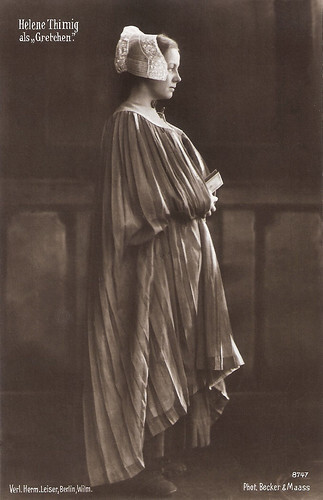
German postcard by Verlag Herm. Leiser, Berlin-Wilm., no. 8747. Photo: Becker & Maass. Helene Thimig as Gretchen in Max Reinhardt's stage production of Goethe's 'Faust' (1920).
Austrian actress Helene Thimig (1889-1974) was an important stage performer during the Weimar Republic. She came from a renowned acting family: she was the daughter of Hugo Thimig and the sister of Hermann Thimig and Hans Thimig. She fled the Nazis with her later husband, theatre producer/director Max Reinhardt, sought refuge in Hollywood, and appeared in 18 Hollywood films. After the war, she returned to Vienna where she had a prolific stage career but only sporadically appeared in films.
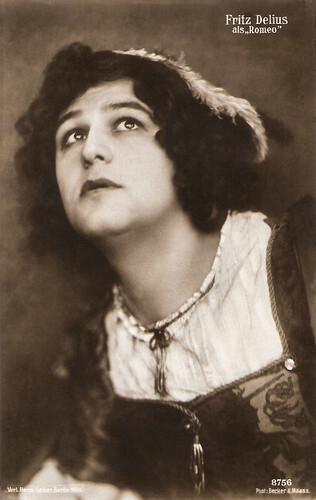
German postcard by Herm. Leiser, Berlin-Wilm., no. 8756. Photo: Becker & Maass. Fritz Delius as Romeo in 'Romeo and Juliet' by William Shakespeare, probably under the direction of Max Reinhardt, ca. 1913.
Fritz Delius was a German stage and screen actor, born 28 September 1890 in Berlin, Germany, and died 20 September 1966 in Basel, Switzerland.
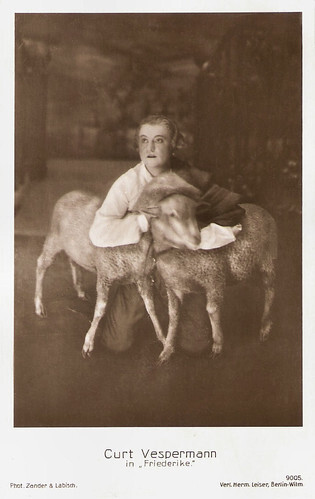
German postcard by Verlag Hermann Leiser, Berlin-Wilm., no. 9005. Photo: Zander & Labisch. Curt Vespermann in 'Friederike'.
German character actor Curt Vespermann (1887-1957) was active in nearly 200 films between 1915 and 1957.
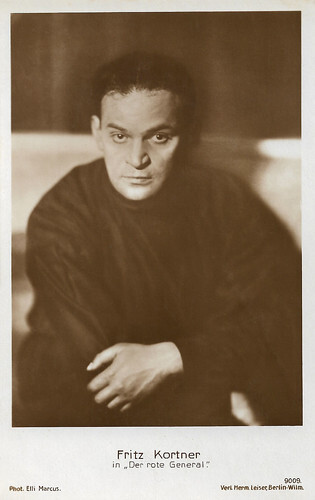
German postcard by Verlag Herm. Leiser, Berlin-Wilm., no. 9009. Photo: Eli Marcus. Fritz Kortner in the play 'Der rote General' (1928) by Hermann Ungar.
Austrian-born stage and film actor and theatre director Fritz Kortner (1892-1970) was one of the best-known character actors of German silent cinema. His speciality was playing sinister and threatening roles.
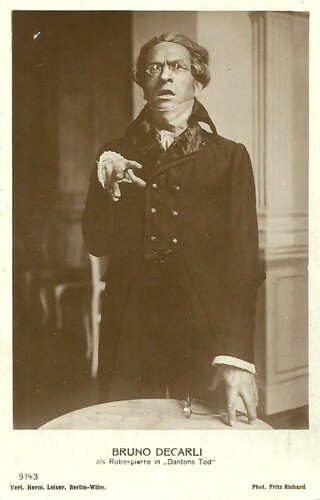
German postcard by Verlag Hermann Leiser, Berlin, no. 9143. Photo: Fritz Richard. Bruno Decarli as Robespierre in the play 'Dantons Tod' (Danton's Death) by Georg Büchner.
'Danton's Death' (Dantons Tod) was the first play written by Georg Büchner, set during the French Revolution. It was written in 1835 but only first performed in 1902. Decarli played Robespierre on stage under the direction of Max Reinhardt in 1916 at the Deutsches Theater in Berlin. He was such a success in this part that he reprised it in 1921 in Berlin and in 1929 in Dresden. Because of the success of the 1921 version, Dimitri Buchowetzki would adapt it the same year for his film Danton, with Emil Jannings as Danton and Werner Krauss as Robespierre.
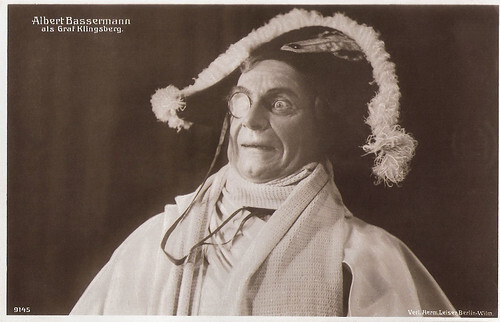
German postcard by Verlag Hermann Leiser, Berlin-Wilm., no. 9145. Albert Bassermann as Graf Klingsberg in the play 'Die beiden Klingsberg' by August von Kotzebue.
Albert Bassermann (1867–1952) was one of the first great German stage actors who worked for the cinema. In 1933 he fled the Nazi regime and became an Oscar-nominated stage and film actor in the US.
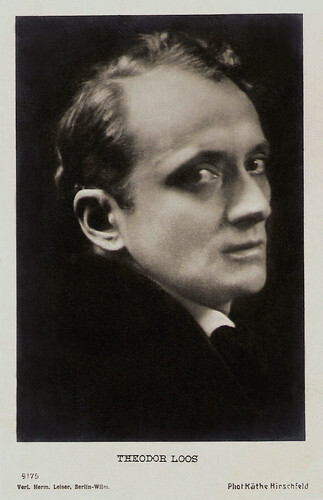
German postcard by Verlag Herm. Leiser, Berlin-Wilm., no. 9175. Photo: Käthe Hirschfeld.
Theodor Loos (1883-1954) was a German stage and screen actor between the 1910s and the 1950s. He became famous for his parts in Fritz Lang’s German films.
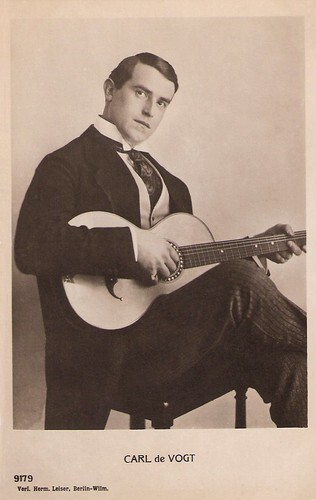
German postcard by Verlag Hermann Leiser, Berlin-Wilmersdorf, no. 9179.
German actor Carl de Vogt (1885-1970) was a kind of Indiana Jones in the silent films of Fritz Lang. De Vogt was also a popular singer and made several records in the 1920s.
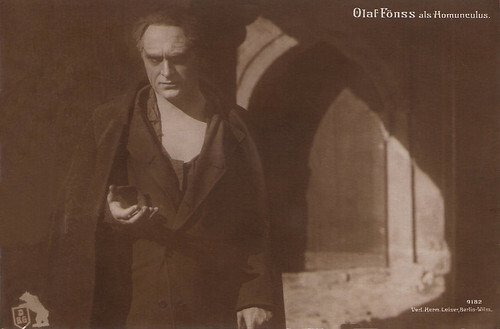
German postcard by Verlag Herm. Leiser, Berlin, no. 9182. Photo: DBG (Deutsche Bioscop-Gesellschaft). Olaf Fønss in Homunculus, 5. Teil. Die Vernichtung der Menschheit/ Homunculus (Otto Rippert, 1916).
Olaf Fønss (1882-1949) was one of Denmark and Germany's biggest stars of the silent film era. He also worked as a film director, producer and censor.
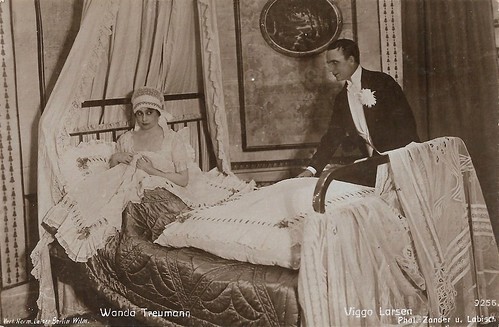
German postcard by Verlag Hermann Leiser, Berlin-Wilm., no. 9256. Photo: Zander & Labisch. Wanda Treumann and Viggo Larsen in one of their films.
Wanda Treumann (1883–1963) belonged among the most popular stars of German cinema before the First World War. Together with Viggo Larsen she also produced more than 80 films in the 1910s, in which she often played the female lead. As an actress, she played in nearly 90 films, but many of them were shorts.
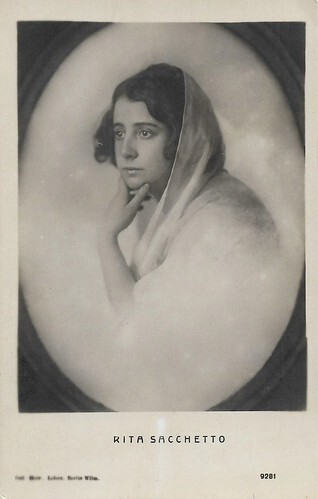
German postcard by Verlag Hermann Leiser, Berlin-Wilm., no. 9281.
German actress and dancer Rita Sacchetto (1879-1959) was in the 1910s a star of the Danish Nordisk Film Company.
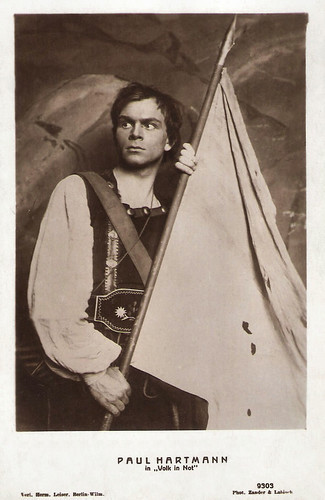
German postcard by Verlag Hermann Leiser, Berlin-Wilm., no. 9303. Photo: Zander & Labisch. Paul Hartmann in Volk in Not/People in Need (Wolfgang Neff, 1925).
German stage actor Paul Hartmann (1889-1977) made over 100 films, both in the silent and the sound period. Despite his commitment to the Nazi regime, he could continue his career quite smoothly into the 1950s and 1960s.
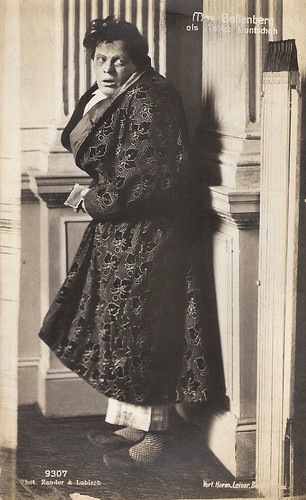
German postcard by Verlag Herm. Leiser, Berlin-Wilm., no. 9307. Photo: Zander & Labisch. Max Pallenberg in the play 'Tobias Buntschuh' (1917).
Max Pallenberg (1877-1934) was an Austrian singer, actor and comedian. He was one of the most important comedians of his time and often played under the direction of Max Reinhardt. Although Pallenberg was successful as a stage comedian, he only incidentally accepted roles in films.
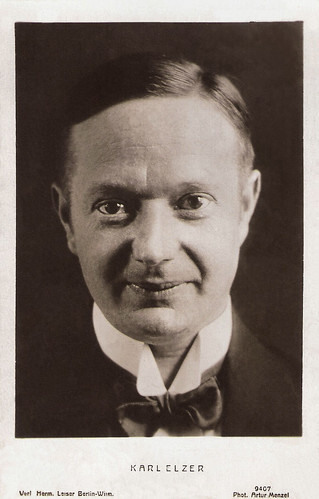
German postcard by Verlag Hermann Leiser, Berlin-Wilm, no. 9407. Photo: Arthur Menzel.
Karl Elzer (1881-1938) was a German supporting actor on the Berlin stage and in silent films. He was a child performer from the age of eight. He was most prominent in films of the 1920s, often in the role of industrialists or nobility. His films included Die blaue Laterne (1918), Maud Rockfellers Wette (1924) and Luther (1928).
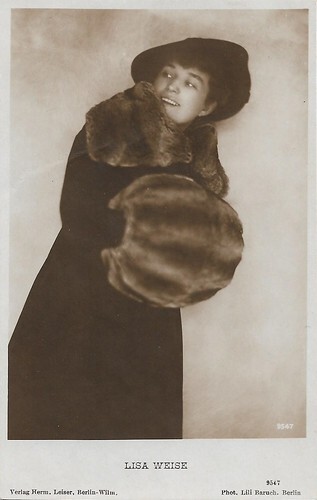
German postcard by Verlag Hermann Leiser, Berlin-Wilm., no. 9547. Photo: Lili Baruch, Berlin.
German actress Lisa Weise (?-1952) starred in silent films of the 1910s. Most of her films were directed by Friedrich Zelnik and often her film partner was Karl Beckersachs.
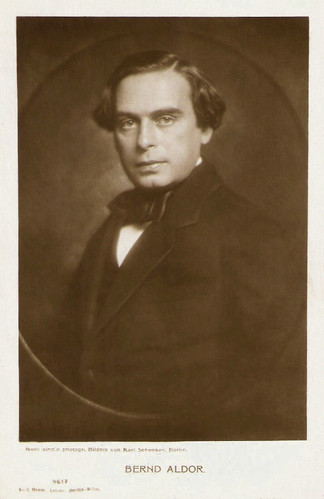
German postcard by Verlag Hermann Leiser, Berlin-Wilm., no. 9617. Photo: Karl Schenker, Berlin.
Bernd Aldor (1881-1950) was a star of the German silent cinema in the 1910s and 1920s, often in films by Richard Oswald or Lupu Pick. Sound film and the Nazi regime broke the career of this Jewish actor.
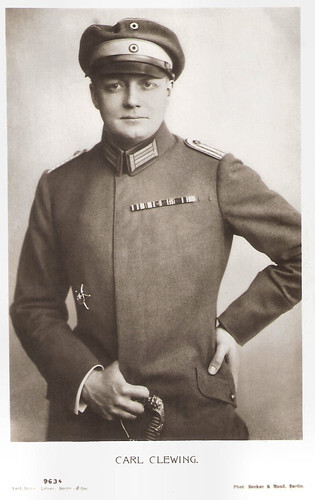
German postcard by Verlag Herm. Leiser, Berlin-Wilm., no. 9634. Photo: Becker & Maass.
German actor Carl Clewing (1884-1954) was an opera singer, the composer of the song 'Alle Tage ist kein Sonntag' (Not Every Day is a Sunday) and a Music professor in Berlin During the years of the early cinema he was much in demand as a film actor.
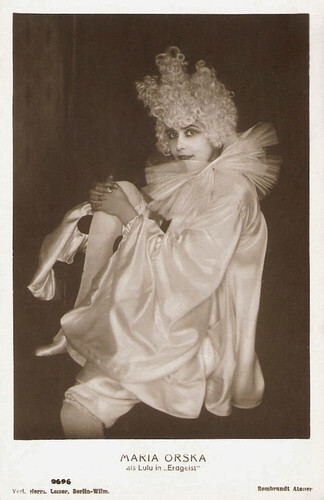
German postcard by Verlag Hermann Leiser, Berlin-Wilm., no. 9696. Photo: Rembrandt Atelier. Maria Orska in her role as Lulu in the stage play 'Erdgeist' (Earth Spirit) by Franz Wedekind directed in 1916 by Max Reinhardt.
Maria Orska (1893-1930) was a Russian-Jewish actress on the German stage and screen in the 1910s and 1920s.
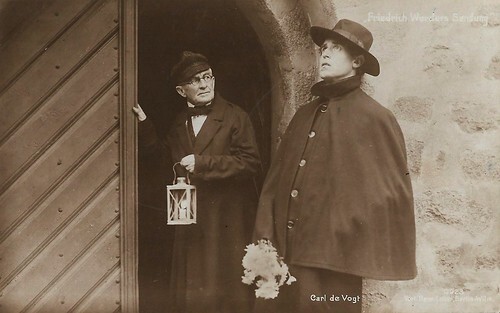
German postcard by Verlag Hermann Leiser, Berlin-Wilm., no. 9923. Carl de Vogt as the title character in Friedrich Werders Sendung (Otto Rippert, 1916), scripted by Hans Land (Hugo Landsberger) on whose novel (1915) the film was based.
German actor Carl de Vogt (1885-1970) was a kind of Indiana Jones in the silent films of Fritz Lang. De Vogt was also a popular singer and made several records in the 1920s.
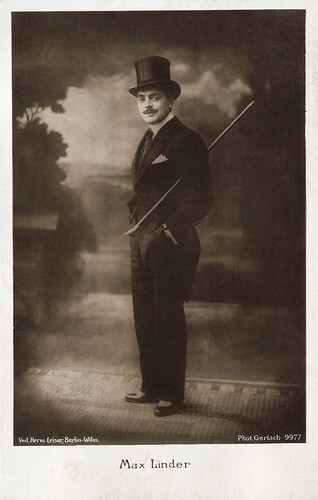
German postcard by Verlag Herm. Leiser, Berlin-Wilm., no. 9977. Photo: Gerlach.
French comedian Max Linder (1883-1925), with his trademark silk hat, stick and moustache was an influential pioneer of silent film. He was largely responsible for the creation of the classic style of silent slapstick comedy and he was the highest-paid entertainer of his day.
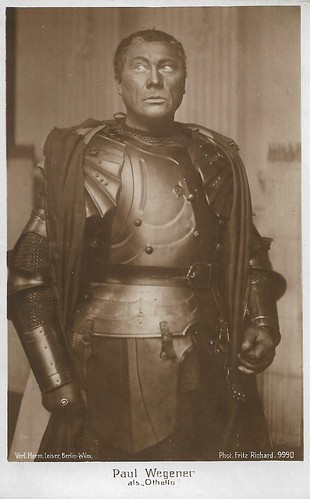
German postcard by Verlag Hermann Leiser, no. 9990. Photo: Fritz Richard. Caption: Paul Wegener as Othello.
German actor, writer and film director Paul Wegener (1874-1948) is one of the true fathers of the horror and fantasy genre, particularly remembered for his three silent films centred around the Jewish legend of the Golem. Wegener was one of the pioneers of German cinema who realized the potential of the new medium and used the possibilities of cinematic trick photography as a method for presenting fantastic tales in a serious matter.

German postcard by Hermann Leiser, Berlin-Wilm., no. 8245. Photo: Becker & Maass. Dagny Servaes in 'Der Bogen des Odysseus'. Collection: Didier Hanson.
Dagny Servaes (1894-1961) was a German-Austrian theatre and film actress. She reached her peak in Ernst Lubitsch Das Weib des Pharao/The Pharao's Wife (1921).

German postcard by Verlag Herm. Leiser, Berlin-Wilm., no. 8334. Photo: Becker & Maass. Caption: Helene Thimig as Solveig in 'Peer Gynt'. Thimig appeared in the play by Henrik Ibsen in 1914-1915.
Austrian actress Helene Thimig (1889-1974) was an important stage performer during the Weimar Republic. She came from a renowned acting family: she was the daughter of Hugo Thimig and the sister of Hermann Thimig and Hans Thimig. She fled the Nazis with her later husband, theatre producer/director Max Reinhardt, sought refuge in Hollywood, and appeared in 18 Hollywood films. After the war, she returned to Vienna where she had a prolific stage career but only sporadically appeared in films.

German postcard by Verlag Hermann Leiser, Berlin-Wilm., no. 8366. Photo: Hänse Herrmann. Joseph Schildkraut as Oberon in a German stage production of 'A Midsummer Night's Dream'.
Joseph Schildkraut (1896-1964) was an Austrian-American actor. He started his career in the silent German cinema and became a matinée idol in silent Hollywood. Schildkraut won an Oscar for his performance as Captain Alfred Dreyfus in the film The Life of Emile Zola (1937). Later he was nominated for a Golden Globe for his performance as Otto Frank in the film The Diary of Anne Frank (1959) and a Primetime Emmy for his performance as Rabbi Gottlieb in a 1962 episode of the television series Sam Benedict.

German postcard by Verlag Hermann Leiser, Berlin-Wilm., no. 8378. Photo: Hänse Herrmann. Joseph Schildkraut .

German postcard by Verlag Hermann Leiser, Berlin-Wilm., no. 8556. Photo: Willinger. Maria Carmi in the stage play (1911) or the Austrian-British film Das Mirakel/The Miracle (1912).
With her aristocratic air, her severe looks but also her sweet undertones, Italian silent film star and stage actress Maria Carmi (1880-1957) was the cinematic translation of the 19th century Primadonna. Later she became Princess Norina Matchabelli and was co-founder of the perfume company Prince Matchabelli.

German postcard by Verlag Hermann Leiser, Berlin, no. 8615. Photo: Hofphot. E. Bieber, Hamburg. Collection: Didier Hanson.
German actor-director Max Reinhardt (1873-1943) was one of the great innovators of the theatre. He also directed several films, including Sumurûn (1910) and Das Mirakel (1912). In 1934, he went into exile and made in Hollywood A Midsummer Night's Dream (1935).

German postcard by Verlag Hermann Leiser, Berlin-Wilmersdorf, no. 8642. Photo: Willinger. Asta Nielsen in ihrem Heim (at home).
Willinger probably refers to the Jewish Austrian photographer Wilhelm Willinger (1879-1943), born in Budapest in what was then the Austrian-Hungarian Empire. Until 1900 he was active in Budapest, where he did so well that he was elected to the Board of Photographers in 1897. Between 1902 (or 1909) and 1918, he had his own film studio in Berlin, while maintaining a studio in Pest. Willinger was known for his portraits of the early silent film era, which were also issued as postcards.

German postcard by Verlag Hermann Leiser, Berlin-Wilmersdorf, no. 8643. Photo: Willinger. Asta Nielsen in ihrem Heim (at home). Nielsen wears the dress and hat from her film Die falsche Asta Nielsen (Urban Gad, 1915).
Danish silent film actress Asta Nielsen (1881-1972) was one of the most popular leading ladies of the 1910s and one of the first international film stars. Of her 74 films between 1910 and 1932, seventy were made in Germany where she was known simply as "Die Asta". Noted for her large dark eyes, mask-like face and boyish figure, Nielsen most often portrayed strong-willed passionate women trapped by tragic consequences.

German postcard by Verlag Hermann Leiser, Berlin-Wilm., no. 8695. Collection: Didier Hanson.
Anna Pavlova (Russian: Анна Павлова; 1881–1931) was a Russian prima ballerina of the late 19th and the early 20th centuries. She was a principal artist of the Imperial Russian Ballet and the Ballets Russes of Sergei Diaghilev. Pavlova is most recognised for the creation of the role The Dying Swan and, with her own company, she became the first ballerina to tour ballet around the world.

German postcard by Verlag Herm. Leiser, Berlin-Wilm., no. 8747. Photo: Becker & Maass. Helene Thimig as Gretchen in Max Reinhardt's stage production of Goethe's 'Faust' (1920).
Austrian actress Helene Thimig (1889-1974) was an important stage performer during the Weimar Republic. She came from a renowned acting family: she was the daughter of Hugo Thimig and the sister of Hermann Thimig and Hans Thimig. She fled the Nazis with her later husband, theatre producer/director Max Reinhardt, sought refuge in Hollywood, and appeared in 18 Hollywood films. After the war, she returned to Vienna where she had a prolific stage career but only sporadically appeared in films.

German postcard by Herm. Leiser, Berlin-Wilm., no. 8756. Photo: Becker & Maass. Fritz Delius as Romeo in 'Romeo and Juliet' by William Shakespeare, probably under the direction of Max Reinhardt, ca. 1913.
Fritz Delius was a German stage and screen actor, born 28 September 1890 in Berlin, Germany, and died 20 September 1966 in Basel, Switzerland.

German postcard by Verlag Hermann Leiser, Berlin-Wilm., no. 9005. Photo: Zander & Labisch. Curt Vespermann in 'Friederike'.
German character actor Curt Vespermann (1887-1957) was active in nearly 200 films between 1915 and 1957.

German postcard by Verlag Herm. Leiser, Berlin-Wilm., no. 9009. Photo: Eli Marcus. Fritz Kortner in the play 'Der rote General' (1928) by Hermann Ungar.
Austrian-born stage and film actor and theatre director Fritz Kortner (1892-1970) was one of the best-known character actors of German silent cinema. His speciality was playing sinister and threatening roles.

German postcard by Verlag Hermann Leiser, Berlin, no. 9143. Photo: Fritz Richard. Bruno Decarli as Robespierre in the play 'Dantons Tod' (Danton's Death) by Georg Büchner.
'Danton's Death' (Dantons Tod) was the first play written by Georg Büchner, set during the French Revolution. It was written in 1835 but only first performed in 1902. Decarli played Robespierre on stage under the direction of Max Reinhardt in 1916 at the Deutsches Theater in Berlin. He was such a success in this part that he reprised it in 1921 in Berlin and in 1929 in Dresden. Because of the success of the 1921 version, Dimitri Buchowetzki would adapt it the same year for his film Danton, with Emil Jannings as Danton and Werner Krauss as Robespierre.

German postcard by Verlag Hermann Leiser, Berlin-Wilm., no. 9145. Albert Bassermann as Graf Klingsberg in the play 'Die beiden Klingsberg' by August von Kotzebue.
Albert Bassermann (1867–1952) was one of the first great German stage actors who worked for the cinema. In 1933 he fled the Nazi regime and became an Oscar-nominated stage and film actor in the US.

German postcard by Verlag Herm. Leiser, Berlin-Wilm., no. 9175. Photo: Käthe Hirschfeld.
Theodor Loos (1883-1954) was a German stage and screen actor between the 1910s and the 1950s. He became famous for his parts in Fritz Lang’s German films.

German postcard by Verlag Hermann Leiser, Berlin-Wilmersdorf, no. 9179.
German actor Carl de Vogt (1885-1970) was a kind of Indiana Jones in the silent films of Fritz Lang. De Vogt was also a popular singer and made several records in the 1920s.

German postcard by Verlag Herm. Leiser, Berlin, no. 9182. Photo: DBG (Deutsche Bioscop-Gesellschaft). Olaf Fønss in Homunculus, 5. Teil. Die Vernichtung der Menschheit/ Homunculus (Otto Rippert, 1916).
Olaf Fønss (1882-1949) was one of Denmark and Germany's biggest stars of the silent film era. He also worked as a film director, producer and censor.

German postcard by Verlag Hermann Leiser, Berlin-Wilm., no. 9256. Photo: Zander & Labisch. Wanda Treumann and Viggo Larsen in one of their films.
Wanda Treumann (1883–1963) belonged among the most popular stars of German cinema before the First World War. Together with Viggo Larsen she also produced more than 80 films in the 1910s, in which she often played the female lead. As an actress, she played in nearly 90 films, but many of them were shorts.

German postcard by Verlag Hermann Leiser, Berlin-Wilm., no. 9281.
German actress and dancer Rita Sacchetto (1879-1959) was in the 1910s a star of the Danish Nordisk Film Company.

German postcard by Verlag Hermann Leiser, Berlin-Wilm., no. 9303. Photo: Zander & Labisch. Paul Hartmann in Volk in Not/People in Need (Wolfgang Neff, 1925).
German stage actor Paul Hartmann (1889-1977) made over 100 films, both in the silent and the sound period. Despite his commitment to the Nazi regime, he could continue his career quite smoothly into the 1950s and 1960s.

German postcard by Verlag Herm. Leiser, Berlin-Wilm., no. 9307. Photo: Zander & Labisch. Max Pallenberg in the play 'Tobias Buntschuh' (1917).
Max Pallenberg (1877-1934) was an Austrian singer, actor and comedian. He was one of the most important comedians of his time and often played under the direction of Max Reinhardt. Although Pallenberg was successful as a stage comedian, he only incidentally accepted roles in films.

German postcard by Verlag Hermann Leiser, Berlin-Wilm, no. 9407. Photo: Arthur Menzel.
Karl Elzer (1881-1938) was a German supporting actor on the Berlin stage and in silent films. He was a child performer from the age of eight. He was most prominent in films of the 1920s, often in the role of industrialists or nobility. His films included Die blaue Laterne (1918), Maud Rockfellers Wette (1924) and Luther (1928).

German postcard by Verlag Hermann Leiser, Berlin-Wilm., no. 9547. Photo: Lili Baruch, Berlin.
German actress Lisa Weise (?-1952) starred in silent films of the 1910s. Most of her films were directed by Friedrich Zelnik and often her film partner was Karl Beckersachs.

German postcard by Verlag Hermann Leiser, Berlin-Wilm., no. 9617. Photo: Karl Schenker, Berlin.
Bernd Aldor (1881-1950) was a star of the German silent cinema in the 1910s and 1920s, often in films by Richard Oswald or Lupu Pick. Sound film and the Nazi regime broke the career of this Jewish actor.

German postcard by Verlag Herm. Leiser, Berlin-Wilm., no. 9634. Photo: Becker & Maass.
German actor Carl Clewing (1884-1954) was an opera singer, the composer of the song 'Alle Tage ist kein Sonntag' (Not Every Day is a Sunday) and a Music professor in Berlin During the years of the early cinema he was much in demand as a film actor.

German postcard by Verlag Hermann Leiser, Berlin-Wilm., no. 9696. Photo: Rembrandt Atelier. Maria Orska in her role as Lulu in the stage play 'Erdgeist' (Earth Spirit) by Franz Wedekind directed in 1916 by Max Reinhardt.
Maria Orska (1893-1930) was a Russian-Jewish actress on the German stage and screen in the 1910s and 1920s.

German postcard by Verlag Hermann Leiser, Berlin-Wilm., no. 9923. Carl de Vogt as the title character in Friedrich Werders Sendung (Otto Rippert, 1916), scripted by Hans Land (Hugo Landsberger) on whose novel (1915) the film was based.
German actor Carl de Vogt (1885-1970) was a kind of Indiana Jones in the silent films of Fritz Lang. De Vogt was also a popular singer and made several records in the 1920s.

German postcard by Verlag Herm. Leiser, Berlin-Wilm., no. 9977. Photo: Gerlach.
French comedian Max Linder (1883-1925), with his trademark silk hat, stick and moustache was an influential pioneer of silent film. He was largely responsible for the creation of the classic style of silent slapstick comedy and he was the highest-paid entertainer of his day.

German postcard by Verlag Hermann Leiser, no. 9990. Photo: Fritz Richard. Caption: Paul Wegener as Othello.
German actor, writer and film director Paul Wegener (1874-1948) is one of the true fathers of the horror and fantasy genre, particularly remembered for his three silent films centred around the Jewish legend of the Golem. Wegener was one of the pioneers of German cinema who realized the potential of the new medium and used the possibilities of cinematic trick photography as a method for presenting fantastic tales in a serious matter.
Published on December 28, 2023 22:00
December 27, 2023
Verlag Hermann Leiser (4)
In our fourth post about Verlag Hermann Leiser, a Berlin publisher that was active in the 1910s, we focus on the numbers 6001 - 8000. Jean Ritsma of Ross Postcards made a catalogue of the Leiser star postcards. To salute her work, we present you our favourite Leiser postcards this week.
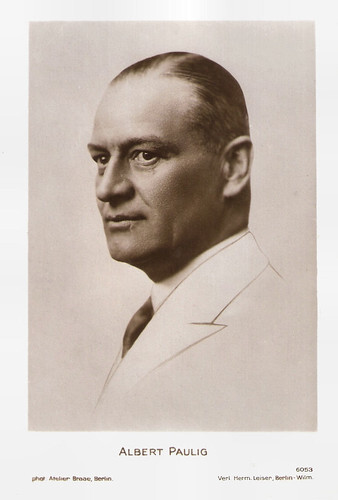
German postcard by Verl. Herm. Leiser, Berlin-Wilm., no. 6053. Berlin. Photo: Atelier Binder, Berlin.
Albert Paulig (1873-1933) was a popular actor in the German silent cinema of the 1910s and 1920s.
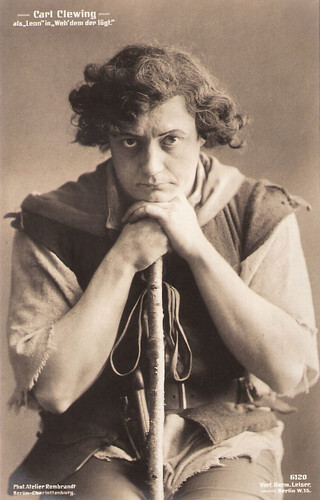
German postcard by Verlag Herm. Leiser, no. 6120. Photo: Atelier Rembrandt, Berlin-Charlottenburg. Carl Clewing in the role of Leon, the kitchen help in a stage production of 'Weh' dem, der lügt!' by Franz Grillparzer.
German actor Carl Clewing (1884-1954) was an opera singer, the composer of the song 'Alle Tage ist kein Sonntag' (Not every day is a Sunday) and a Music professor in Berlin. During the years of the early cinema, he was much in demand as a film actor.
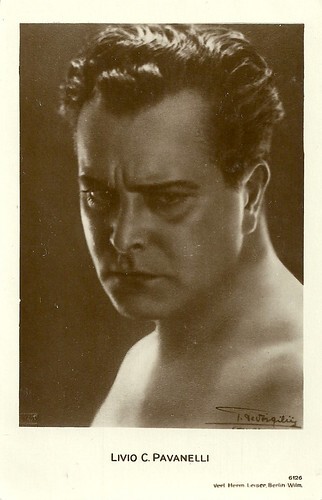
German postcard by Verlag Hermann Leiser, Berlin-Wilm., no. 6126. Photo: G. De Virgiliis.
Livio Pavanelli (1881-1958) was an Italian actor of the Italian and in particular German silent cinema. He also worked in Italian sound cinema as an actor and as a production manager. He directed four Italian films, both in the silent and the sound era.
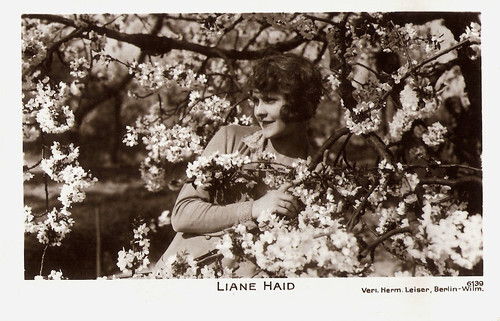
German postcard by Verlag Hermann Leiser, Berlin-Wilm., no. 6139.
Prima ballerina, dancer, singer and actress Liane Haid (1895-2000) was the first film star of Austria. She was the epitome of the 'Süßes Wiener Mädel' (Sweet Viennese Girl) and from the mid-1910s on she made close to a hundred films.
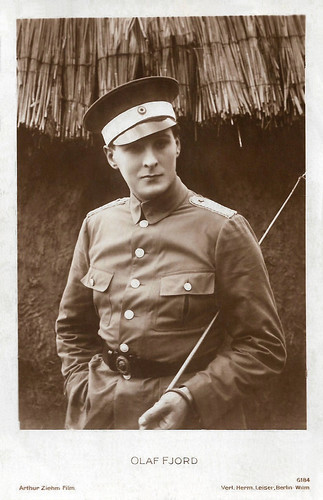
German postcard by Verlag Hermann Leiser, Berlin-Wilm., no. 6184. Photo: Arthur Ziehm Film. Olaf Fjord in Ich hatt' einen Kameraden/I had a comrade (Conrad Wiene, 1926).
Olaf Fjord (1897-1945) was an Austrian film actor, director, and producer. He appeared in numerous Austrian, German, French, and Czech silent films.
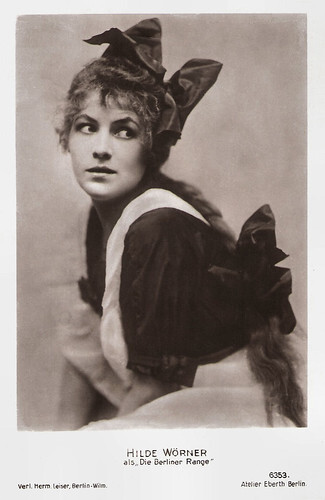
German postcard by Verlag Hermann Leiser, Berlin-Wilm., no. 6253. Photo: Atelier Eberth, Berlin. Hilde Wörner in Die Berliner Range/The Berlin Urchin (Max Mack, 1913).
Hilde Wörner (1895-1963) was a German stage and film actress, who also worked as a filmmaker. She appeared mainly in silent films, had her own series and her most notable film was Ernst Lubitsch’s Die Flamme (1922).
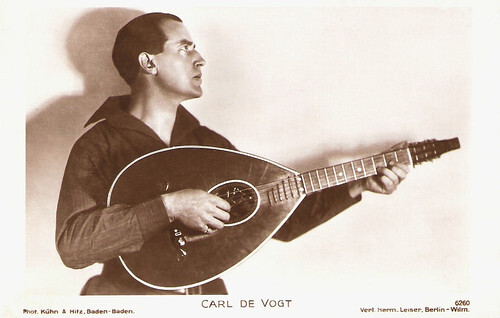
German postcard by Verlag Hermann, Leiser, Berlin-Wilm., no. 6260. Photo: Kühn & Hitz, Baden-Baden.
German actor Carl de Vogt (1885-1970) was a kind of Indiana Jones in the silent films of Fritz Lang. De Vogt was also a popular singer and made several records in the 1920s.
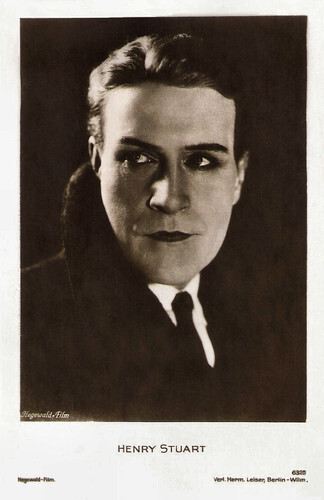
German postcard by Verlag Herm. Leiser, Berlin-Wilm., no. 6325. Photo: Hegewald-Film.
Henry Stuart (1885-1942) was a British-Swiss actor, director and writer, who worked mostly in German silent cinema.
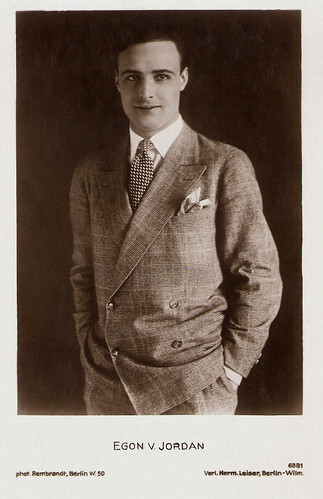
German postcard by Verl. Herm. Leiser, Berlin-Wilm., no. 6381. Photo: Rembrandt, Berlin.
Austrian actor Egon von Jordan (1902-1978) appeared in 85 films between 1923 and 1974. The elegant gentleman was a star in German and Austrian silent films, but later he merely appeared in supporting and small roles, including as the Austrian prime minister in the very successful Sissi trilogy.
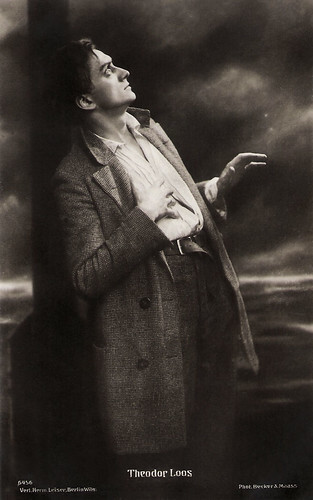
German postcard by Verlag Herm. Leiser, Berlin-Wilm., no. 6456. Photo: Becker & Maass.
Theodor Loos (1883-1954) was a German stage and screen actor between the 1910s and the 1950s. He became famous for his parts in Fritz Lang’s German films.

German postcard by Hermann Leiser, Berlin-Wilm., no. 6465. Photo: Poetic-Film. Elisabeth Bergner in Doña Juana/Donna Juana (Paul Czinner, 1928).
The profoundly sensitive acting of Austrian-British actress Elisabeth Bergner (1897-1986) influenced the German cinema of the 1920s and 1930s. She specialised in a bisexual type that she portrayed in Der Geiger von Florenz and in other film and stage roles. Nazism forced her to go into exile, but she worked successfully in the West End and on Broadway.
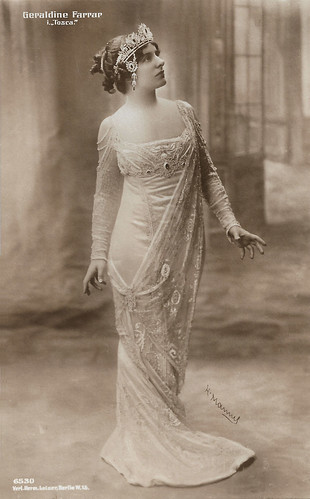
German postcard by Verlag Herm. Leiser, Berlin, no. 6530. Photo: H. Manuel. Geraldine Farrar in the opera 'Tosca'.
American soprano opera singer and film actress Geraldine Farrar (1882-1967) was noted for her glamorous beauty, acting ability, and the timbre of her voice. Barely 20, she was already the toast of Berlin. Later at the Met in New York, she had a large following among young women, who were nicknamed ‘Gerry-flappers’. Farrar also starred in more than a dozen silent films from 1915 to 1920. She was married to and co-starred with Dutch matinee idol Lou Tellegen.
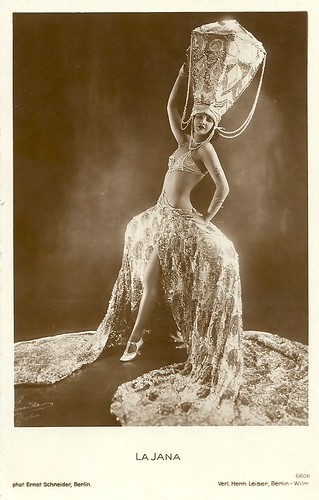
German postcard by Verlag Hermann Leiser, Berlin-Wilm., no. 6606. Photo: Ernst Schneider, Berlin. Collection: Didier Hanson.
Sexy German dancer and film actress La Jana (1905-1940) was the most popular showgirl in Berlin in the 1930s. She appeared in 25 European films, often dancing in exotic costumes. In 1940, she suddenly died of pneumonia and pleurisy.
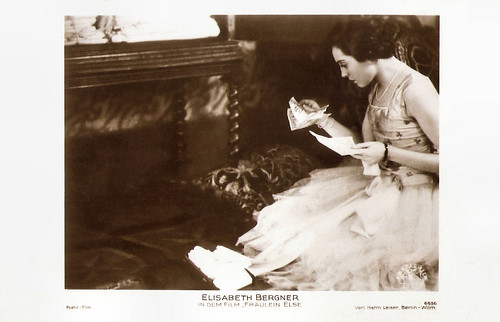
German postcard by Verlag Herm. Leiser, Berlin-Wilm, no. 6656. Photo: Poetic-Film. Elisabeth Bergner in Fräulein Else/Miss Else (Paul Czinner, 1929), based on the play by Arthur Schnitzler.
The profoundly sensitive acting of Austrian-British actress Elisabeth Bergner (1897-1986) influenced the German cinema of the 1920s and 1930s. She specialized in a bisexual type that she portrayed in Der Geiger von Florenz and in other film and stage roles. Nazism forced her to go into exile, but she worked successfully in the West End and on Broadway.
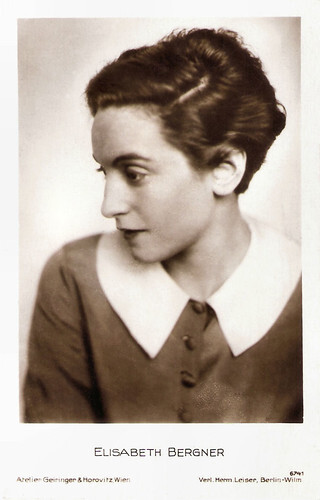
German postcard by Verlag Herm. Leiser, Berlin-Wilm., no. 6741. Photo: Trude Geiringer & Dora Horovitz, Wien.
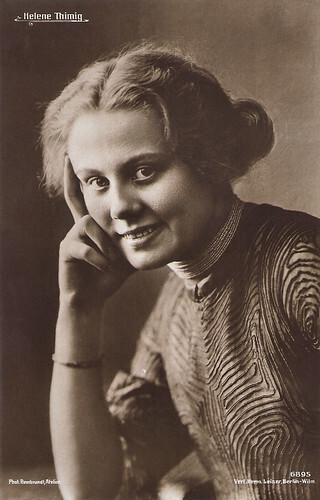
German postcard by Verlag Herm. Leiser, Berlin-Wilm., no. 6895. Photo: Rembrandt Atelier.
Austrian actress Helene Thimig (1889-1974) was an important stage performer during the Weimar Republic. She came from a renowned acting family: she was the daughter of Hugo Thimig and the sister of Hermann Thimig and Hans Thimig. She fled the Nazis with her later husband, theatre producer/director Max Reinhardt, sought refuge in Hollywood, and appeared in 18 Hollywood films. After the war, she returned to Vienna where she had a prolific stage career but only sporadically appeared in films.
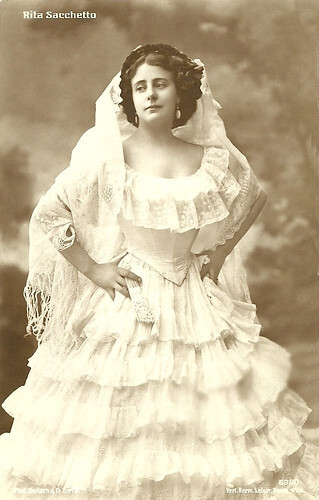
German Postcard by Verlag Hermann Leiser, Berlin-Wilm., no. 6990. Photo: Gerlach & Co. Collection: Didier Hanson.
German actress and dancer Rita Sacchetto (1879-1959) was in the 1910s a star of the Danish Nordisk Film Company.
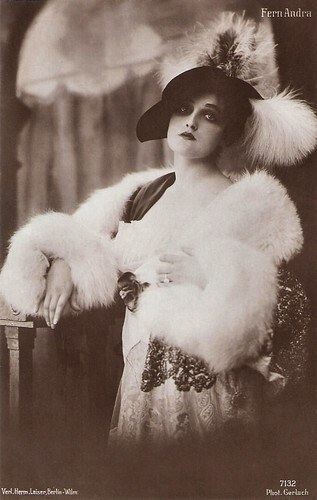
German postcard by Verlag Hermann Leiser, Berlin-Wilm., no. 7132. Photo: Gerlach.
'Modern' American actress Fern Andra (1893-1974) became one of the most popular film stars of the German cinema in the 1910s and early 1920s. In her films, she mastered tightrope, riding horses without a saddle, driving cars and motorcycles, bobsleighing, and even boxing.
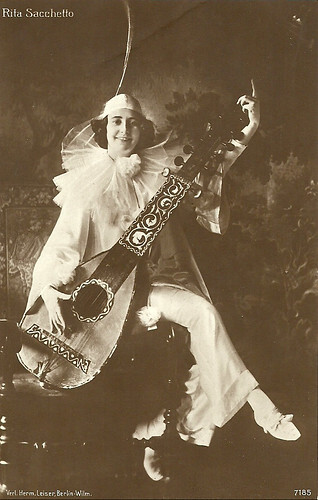
German Postcard by Verlag Hermann Leiser, Berlin,-Wilm., no. 7185. Collection: Didier Hanson.
German actress and dancer Rita Sacchetto (1879-1959) was in the 1910s a star of the Danish Nordisk Film Company.
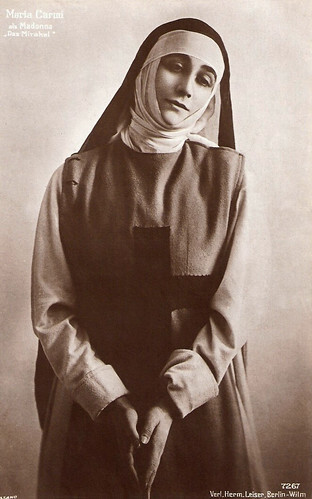
German postcard by Verleih Hermann Leiser, Berlin-Wilmersdorf, no. 7267. Maria Carmi as the Madonna in Das Mirakel/The Miracle (Max Reinhardt, 1913).
With her aristocratic air, her severe looks but also her sweet undertones, Italian silent film star and stage actress Maria Carmi (1880-1957) was the cinematic translation of the 19th century Primadonna. Later she became Princess Norina Matchabelli and was co-founder of the perfume company Prince Matchabelli.
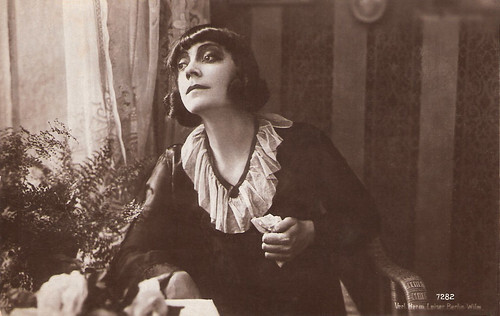
German postcard by Verl. Hermann Leiser, Berlin-Wilm., no. 7282. Asta Nielsen in Die weissen Rosen (Urban Gad, 1916).
Danish silent film actress Asta Nielsen (1881-1972), was one of the most popular leading ladies of the 1910s and one of the first international film stars. Of her 74 films between 1910 and 1932, seventy were made in Germany where she was known simply as "Die Asta". Noted for her large dark eyes, mask-like face and boyish figure, Nielsen most often portrayed strong-willed passionate women trapped by tragic consequences.
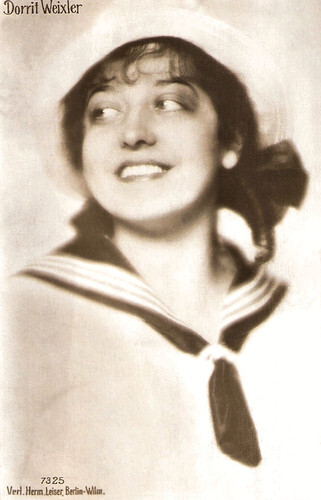
German postcard by Verl. Hermann Leiser, Berlin-Wilm., no. 7325.
German silent film actress Dorrit Weixler (1892-1916) anticipated such better-known comedy stars of the German cinema as Ossi Oswalda and Anny Ondra. The career of the bright and light comedienne was like a candle burning on both sides.
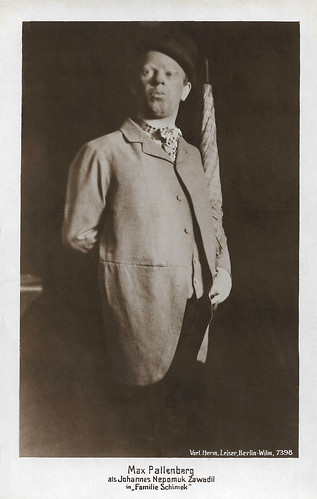
German postcard by Verlag Hermann Leiser, Berlin-Wilm., no. 7398. Photo: Max Pallenberg as Johannes Nepomuk Zawadil in the play 'Die Familie Schimek' by Gustav Kadelburg. In 1916 the play was perfomed by the Deutsches Theater Berlin under the direction of Emil Jannings.
Max Pallenberg (1877-1934) was an Austrian singer, actor and comedian. He was one of the most important comedians of his time and often played under the direction of Max Reinhardt. Although Pallenberg was successful as a stage comedian, he only incidentally accepted roles in films.
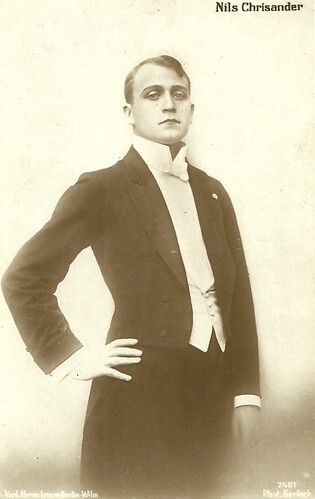
German postcard by Verlag Hermann Leiser, Berlin-Wilm., no. 7481. Photo: Gerlach.
Swedish actor and film director Nils Chrisander (1884-1947) made his first screen appearances in German and Swedish silent films in the mid-1910s. In 1916, he was the first Phantom of The Opera on the screen. Later he moved to Hollywood, where he also directed a few films.
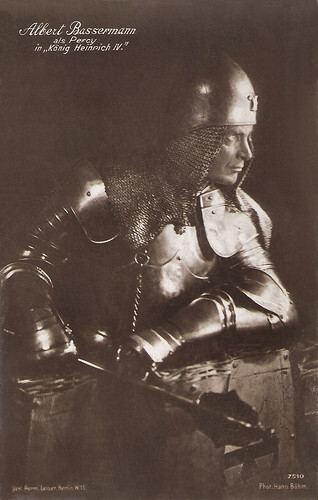
German postcard by Verlag Hermann Leiser, Berlin, no. 7510. Photo: Hans Böhm. Albert Bassermann as Percy in the play 'König Heinrich IV' (Henry IV).
Albert Bassermann (1867–1952) was one of the first great German stage actors who worked for the cinema. In 1933 he fled the Nazi regime and became an Oscar-nominated stage and film actor in the US.
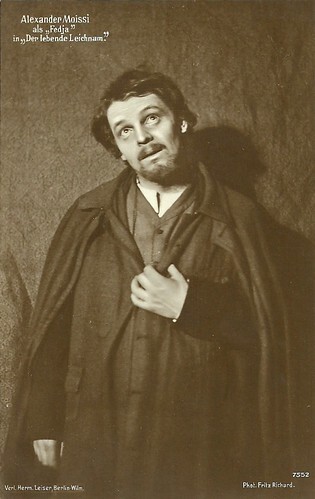
German postcard by Verlag Hermann Leiser, Berlin-Wilm., no. 7552. Photo: Fritz Richard. Alexander Moissi as Fedja in Leo Tolstoy's play 'Der lebende Leichnam' (The Living Corpse).
Albanian-Austrian Alexander Moissi (1879-1935) was one of the great European stage actors of the early-20th century. The attractive and charismatic women's idol also appeared in several silent and early sound films.
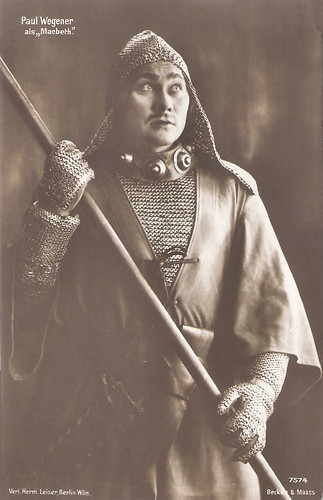
German postcard by Verlag Hermann Leiser, Berlin-Wilm., no. 7574. Photo: Becker & Maass. Caption: Paul Wegener as Macbeth. Publicity still for a stage production of 'Macbeth' by William Shakespeare.
German actor, writer, and film director Paul Wegener (1874-1948) is one of the true fathers of the horror and fantasy genre, particularly remembered for his three silent films centred around the Jewish legend of the Golem. Wegener was one of the pioneers of German cinema who realized the potential of the new medium and used the possibilities of cinematic trick photography as a method for presenting fantastic tales in a serious matter.
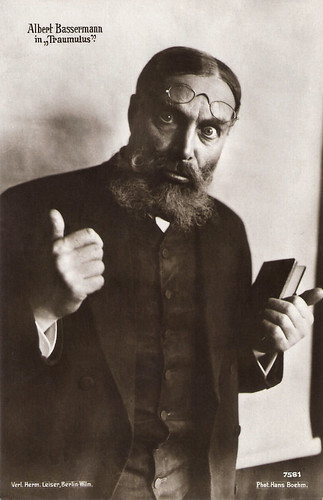
German postcard by Verl. Hermann Leiser, Berlin- Wilm., no. 7581. Photo: Hans Böhm. Albert Bassermann in the stage play 'Traumulus' by Arno Holz.
Albert Bassermann (1867–1952) was one of the first great German stage actors who worked for the cinema. In 1933 he fled the Nazi regime and became an Oscar-nominated stage and film actor in the US.
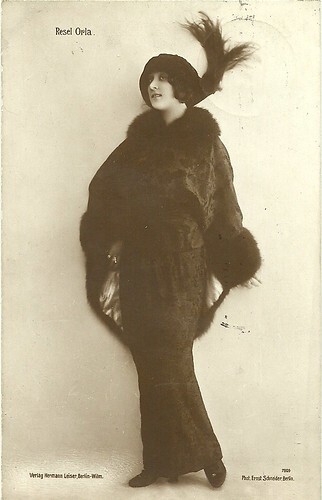
German postcard by Verlag Hermann Leiser, Berlin-Wilm., no. 7809. Photo: Ernst Schneider, Berlin. Collection: Didier Hanson.
Ressel Orla (1889-1931) was an actress of the German silent film who peaked in the late 1910s and early 1920s.
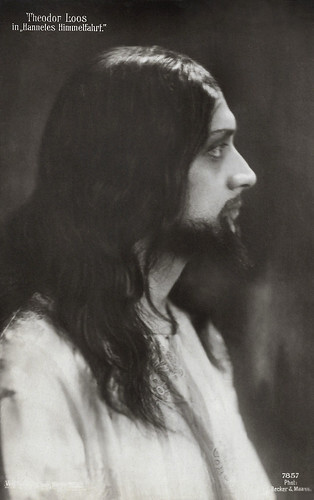
German postcard by Verlag Herm. Leiser, Berlin Wilm., no. 7857. Photo: Becker & Maass. Theodor Loos in the stage version of 'Hanneles Himmelfahrt' (Hannele's Ascension) (1913), written as a 'dream poem in two acts' by Gerhart Hauptmann, and first performed at the Königliches Schauspielhaus, Berlin, on 14 September 1893. The Deutsches Künstlertheater first performed this version in 1913, directed by Rudolf Rittner, with sets by Rochus Gliese and music by Max Marschalk, the elder brother of Hauptmann's later lover and wife Margarethe. The play had Theodor Loos as the teacher Gottwald and a young Anneliese Wagner aka Annalisa Wagner as young Hannele. Loos would play the same role in the eponymous silent film adaptation of 1922 by Urban Gad, and the sound version of 1934 by Thea von Harbou.
Theodor Loos (1883-1954) was a German stage and screen actor between the 1910s and the 1950s. He became famous for his parts in Fritz Lang’s German films.
To be continued tomorrow!
Source: Jean Ritsema (Ross Postcards).

German postcard by Verl. Herm. Leiser, Berlin-Wilm., no. 6053. Berlin. Photo: Atelier Binder, Berlin.
Albert Paulig (1873-1933) was a popular actor in the German silent cinema of the 1910s and 1920s.

German postcard by Verlag Herm. Leiser, no. 6120. Photo: Atelier Rembrandt, Berlin-Charlottenburg. Carl Clewing in the role of Leon, the kitchen help in a stage production of 'Weh' dem, der lügt!' by Franz Grillparzer.
German actor Carl Clewing (1884-1954) was an opera singer, the composer of the song 'Alle Tage ist kein Sonntag' (Not every day is a Sunday) and a Music professor in Berlin. During the years of the early cinema, he was much in demand as a film actor.

German postcard by Verlag Hermann Leiser, Berlin-Wilm., no. 6126. Photo: G. De Virgiliis.
Livio Pavanelli (1881-1958) was an Italian actor of the Italian and in particular German silent cinema. He also worked in Italian sound cinema as an actor and as a production manager. He directed four Italian films, both in the silent and the sound era.

German postcard by Verlag Hermann Leiser, Berlin-Wilm., no. 6139.
Prima ballerina, dancer, singer and actress Liane Haid (1895-2000) was the first film star of Austria. She was the epitome of the 'Süßes Wiener Mädel' (Sweet Viennese Girl) and from the mid-1910s on she made close to a hundred films.

German postcard by Verlag Hermann Leiser, Berlin-Wilm., no. 6184. Photo: Arthur Ziehm Film. Olaf Fjord in Ich hatt' einen Kameraden/I had a comrade (Conrad Wiene, 1926).
Olaf Fjord (1897-1945) was an Austrian film actor, director, and producer. He appeared in numerous Austrian, German, French, and Czech silent films.

German postcard by Verlag Hermann Leiser, Berlin-Wilm., no. 6253. Photo: Atelier Eberth, Berlin. Hilde Wörner in Die Berliner Range/The Berlin Urchin (Max Mack, 1913).
Hilde Wörner (1895-1963) was a German stage and film actress, who also worked as a filmmaker. She appeared mainly in silent films, had her own series and her most notable film was Ernst Lubitsch’s Die Flamme (1922).

German postcard by Verlag Hermann, Leiser, Berlin-Wilm., no. 6260. Photo: Kühn & Hitz, Baden-Baden.
German actor Carl de Vogt (1885-1970) was a kind of Indiana Jones in the silent films of Fritz Lang. De Vogt was also a popular singer and made several records in the 1920s.

German postcard by Verlag Herm. Leiser, Berlin-Wilm., no. 6325. Photo: Hegewald-Film.
Henry Stuart (1885-1942) was a British-Swiss actor, director and writer, who worked mostly in German silent cinema.

German postcard by Verl. Herm. Leiser, Berlin-Wilm., no. 6381. Photo: Rembrandt, Berlin.
Austrian actor Egon von Jordan (1902-1978) appeared in 85 films between 1923 and 1974. The elegant gentleman was a star in German and Austrian silent films, but later he merely appeared in supporting and small roles, including as the Austrian prime minister in the very successful Sissi trilogy.

German postcard by Verlag Herm. Leiser, Berlin-Wilm., no. 6456. Photo: Becker & Maass.
Theodor Loos (1883-1954) was a German stage and screen actor between the 1910s and the 1950s. He became famous for his parts in Fritz Lang’s German films.

German postcard by Hermann Leiser, Berlin-Wilm., no. 6465. Photo: Poetic-Film. Elisabeth Bergner in Doña Juana/Donna Juana (Paul Czinner, 1928).
The profoundly sensitive acting of Austrian-British actress Elisabeth Bergner (1897-1986) influenced the German cinema of the 1920s and 1930s. She specialised in a bisexual type that she portrayed in Der Geiger von Florenz and in other film and stage roles. Nazism forced her to go into exile, but she worked successfully in the West End and on Broadway.

German postcard by Verlag Herm. Leiser, Berlin, no. 6530. Photo: H. Manuel. Geraldine Farrar in the opera 'Tosca'.
American soprano opera singer and film actress Geraldine Farrar (1882-1967) was noted for her glamorous beauty, acting ability, and the timbre of her voice. Barely 20, she was already the toast of Berlin. Later at the Met in New York, she had a large following among young women, who were nicknamed ‘Gerry-flappers’. Farrar also starred in more than a dozen silent films from 1915 to 1920. She was married to and co-starred with Dutch matinee idol Lou Tellegen.

German postcard by Verlag Hermann Leiser, Berlin-Wilm., no. 6606. Photo: Ernst Schneider, Berlin. Collection: Didier Hanson.
Sexy German dancer and film actress La Jana (1905-1940) was the most popular showgirl in Berlin in the 1930s. She appeared in 25 European films, often dancing in exotic costumes. In 1940, she suddenly died of pneumonia and pleurisy.

German postcard by Verlag Herm. Leiser, Berlin-Wilm, no. 6656. Photo: Poetic-Film. Elisabeth Bergner in Fräulein Else/Miss Else (Paul Czinner, 1929), based on the play by Arthur Schnitzler.
The profoundly sensitive acting of Austrian-British actress Elisabeth Bergner (1897-1986) influenced the German cinema of the 1920s and 1930s. She specialized in a bisexual type that she portrayed in Der Geiger von Florenz and in other film and stage roles. Nazism forced her to go into exile, but she worked successfully in the West End and on Broadway.

German postcard by Verlag Herm. Leiser, Berlin-Wilm., no. 6741. Photo: Trude Geiringer & Dora Horovitz, Wien.

German postcard by Verlag Herm. Leiser, Berlin-Wilm., no. 6895. Photo: Rembrandt Atelier.
Austrian actress Helene Thimig (1889-1974) was an important stage performer during the Weimar Republic. She came from a renowned acting family: she was the daughter of Hugo Thimig and the sister of Hermann Thimig and Hans Thimig. She fled the Nazis with her later husband, theatre producer/director Max Reinhardt, sought refuge in Hollywood, and appeared in 18 Hollywood films. After the war, she returned to Vienna where she had a prolific stage career but only sporadically appeared in films.

German Postcard by Verlag Hermann Leiser, Berlin-Wilm., no. 6990. Photo: Gerlach & Co. Collection: Didier Hanson.
German actress and dancer Rita Sacchetto (1879-1959) was in the 1910s a star of the Danish Nordisk Film Company.

German postcard by Verlag Hermann Leiser, Berlin-Wilm., no. 7132. Photo: Gerlach.
'Modern' American actress Fern Andra (1893-1974) became one of the most popular film stars of the German cinema in the 1910s and early 1920s. In her films, she mastered tightrope, riding horses without a saddle, driving cars and motorcycles, bobsleighing, and even boxing.

German Postcard by Verlag Hermann Leiser, Berlin,-Wilm., no. 7185. Collection: Didier Hanson.
German actress and dancer Rita Sacchetto (1879-1959) was in the 1910s a star of the Danish Nordisk Film Company.

German postcard by Verleih Hermann Leiser, Berlin-Wilmersdorf, no. 7267. Maria Carmi as the Madonna in Das Mirakel/The Miracle (Max Reinhardt, 1913).
With her aristocratic air, her severe looks but also her sweet undertones, Italian silent film star and stage actress Maria Carmi (1880-1957) was the cinematic translation of the 19th century Primadonna. Later she became Princess Norina Matchabelli and was co-founder of the perfume company Prince Matchabelli.

German postcard by Verl. Hermann Leiser, Berlin-Wilm., no. 7282. Asta Nielsen in Die weissen Rosen (Urban Gad, 1916).
Danish silent film actress Asta Nielsen (1881-1972), was one of the most popular leading ladies of the 1910s and one of the first international film stars. Of her 74 films between 1910 and 1932, seventy were made in Germany where she was known simply as "Die Asta". Noted for her large dark eyes, mask-like face and boyish figure, Nielsen most often portrayed strong-willed passionate women trapped by tragic consequences.

German postcard by Verl. Hermann Leiser, Berlin-Wilm., no. 7325.
German silent film actress Dorrit Weixler (1892-1916) anticipated such better-known comedy stars of the German cinema as Ossi Oswalda and Anny Ondra. The career of the bright and light comedienne was like a candle burning on both sides.

German postcard by Verlag Hermann Leiser, Berlin-Wilm., no. 7398. Photo: Max Pallenberg as Johannes Nepomuk Zawadil in the play 'Die Familie Schimek' by Gustav Kadelburg. In 1916 the play was perfomed by the Deutsches Theater Berlin under the direction of Emil Jannings.
Max Pallenberg (1877-1934) was an Austrian singer, actor and comedian. He was one of the most important comedians of his time and often played under the direction of Max Reinhardt. Although Pallenberg was successful as a stage comedian, he only incidentally accepted roles in films.

German postcard by Verlag Hermann Leiser, Berlin-Wilm., no. 7481. Photo: Gerlach.
Swedish actor and film director Nils Chrisander (1884-1947) made his first screen appearances in German and Swedish silent films in the mid-1910s. In 1916, he was the first Phantom of The Opera on the screen. Later he moved to Hollywood, where he also directed a few films.

German postcard by Verlag Hermann Leiser, Berlin, no. 7510. Photo: Hans Böhm. Albert Bassermann as Percy in the play 'König Heinrich IV' (Henry IV).
Albert Bassermann (1867–1952) was one of the first great German stage actors who worked for the cinema. In 1933 he fled the Nazi regime and became an Oscar-nominated stage and film actor in the US.

German postcard by Verlag Hermann Leiser, Berlin-Wilm., no. 7552. Photo: Fritz Richard. Alexander Moissi as Fedja in Leo Tolstoy's play 'Der lebende Leichnam' (The Living Corpse).
Albanian-Austrian Alexander Moissi (1879-1935) was one of the great European stage actors of the early-20th century. The attractive and charismatic women's idol also appeared in several silent and early sound films.

German postcard by Verlag Hermann Leiser, Berlin-Wilm., no. 7574. Photo: Becker & Maass. Caption: Paul Wegener as Macbeth. Publicity still for a stage production of 'Macbeth' by William Shakespeare.
German actor, writer, and film director Paul Wegener (1874-1948) is one of the true fathers of the horror and fantasy genre, particularly remembered for his three silent films centred around the Jewish legend of the Golem. Wegener was one of the pioneers of German cinema who realized the potential of the new medium and used the possibilities of cinematic trick photography as a method for presenting fantastic tales in a serious matter.

German postcard by Verl. Hermann Leiser, Berlin- Wilm., no. 7581. Photo: Hans Böhm. Albert Bassermann in the stage play 'Traumulus' by Arno Holz.
Albert Bassermann (1867–1952) was one of the first great German stage actors who worked for the cinema. In 1933 he fled the Nazi regime and became an Oscar-nominated stage and film actor in the US.

German postcard by Verlag Hermann Leiser, Berlin-Wilm., no. 7809. Photo: Ernst Schneider, Berlin. Collection: Didier Hanson.
Ressel Orla (1889-1931) was an actress of the German silent film who peaked in the late 1910s and early 1920s.

German postcard by Verlag Herm. Leiser, Berlin Wilm., no. 7857. Photo: Becker & Maass. Theodor Loos in the stage version of 'Hanneles Himmelfahrt' (Hannele's Ascension) (1913), written as a 'dream poem in two acts' by Gerhart Hauptmann, and first performed at the Königliches Schauspielhaus, Berlin, on 14 September 1893. The Deutsches Künstlertheater first performed this version in 1913, directed by Rudolf Rittner, with sets by Rochus Gliese and music by Max Marschalk, the elder brother of Hauptmann's later lover and wife Margarethe. The play had Theodor Loos as the teacher Gottwald and a young Anneliese Wagner aka Annalisa Wagner as young Hannele. Loos would play the same role in the eponymous silent film adaptation of 1922 by Urban Gad, and the sound version of 1934 by Thea von Harbou.
Theodor Loos (1883-1954) was a German stage and screen actor between the 1910s and the 1950s. He became famous for his parts in Fritz Lang’s German films.
To be continued tomorrow!
Source: Jean Ritsema (Ross Postcards).
Published on December 27, 2023 22:00
December 26, 2023
Verlag Hermann Leiser (3)
In our third post about Verlag Hermann Leiser, a Berlin publishing house that was active around the 1910s, we focus today on the numbers 4001 - 6000. Jean Ritsma of the website Ross Postcards made a catalogue of the Leiser star postcards. In a series of posts, we will present you this week our selection of our favourite Leiser postcards.
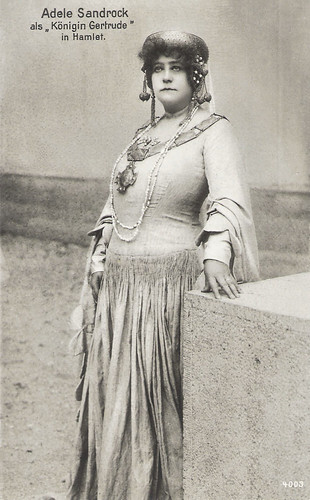
German Postcard by Verl. Hermann Leiser, Berlin, no. 4003. Photo: Photo-Arbeit, München (Munich). Adele Sandrock as Queen Gertrude in a stage production of 'Hamlet'.
Grand German-Dutch actress Adele Sandrock (1863-1937) had a successful theatrical career all over Europe. In Vienna, she had a stormy affair with the famous playwright Arthur Schnitzler and enjoyed triumphs as the diva of the modern playwrights. In the 1910s she became one of the first German film stars. After the introduction of sound, she emerged as a witty comedienne. She excelled as the intimidating elderly dragon, who could also be surprisingly funny and tactful.
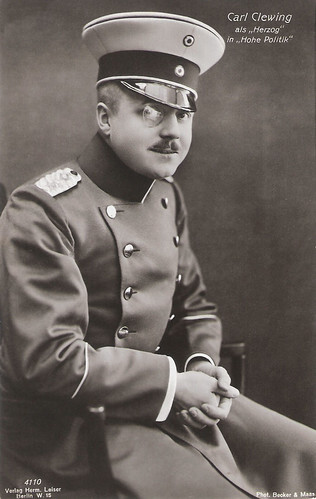
German postcard by Verlag Hermann Leiser, Berlin-Wilm., no. 4110. Photo: Becker & Maass. Carl Clewing in the stage play 'Hohe Politik' (High Politics) by Julius Rosen.
German actor Carl Clewing (1884-1954) was an opera singer, the composer of the song 'Alle Tage ist kein Sonntag' (Not every day is a Sunday) and a Music professor in Berlin During the years of the early cinema he was much in demand as a film actor.
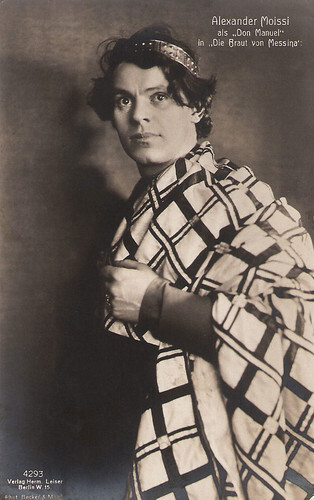
German postcard by Verlag Hermann Leiser, Berlin-W, no. 4293. Photo: Becker & Maass. Alexander Moissi as Don Manuel in a stage production of 'Die Braut von Messina' (The Bride of Messina) by Friedrich Schiller.
Albanian-Austrian Alexander Moissi (1879-1935), born as Aleksandër Moisiu, was one of the great European stage actors of the early 20th century. The attractive and charismatic women's idol also appeared in several silent and early sound films.
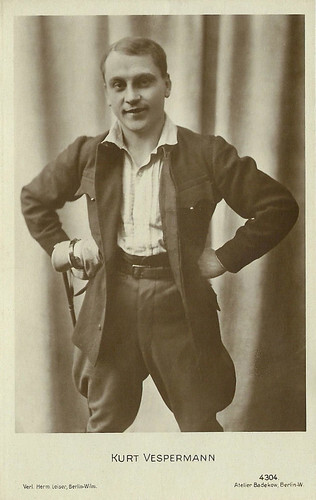
German postcard by Verlag Hermann Leiser, Berlin-Wilm., no. 4304. Photo: Atelier Badekow, Berlin-W. Collection: Didier Hanson.
German character actor Kurt Vespermann (1887-1957) was active in nearly 200 films between 1915 and 1957.
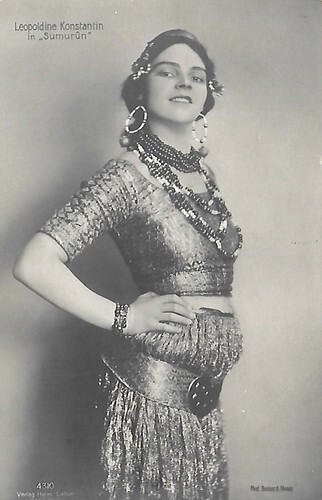
German postcard by Verlag Hermann Leiser, no. 4310. Photo: Becker & Maass. Leopoldine Konstantin in Sumurûn (Max Reinhardt, 1910). Collection: Didier Hanson.
Leopoldine Konstantin (1886-1965) was a famous Austrian theatre and film character actress, who worked for years with director Max Reinhardt. She played Claude Rains' dominant mother in Alfred Hitchcock’s classic Notorious (1946). It was her sole Hollywood role.
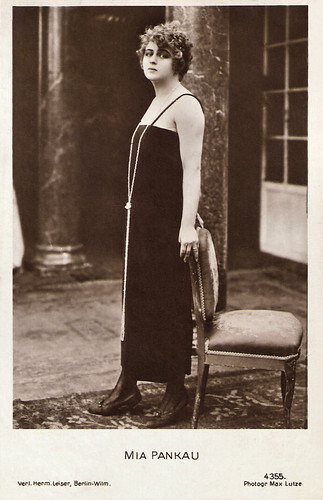
German postcard by Verlag Hermann Leiser, Berlin-Wilm., no. 4355. Photo: Max Lutze.
Mia Pankau (1891-1974) was a German actress of the silent cinema. Most of her films were directed by her husband, Jaap Speyer.
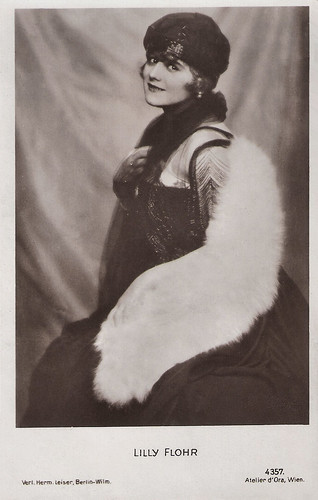
German postcard by Verlag Hermann Leiser, Berlin-Wilm., no. 4357. Photo: Atelier d'Ora, Wien.
Austrian film star Lilly Flohr (1893-1978) was a busy actress, soubrette, cabaret artist and chanson singer on stage. From 1918 on she starred in 25 silent films.
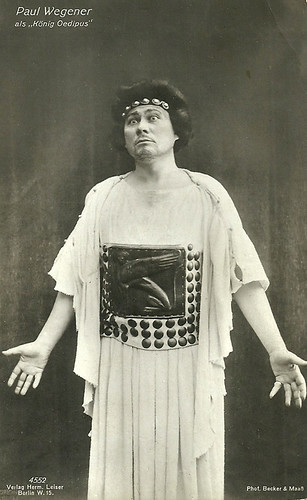
German postcard by Verlag Hermann Leiser, Berlin, no. 4552. Photo: Becker & Maass. Caption: Paul Wegener as King Oedipus in 'Oedipus Rex' (1910), directed by Max Reinhardt.
'Oedipus Rex', Sophocles's classic tragedy, directed by Max Reinhardt in a translation by Hugo von Hofmannsthal, was first performed in 1910 at a Summer festival in Munich and in the Fall in a circus arena in Berlin. Stars were Paul Wegener as Oedipus and Tilla Durieux as Jocasta, though some considered the masses of extras performing the Thebans to be the real stars. Emily Bilski writes in 'Berlin Metropolis: Jews and the New Culture, 1890-1918': "Oedipus was the first major theatre-in-the-round production in modern times that featured masses of actors performing for a mass audience."
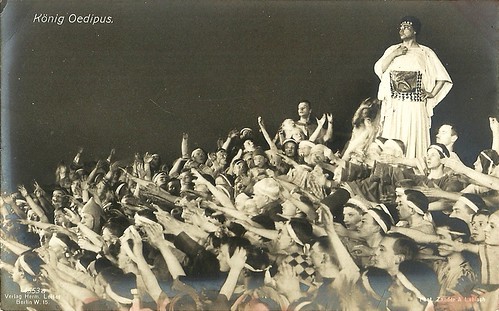
German postcard by Verlag Hermann Leiser, Berlin-W., no. 4553 a. Photo: Zander & Labisch, Berlin. Paul Wegener in 'König Oedipus' (1910). Caption: King Oedipus.
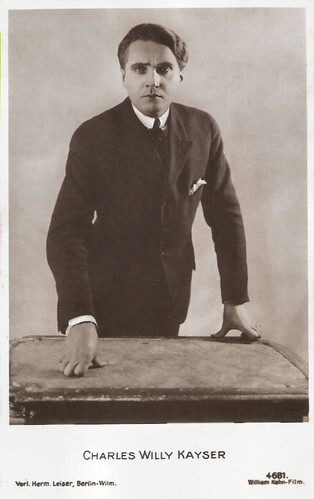
German postcard by Verlag Hermann Leiser, Berlin-Wilm., no. 4681. Photo: William Kahn-Film. Charles Willy Kayser in Dämon der Welt. 1. Das Schicksal des Edgar Morton/Demon of the world, part 1: The Fate of Edgar Morton (Rudolf Del Zopp, Siegfried Dessauer, 1919).
German actor Charles Willy Kayser (1881-1942) had a remarkable career in the silent cinema. However, today he is little known, while many of his films are considered lost now and there is little information about his work.
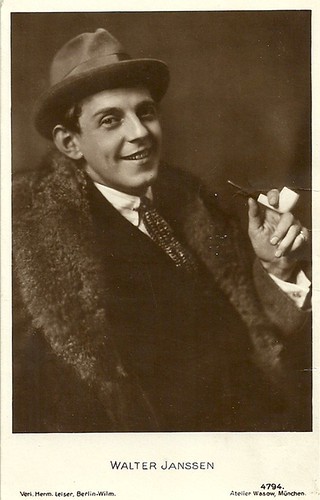
German postcard by Verlag Hermann Leiser, Berlin, no. 4794. Photo: Atelier Wasow, München.
Walter Janssen (1887-1976), originally Walter Philipp Janßen, was a German stage and screen actor and film director. Between the late 1910s and the late 1950s, Walter Janssen had a very prolific acting career in German cinema.
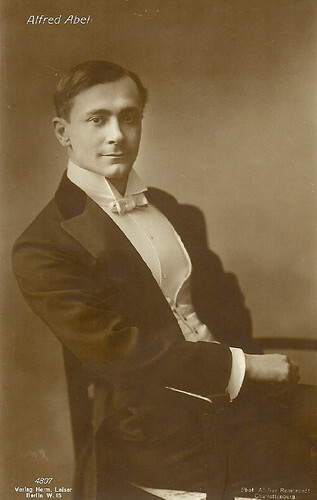
German postcard by Verlag Hermann Leiser, no. 4807. Photo: Atelier Rembrandt, Charlottenburg. Collection: Didier Hanson.
Alfred Abel (1879-1937), best known as the industrial Fredersen in Fritz Lang's Metropolis, played in over 140 silent and sound films between 1913 and 1938.
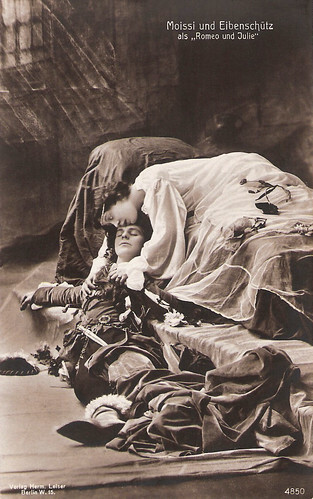
German postcard by Verlag Hermann Leiser, Berlin-W., no. 4850. Photo: Alexander Moissi and Camilla Eibenschütz in a 1907 production of the stage play 'Romeo und Julie' (Romeo and Juliet) by William Shakespeare.
Albanian-Austrian Alexander Moissi (1879-1935) was one of the great European stage actors of the early 20th century. The attractive and charismatic women's idol also appeared in several silent and early sound films.
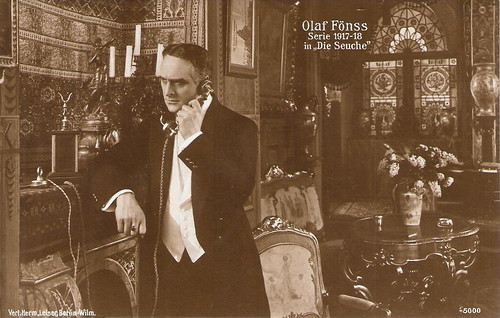
German postcard by Verlag Hermann Leiser, Berlin-Wilmersdorf, no. 5000. Olaf Fønss in the Danish film Laegen/Pesten (Fritz Rasmussen, 1917). The German title was Die Seuche (The Plague). The film was written and directed by Fritz Rasmussen for Dansk Film Co. and released in Denmark in 1918.
Olaf Fønss (1882-1949) was one of Denmark and Germany's biggest stars of the silent film era. He also worked as a film director, producer and censor.
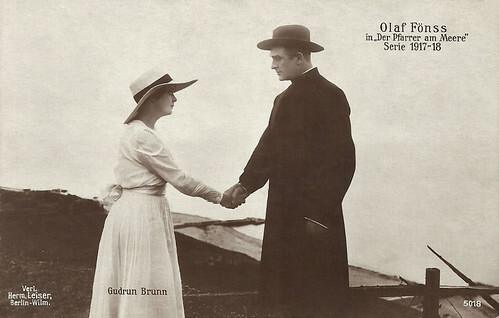
German postcard by Verlag Hermann Leiser, Berlin, no. 5018. Olaf Fønss and Gudrun Brunn in the Danish film Praesten fra havet (Fritz Magnussen 1918), released in Germany as Der Pfarrer am Meer (The Priest at the Sea).
Olaf Fønss (1882-1949) was one of Denmark and Germany's biggest stars of the silent film era. He also worked as a film director, producer and censor.
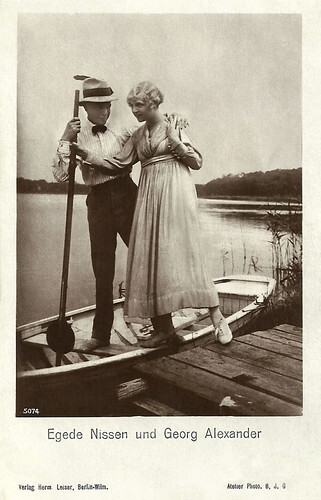
German postcard by Verlag Hermann Leiser, Berlin, no. 5074. Photo: Atelier B.J.G. Aud or Gerd Egede-Nissen and Georg Alexander .
Aud Egede Nissen and Georg Alexander played in many films together in the 1910s and were married from 1915 to 1924. Norwegian film actress Aud Egede-Nissen (1893-1974) was a star of the German silent cinema. In the 1910s, she produced dozens of her own films. In the 1930s she returned to Norway, where she appeared in some films and acted mainly on stage.
Georg Alexander (1888-1945) was a German actor, director and producer. He belongs to the busiest actors and his career continued smoothly till his death.
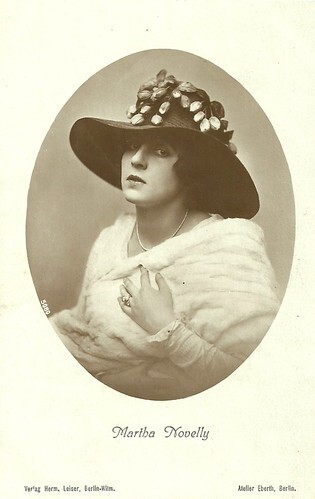
German postcard by Verlag Hermann Leiser, Berlin-Wilm., no. 5080. Photo: Atelier Eberth, Berlin.
Martha Novelly (1889-1972) was a German stage and screen actress who peaked in German silent films of the late 1910s.
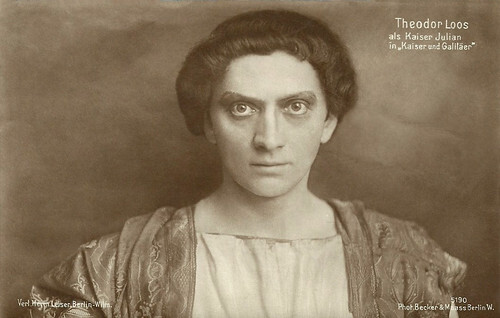
German postcard by Verlag Hermann Leiser, Berlin-Wilm., no. 5190. Photo: Becker & Maass, Berlin. Theodor Loos as Emperor Julian in the play 'Kaiser und Galiläer' (Emperor and Galilean) by Henrik Ibsen.
Theodor Loos (1883-1954) was a German stage and screen actor between the 1910s and the 1950s. He became famous for his parts in Fritz Lang’s German films.
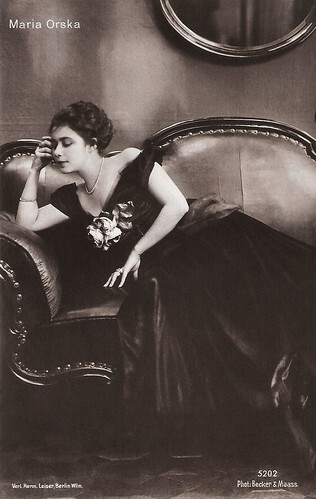
German postcard by Verlag Hermann Leiser, Berlin-Wilm., no. 5202. Photo: Becker & Maass.
Maria Orska (1893-1930) was a Russian-Jewish actress on the German stage and screen in the 1910s and 1920s.
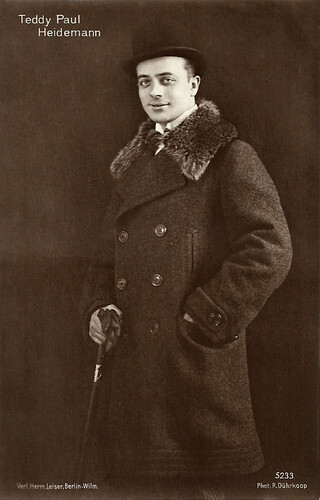
German postcard by Verlag Hermann Leiser, Berlin-Wilm., no. 5233. Photo: R. Dührkoop.
Paul Heidemann (1884-1968) was a German stage and screen actor, and also a film director and producer. In the silent period, he was famous for his comical parts.
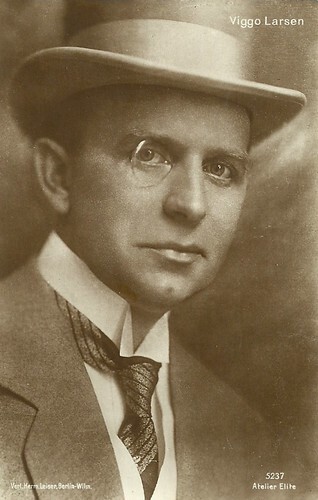
German postcard by Verlag Hermann Leiser, Berlin-Wilm., no. 5237. Photo: Atelier Elite.
Viggo Larsen (1880-1957) was a Danish actor, director, scriptwriter and producer. He was one of the pioneers in film history. With Wanda Treumann he directed and produced many German films of the 1910s.
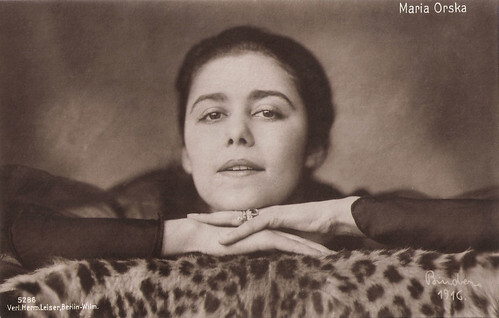
German postcard by Verlag Hermann Leiser, Berlin-Wilm., no. 5286. Photo: Alex Binder, 1916.
Maria Orska (1893-1930) was a Russian-Jewish actress on the German stage and screen in the 1910s and 1920s.
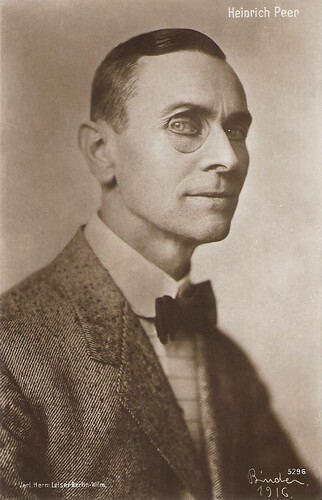
German postcard by Verlag Hermann Leiser, Berlin. no. 5296. Photo: Alex Binder, Berlin, 1916.
Austrian stage and film actor Heinrich Peer (1867–1927) belonged to the pioneers of German cinema and appeared in more than a hundred films between 1911 and 1927. The tall, thin actor with the distinctive, almost sinister face often played supporting parts in adventure and detective films but also played in melodramas and historical films.
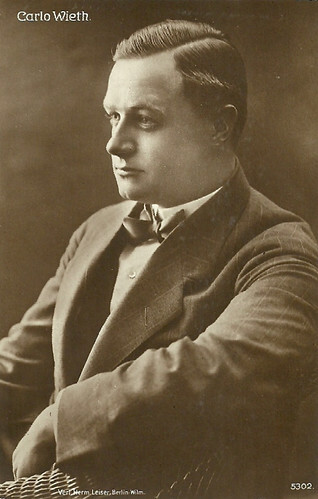
German postcard by Verlag Hermann Leiser, Berlin-Wilm., no. 5302.
Carlo Wieth (1885-1943) was a Danish actor, who starred in Danish and Swedish silent cinema of the 1910s and early 1920s, often paired with his then-wife Clara (Pontoppidan) Wieth.
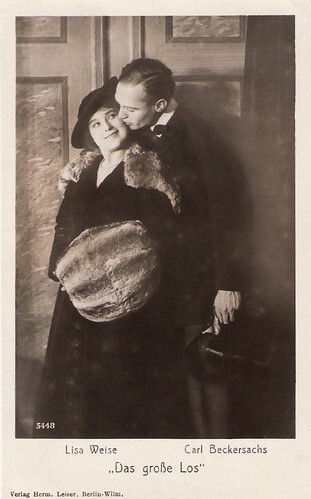
German postcard by Verlag Hermann Leiser, Berlin-Wilm., no. 5448. Photo: Lisa Weise and Karl Beckersachs in Das grosse Los/The Big Prize (Friedrich Zelnik, 1917).
German actress Lisa Weise (?-1952) starred in silent films of the 1910s. Most of her films were directed by Friedrich Zelnik and often her film partner was Karl Beckersachs .
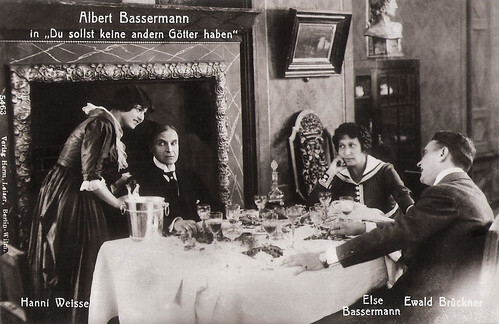
German postcard by Verlag Hermann Leiser, Berlin-Wilm., no. 5463. Photo: Albert Bassermann , Hanni Weisse , Else Bassermann and Ewald Brückner in Du sollst keine anderen Götter haben/Thou shalt have no other gods (Adolf Gärtner, 1917).
Albert Bassermann (1867–1952) was one of the first great German stage actors who worked for the cinema. In 1933 he fled the Nazi regime and became an Oscar-nominated stage and film actor in the US.
German actress Hanni Weisse (1892-1967) belonged to the great film divas of the early German silent film. She was able to maintain her stardom till the 1920s.
Else Bassermann , née Elisabeth Sara Schiff (1878-1961) was a German stage and screen actress, who in 1908 married renowned stage actor Albert Bassermann and often performed together with him on stage. When he started to play in the film, she accompanied him.
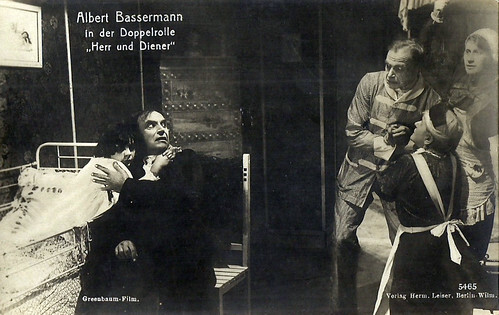
German postcard by Verlag Hermann Leiser, Berlin, no. 5465. Photo: Greenbaum-Film. Albert Bassermann in a dual role in the German silent film Herr und Diener/Master and Servant (Adolf Gärtner, 1917).
A reputed professor ( Albert Bassermann ) hires a servant (Bassermann) for a world trip. The servant is his spitting image. When the professor is lamed, the servant trades places with him. Nobody discovers the fraud, till one day the professor's maid ( Else Bassermann ) unmasks the culprit. The script was written by Else Basssermann under the pseudonym of Hans Hennings. On this postcard, Else Bassermann can be seen on the extreme right.
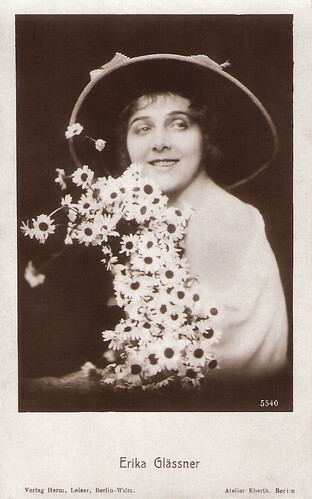
German postcard by Hermann Leiser, Berlin-Wilm, no. 5540. Photo: Atelier Eberth, Berlin.
Cute actress Erika Glässner (1890-1959) starred as a backfisch and later as a cheeky temptress in many German films of the silent era. From 1915 till 1952 she appeared in some 80 films.
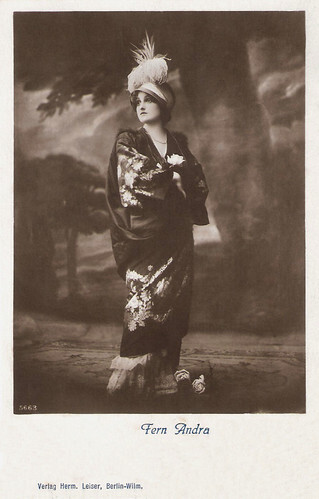
German postcard by Verlag Hermann Leiser, Berlin, no. 5663.
'Modern' American actress Fern Andra (1893-1974) became one of the most popular film stars of the German cinema in the 1910s and early 1920s. In her films, she mastered tight roping, riding a horse without a saddle, driving cars and motorcycles, bobsleighing, and even boxing.
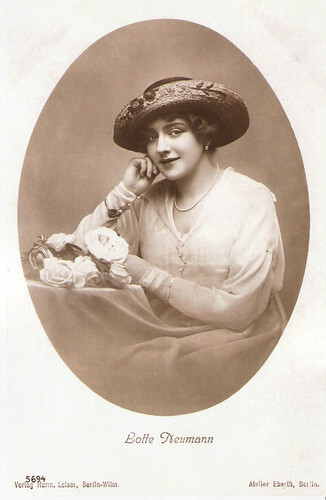
German postcard by Verlag Hermann Leiser, Berlin-Wilm., no. 5694. Photo: Atelier Eberth, Berlin.
Lotte Neumann (1896-1977) was one of the most successful actresses in the early days of the German silent cinema. She also worked as a screenwriter and producer.
To be continued tomorrow!
Source: Jean Ritsema (Ross Postcards).

German Postcard by Verl. Hermann Leiser, Berlin, no. 4003. Photo: Photo-Arbeit, München (Munich). Adele Sandrock as Queen Gertrude in a stage production of 'Hamlet'.
Grand German-Dutch actress Adele Sandrock (1863-1937) had a successful theatrical career all over Europe. In Vienna, she had a stormy affair with the famous playwright Arthur Schnitzler and enjoyed triumphs as the diva of the modern playwrights. In the 1910s she became one of the first German film stars. After the introduction of sound, she emerged as a witty comedienne. She excelled as the intimidating elderly dragon, who could also be surprisingly funny and tactful.

German postcard by Verlag Hermann Leiser, Berlin-Wilm., no. 4110. Photo: Becker & Maass. Carl Clewing in the stage play 'Hohe Politik' (High Politics) by Julius Rosen.
German actor Carl Clewing (1884-1954) was an opera singer, the composer of the song 'Alle Tage ist kein Sonntag' (Not every day is a Sunday) and a Music professor in Berlin During the years of the early cinema he was much in demand as a film actor.

German postcard by Verlag Hermann Leiser, Berlin-W, no. 4293. Photo: Becker & Maass. Alexander Moissi as Don Manuel in a stage production of 'Die Braut von Messina' (The Bride of Messina) by Friedrich Schiller.
Albanian-Austrian Alexander Moissi (1879-1935), born as Aleksandër Moisiu, was one of the great European stage actors of the early 20th century. The attractive and charismatic women's idol also appeared in several silent and early sound films.

German postcard by Verlag Hermann Leiser, Berlin-Wilm., no. 4304. Photo: Atelier Badekow, Berlin-W. Collection: Didier Hanson.
German character actor Kurt Vespermann (1887-1957) was active in nearly 200 films between 1915 and 1957.

German postcard by Verlag Hermann Leiser, no. 4310. Photo: Becker & Maass. Leopoldine Konstantin in Sumurûn (Max Reinhardt, 1910). Collection: Didier Hanson.
Leopoldine Konstantin (1886-1965) was a famous Austrian theatre and film character actress, who worked for years with director Max Reinhardt. She played Claude Rains' dominant mother in Alfred Hitchcock’s classic Notorious (1946). It was her sole Hollywood role.

German postcard by Verlag Hermann Leiser, Berlin-Wilm., no. 4355. Photo: Max Lutze.
Mia Pankau (1891-1974) was a German actress of the silent cinema. Most of her films were directed by her husband, Jaap Speyer.

German postcard by Verlag Hermann Leiser, Berlin-Wilm., no. 4357. Photo: Atelier d'Ora, Wien.
Austrian film star Lilly Flohr (1893-1978) was a busy actress, soubrette, cabaret artist and chanson singer on stage. From 1918 on she starred in 25 silent films.

German postcard by Verlag Hermann Leiser, Berlin, no. 4552. Photo: Becker & Maass. Caption: Paul Wegener as King Oedipus in 'Oedipus Rex' (1910), directed by Max Reinhardt.
'Oedipus Rex', Sophocles's classic tragedy, directed by Max Reinhardt in a translation by Hugo von Hofmannsthal, was first performed in 1910 at a Summer festival in Munich and in the Fall in a circus arena in Berlin. Stars were Paul Wegener as Oedipus and Tilla Durieux as Jocasta, though some considered the masses of extras performing the Thebans to be the real stars. Emily Bilski writes in 'Berlin Metropolis: Jews and the New Culture, 1890-1918': "Oedipus was the first major theatre-in-the-round production in modern times that featured masses of actors performing for a mass audience."

German postcard by Verlag Hermann Leiser, Berlin-W., no. 4553 a. Photo: Zander & Labisch, Berlin. Paul Wegener in 'König Oedipus' (1910). Caption: King Oedipus.

German postcard by Verlag Hermann Leiser, Berlin-Wilm., no. 4681. Photo: William Kahn-Film. Charles Willy Kayser in Dämon der Welt. 1. Das Schicksal des Edgar Morton/Demon of the world, part 1: The Fate of Edgar Morton (Rudolf Del Zopp, Siegfried Dessauer, 1919).
German actor Charles Willy Kayser (1881-1942) had a remarkable career in the silent cinema. However, today he is little known, while many of his films are considered lost now and there is little information about his work.

German postcard by Verlag Hermann Leiser, Berlin, no. 4794. Photo: Atelier Wasow, München.
Walter Janssen (1887-1976), originally Walter Philipp Janßen, was a German stage and screen actor and film director. Between the late 1910s and the late 1950s, Walter Janssen had a very prolific acting career in German cinema.

German postcard by Verlag Hermann Leiser, no. 4807. Photo: Atelier Rembrandt, Charlottenburg. Collection: Didier Hanson.
Alfred Abel (1879-1937), best known as the industrial Fredersen in Fritz Lang's Metropolis, played in over 140 silent and sound films between 1913 and 1938.

German postcard by Verlag Hermann Leiser, Berlin-W., no. 4850. Photo: Alexander Moissi and Camilla Eibenschütz in a 1907 production of the stage play 'Romeo und Julie' (Romeo and Juliet) by William Shakespeare.
Albanian-Austrian Alexander Moissi (1879-1935) was one of the great European stage actors of the early 20th century. The attractive and charismatic women's idol also appeared in several silent and early sound films.

German postcard by Verlag Hermann Leiser, Berlin-Wilmersdorf, no. 5000. Olaf Fønss in the Danish film Laegen/Pesten (Fritz Rasmussen, 1917). The German title was Die Seuche (The Plague). The film was written and directed by Fritz Rasmussen for Dansk Film Co. and released in Denmark in 1918.
Olaf Fønss (1882-1949) was one of Denmark and Germany's biggest stars of the silent film era. He also worked as a film director, producer and censor.

German postcard by Verlag Hermann Leiser, Berlin, no. 5018. Olaf Fønss and Gudrun Brunn in the Danish film Praesten fra havet (Fritz Magnussen 1918), released in Germany as Der Pfarrer am Meer (The Priest at the Sea).
Olaf Fønss (1882-1949) was one of Denmark and Germany's biggest stars of the silent film era. He also worked as a film director, producer and censor.

German postcard by Verlag Hermann Leiser, Berlin, no. 5074. Photo: Atelier B.J.G. Aud or Gerd Egede-Nissen and Georg Alexander .
Aud Egede Nissen and Georg Alexander played in many films together in the 1910s and were married from 1915 to 1924. Norwegian film actress Aud Egede-Nissen (1893-1974) was a star of the German silent cinema. In the 1910s, she produced dozens of her own films. In the 1930s she returned to Norway, where she appeared in some films and acted mainly on stage.
Georg Alexander (1888-1945) was a German actor, director and producer. He belongs to the busiest actors and his career continued smoothly till his death.

German postcard by Verlag Hermann Leiser, Berlin-Wilm., no. 5080. Photo: Atelier Eberth, Berlin.
Martha Novelly (1889-1972) was a German stage and screen actress who peaked in German silent films of the late 1910s.

German postcard by Verlag Hermann Leiser, Berlin-Wilm., no. 5190. Photo: Becker & Maass, Berlin. Theodor Loos as Emperor Julian in the play 'Kaiser und Galiläer' (Emperor and Galilean) by Henrik Ibsen.
Theodor Loos (1883-1954) was a German stage and screen actor between the 1910s and the 1950s. He became famous for his parts in Fritz Lang’s German films.

German postcard by Verlag Hermann Leiser, Berlin-Wilm., no. 5202. Photo: Becker & Maass.
Maria Orska (1893-1930) was a Russian-Jewish actress on the German stage and screen in the 1910s and 1920s.

German postcard by Verlag Hermann Leiser, Berlin-Wilm., no. 5233. Photo: R. Dührkoop.
Paul Heidemann (1884-1968) was a German stage and screen actor, and also a film director and producer. In the silent period, he was famous for his comical parts.

German postcard by Verlag Hermann Leiser, Berlin-Wilm., no. 5237. Photo: Atelier Elite.
Viggo Larsen (1880-1957) was a Danish actor, director, scriptwriter and producer. He was one of the pioneers in film history. With Wanda Treumann he directed and produced many German films of the 1910s.

German postcard by Verlag Hermann Leiser, Berlin-Wilm., no. 5286. Photo: Alex Binder, 1916.
Maria Orska (1893-1930) was a Russian-Jewish actress on the German stage and screen in the 1910s and 1920s.

German postcard by Verlag Hermann Leiser, Berlin. no. 5296. Photo: Alex Binder, Berlin, 1916.
Austrian stage and film actor Heinrich Peer (1867–1927) belonged to the pioneers of German cinema and appeared in more than a hundred films between 1911 and 1927. The tall, thin actor with the distinctive, almost sinister face often played supporting parts in adventure and detective films but also played in melodramas and historical films.

German postcard by Verlag Hermann Leiser, Berlin-Wilm., no. 5302.
Carlo Wieth (1885-1943) was a Danish actor, who starred in Danish and Swedish silent cinema of the 1910s and early 1920s, often paired with his then-wife Clara (Pontoppidan) Wieth.

German postcard by Verlag Hermann Leiser, Berlin-Wilm., no. 5448. Photo: Lisa Weise and Karl Beckersachs in Das grosse Los/The Big Prize (Friedrich Zelnik, 1917).
German actress Lisa Weise (?-1952) starred in silent films of the 1910s. Most of her films were directed by Friedrich Zelnik and often her film partner was Karl Beckersachs .

German postcard by Verlag Hermann Leiser, Berlin-Wilm., no. 5463. Photo: Albert Bassermann , Hanni Weisse , Else Bassermann and Ewald Brückner in Du sollst keine anderen Götter haben/Thou shalt have no other gods (Adolf Gärtner, 1917).
Albert Bassermann (1867–1952) was one of the first great German stage actors who worked for the cinema. In 1933 he fled the Nazi regime and became an Oscar-nominated stage and film actor in the US.
German actress Hanni Weisse (1892-1967) belonged to the great film divas of the early German silent film. She was able to maintain her stardom till the 1920s.
Else Bassermann , née Elisabeth Sara Schiff (1878-1961) was a German stage and screen actress, who in 1908 married renowned stage actor Albert Bassermann and often performed together with him on stage. When he started to play in the film, she accompanied him.

German postcard by Verlag Hermann Leiser, Berlin, no. 5465. Photo: Greenbaum-Film. Albert Bassermann in a dual role in the German silent film Herr und Diener/Master and Servant (Adolf Gärtner, 1917).
A reputed professor ( Albert Bassermann ) hires a servant (Bassermann) for a world trip. The servant is his spitting image. When the professor is lamed, the servant trades places with him. Nobody discovers the fraud, till one day the professor's maid ( Else Bassermann ) unmasks the culprit. The script was written by Else Basssermann under the pseudonym of Hans Hennings. On this postcard, Else Bassermann can be seen on the extreme right.

German postcard by Hermann Leiser, Berlin-Wilm, no. 5540. Photo: Atelier Eberth, Berlin.
Cute actress Erika Glässner (1890-1959) starred as a backfisch and later as a cheeky temptress in many German films of the silent era. From 1915 till 1952 she appeared in some 80 films.

German postcard by Verlag Hermann Leiser, Berlin, no. 5663.
'Modern' American actress Fern Andra (1893-1974) became one of the most popular film stars of the German cinema in the 1910s and early 1920s. In her films, she mastered tight roping, riding a horse without a saddle, driving cars and motorcycles, bobsleighing, and even boxing.

German postcard by Verlag Hermann Leiser, Berlin-Wilm., no. 5694. Photo: Atelier Eberth, Berlin.
Lotte Neumann (1896-1977) was one of the most successful actresses in the early days of the German silent cinema. She also worked as a screenwriter and producer.
To be continued tomorrow!
Source: Jean Ritsema (Ross Postcards).
Published on December 26, 2023 22:00
Paul van Yperen's Blog
- Paul van Yperen's profile
- 13 followers
Paul van Yperen isn't a Goodreads Author
(yet),
but they
do have a blog,
so here are some recent posts imported from
their feed.



